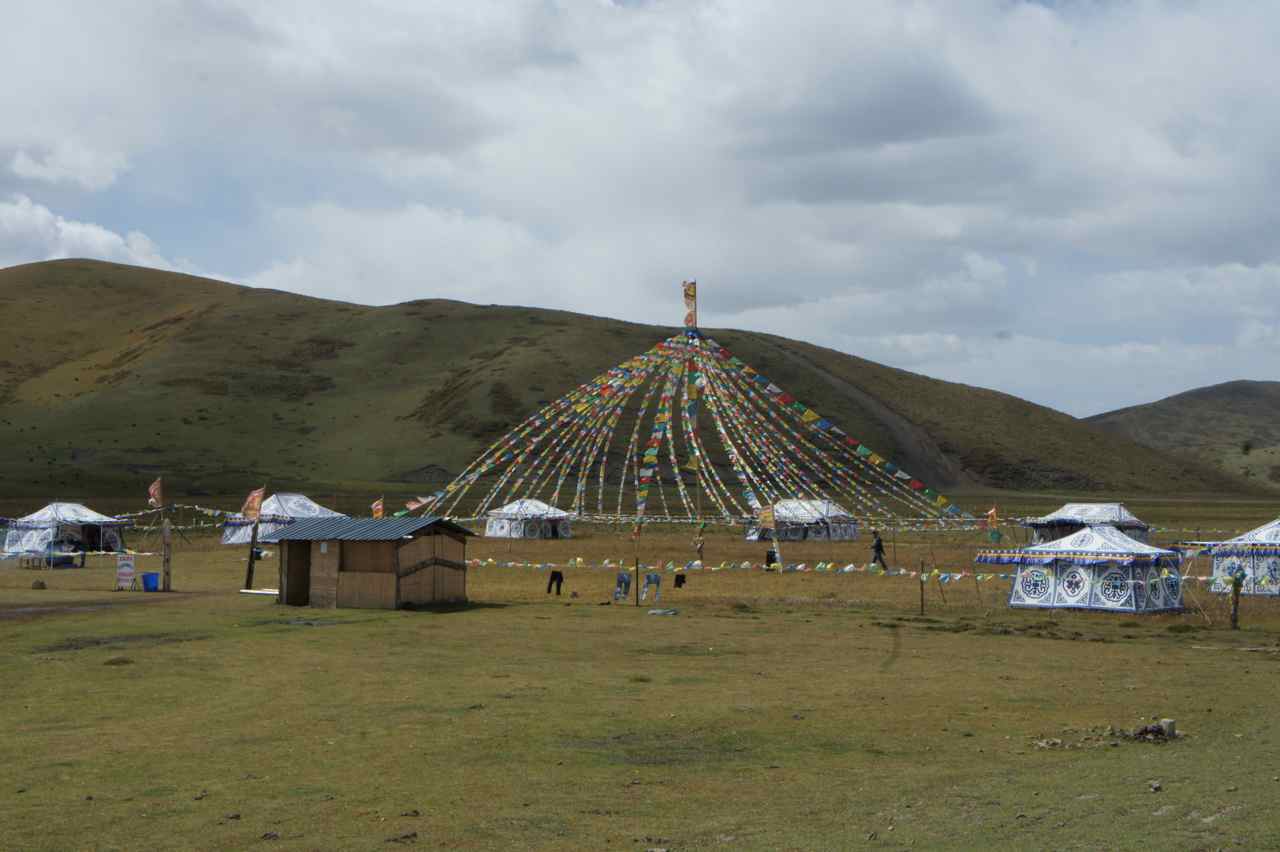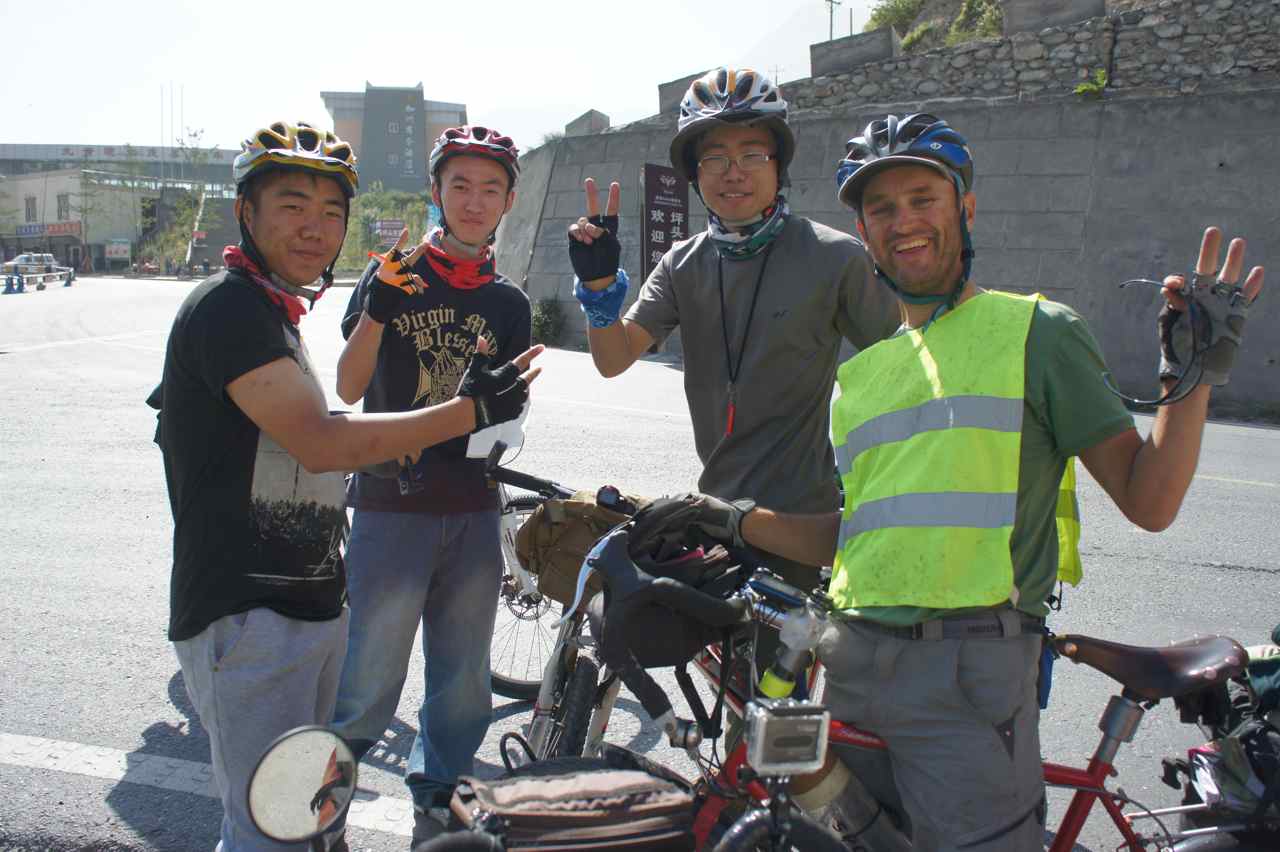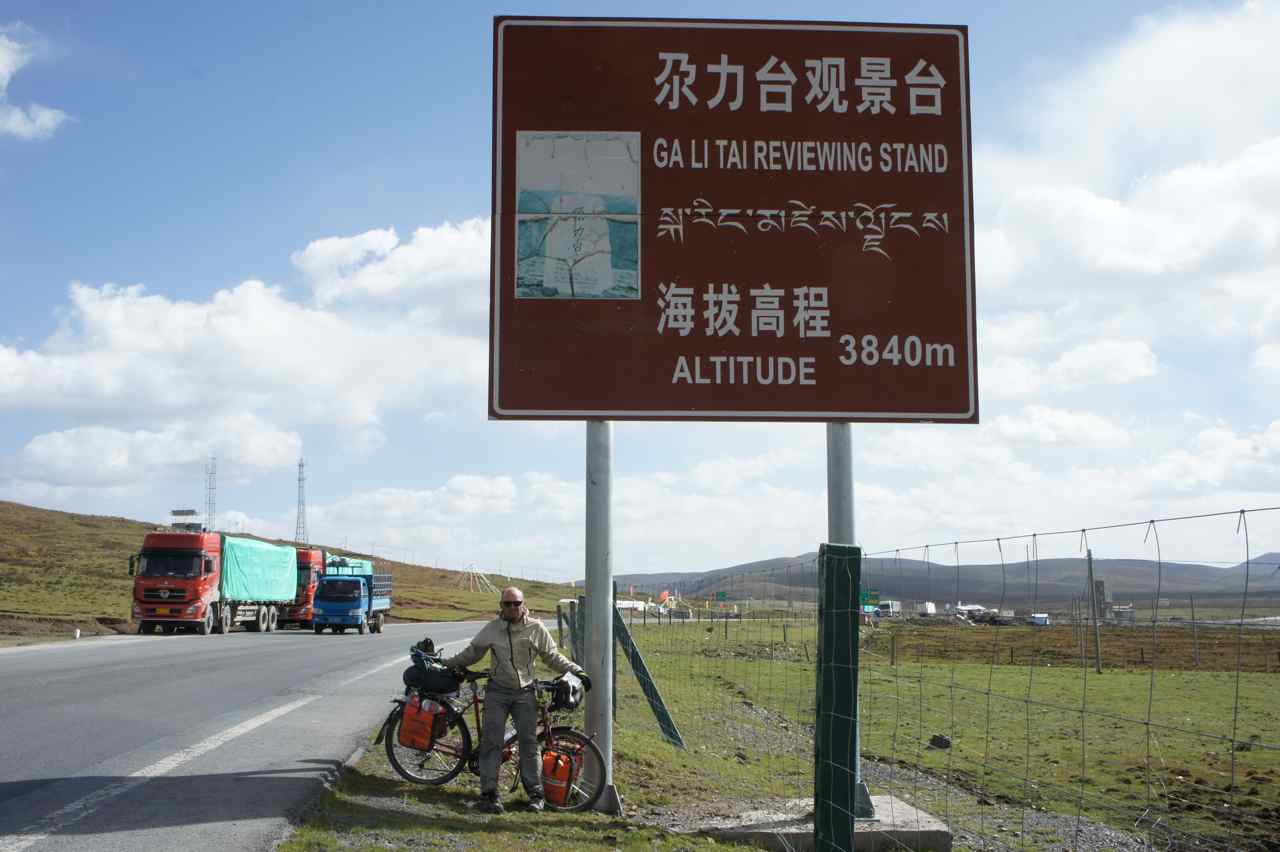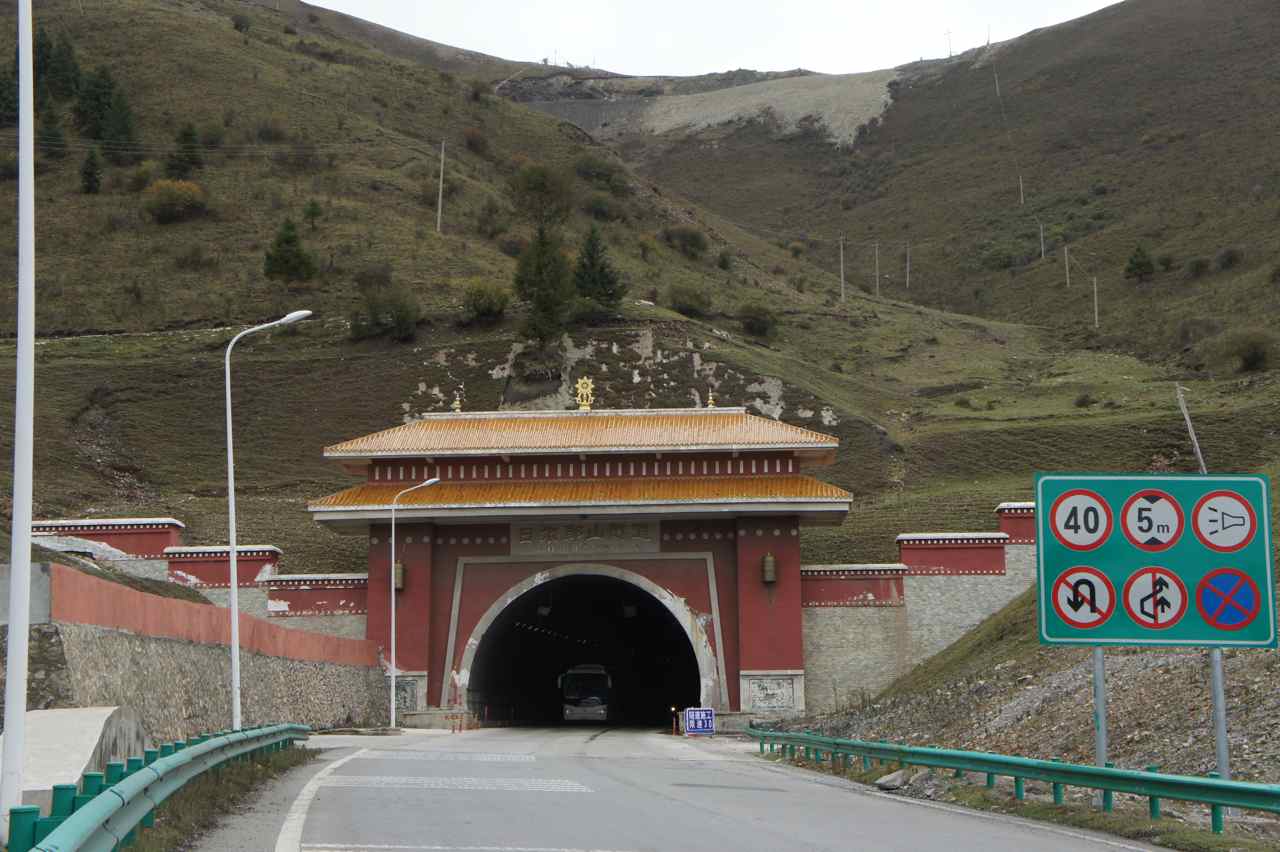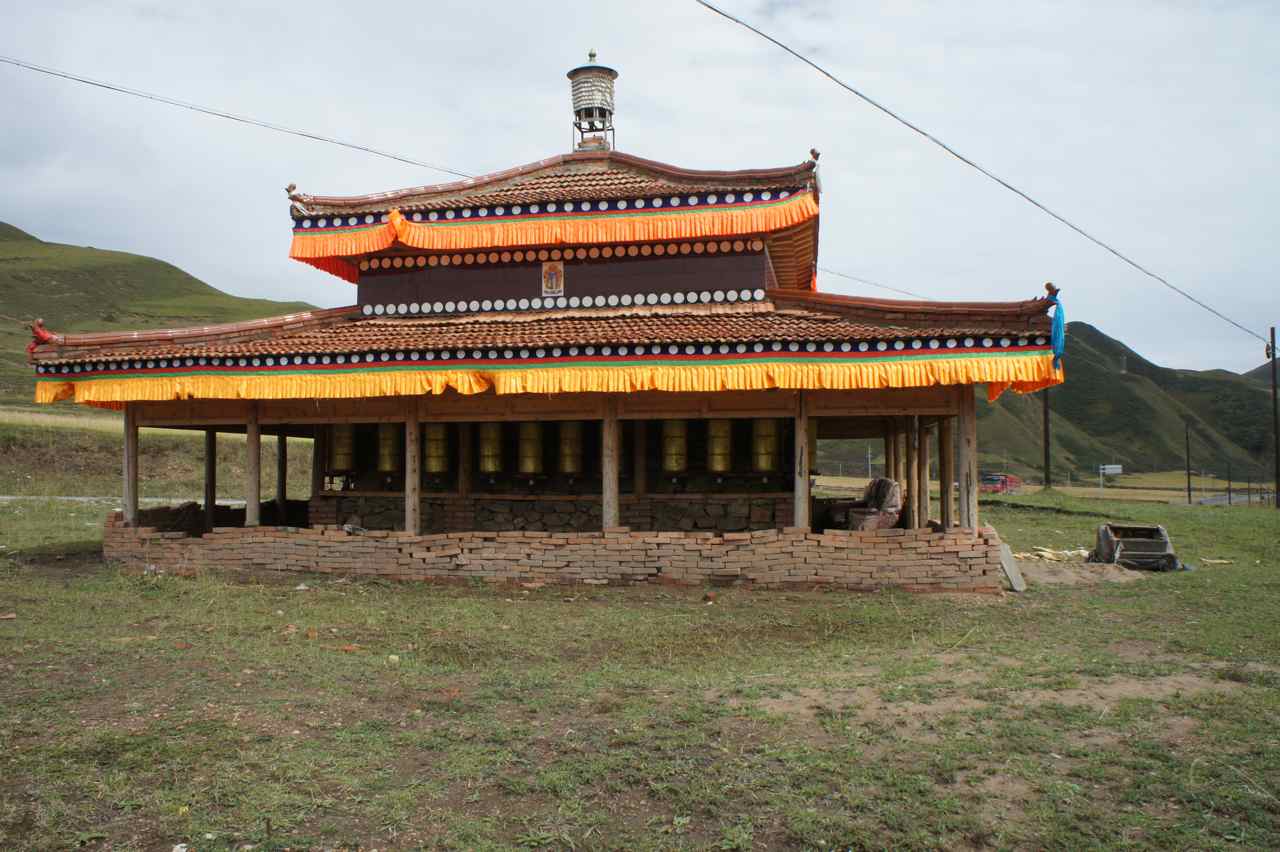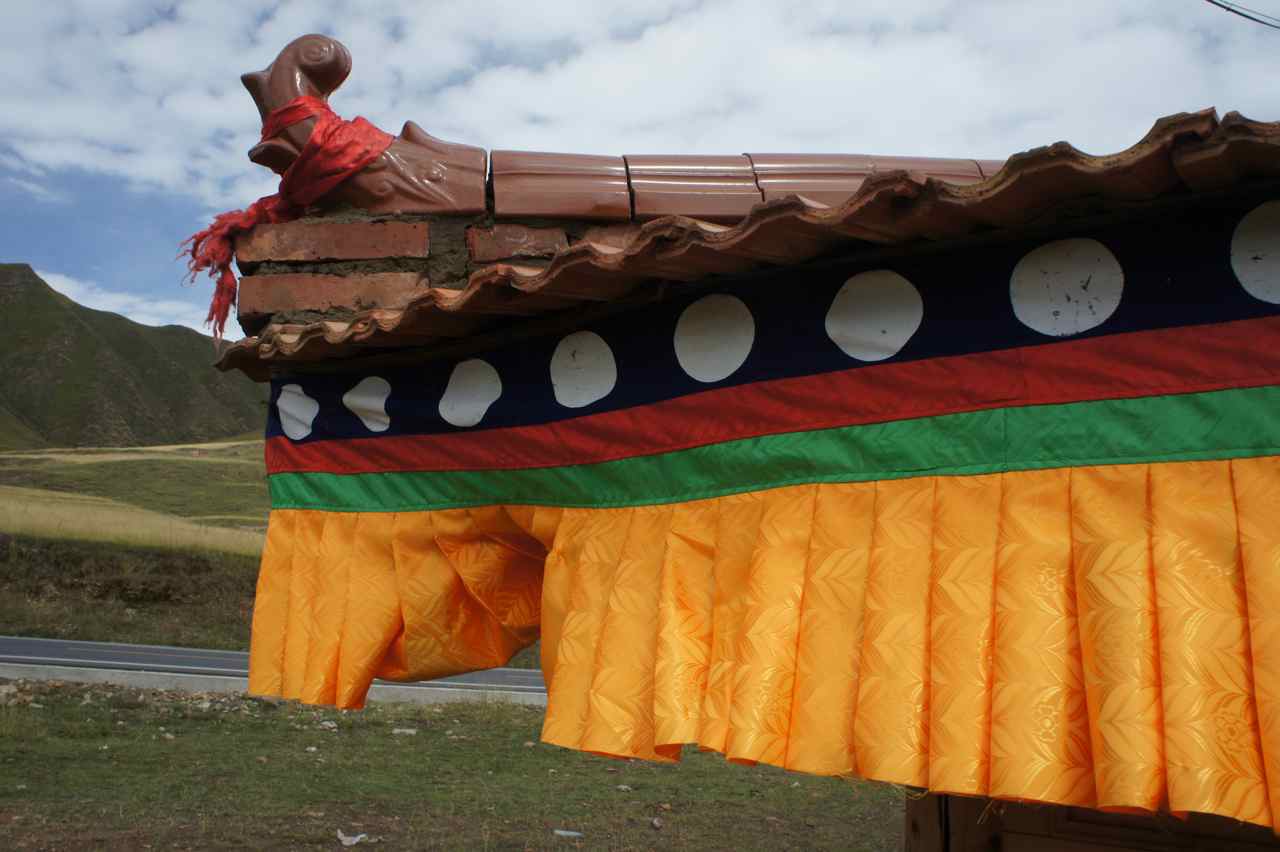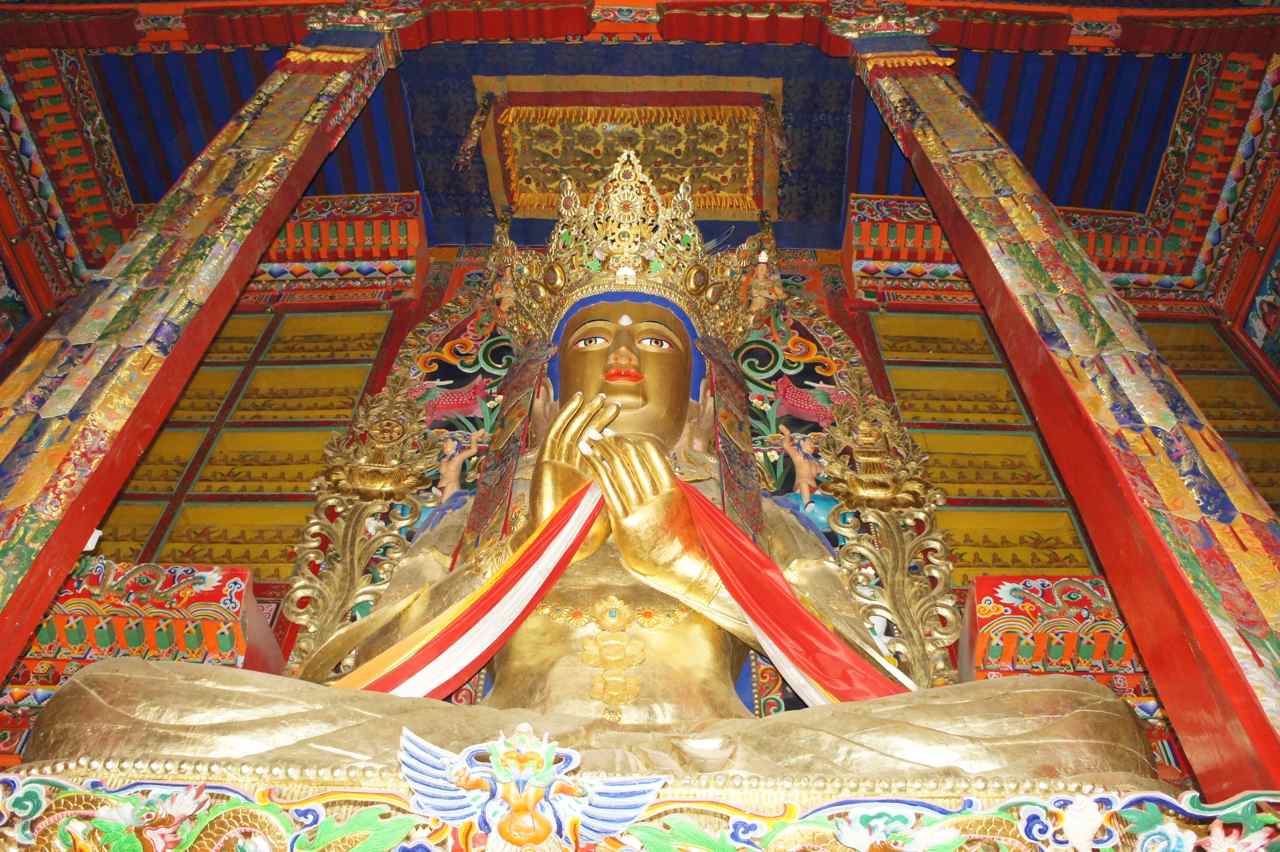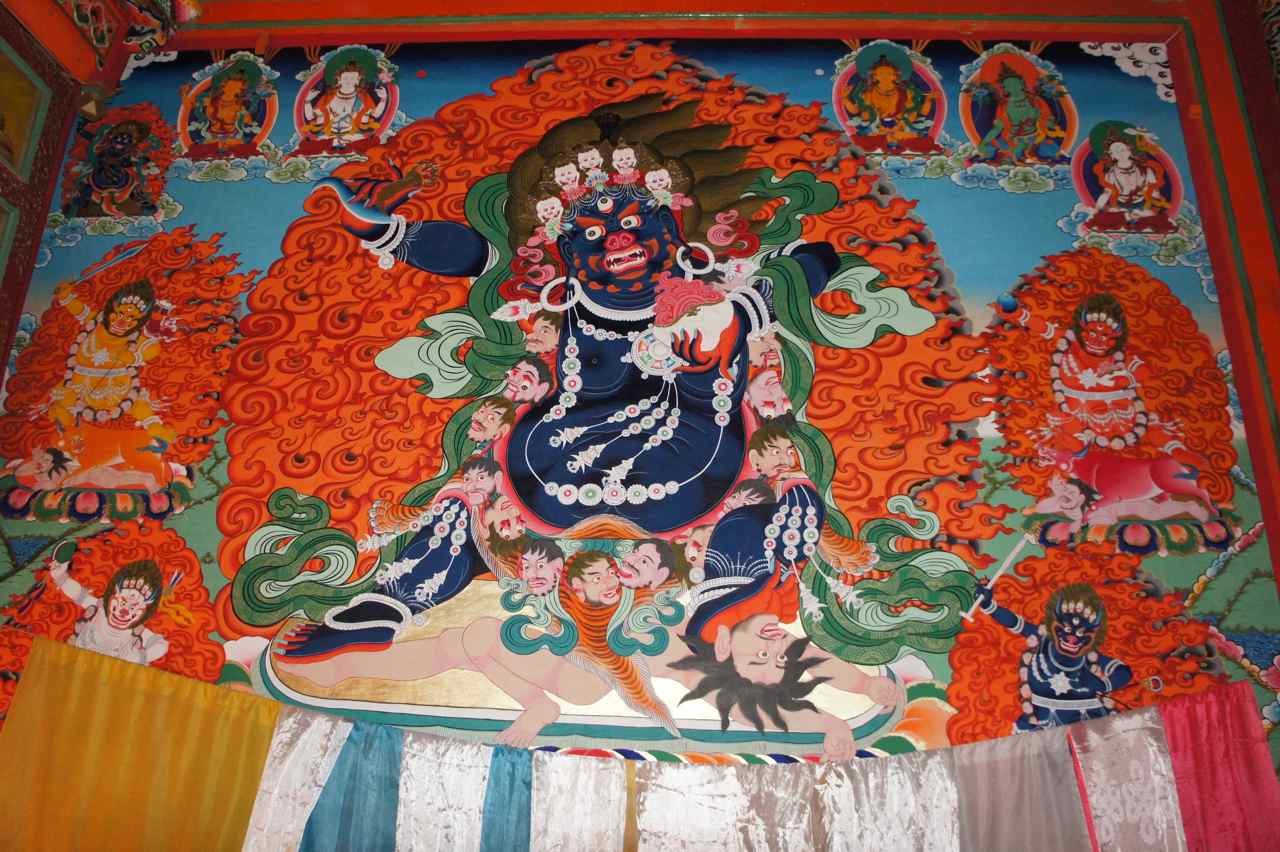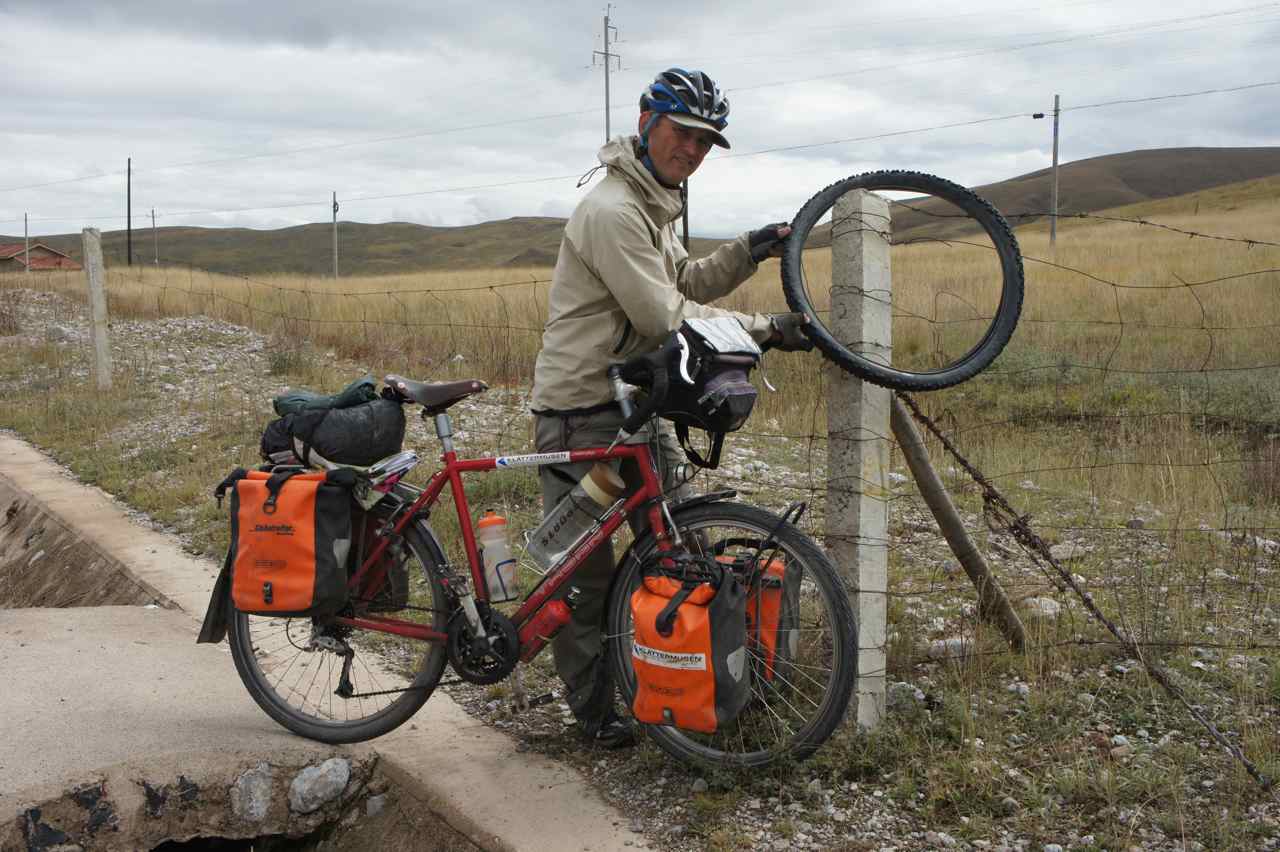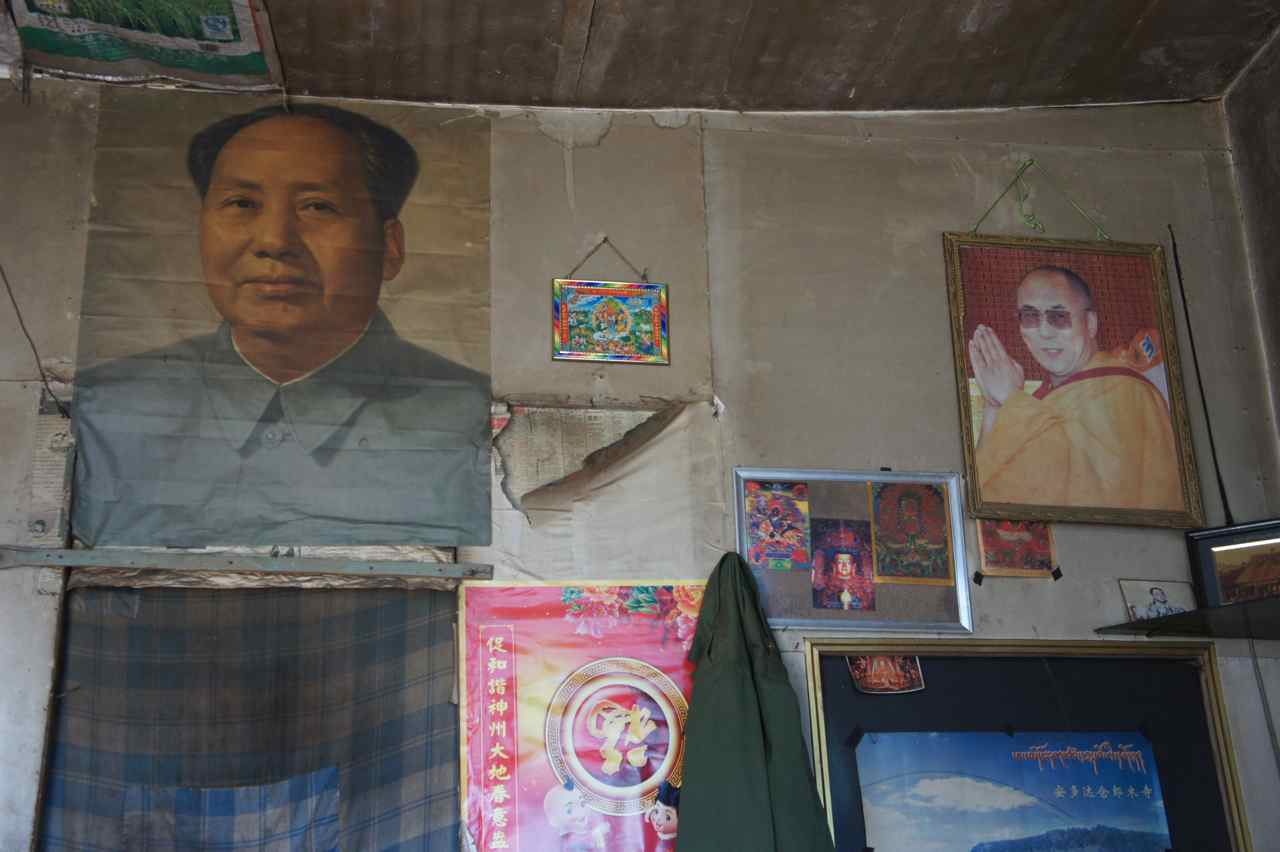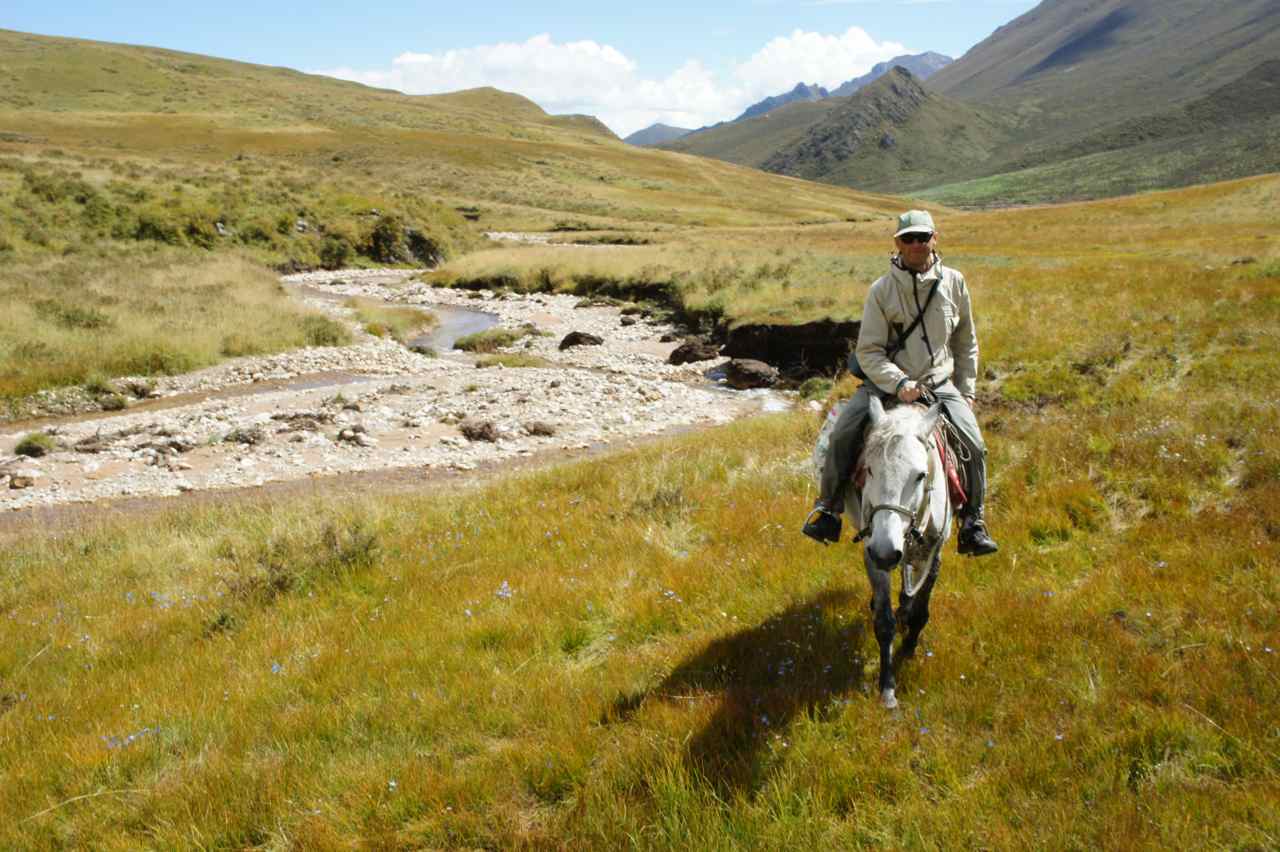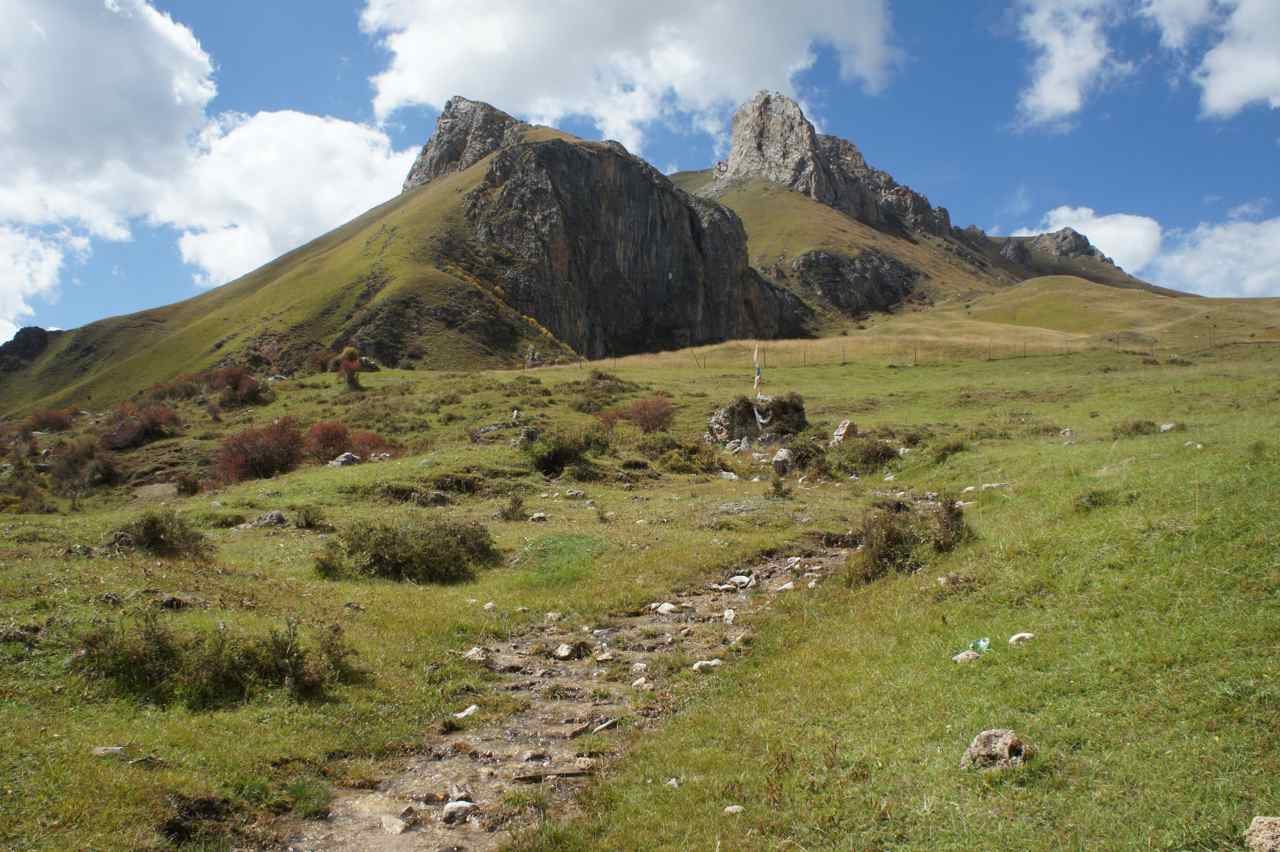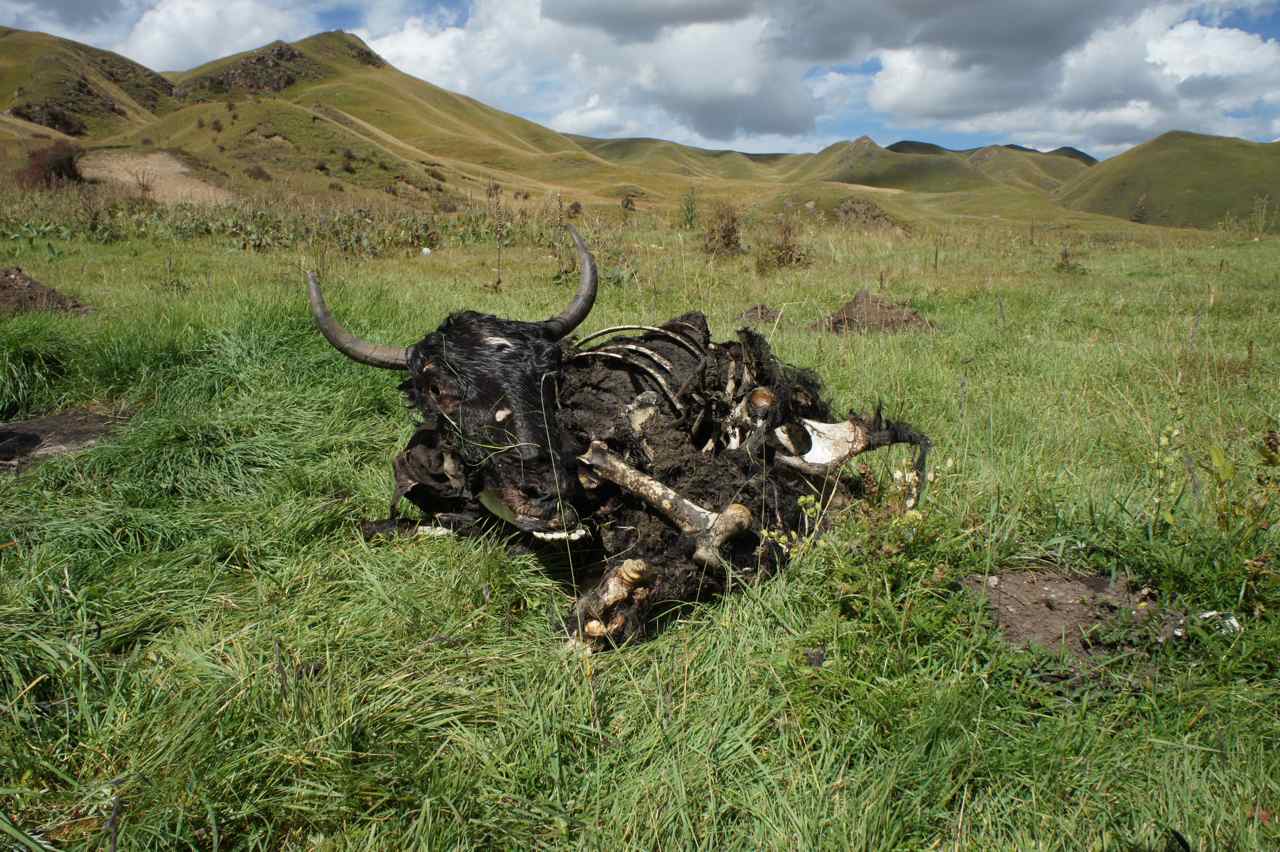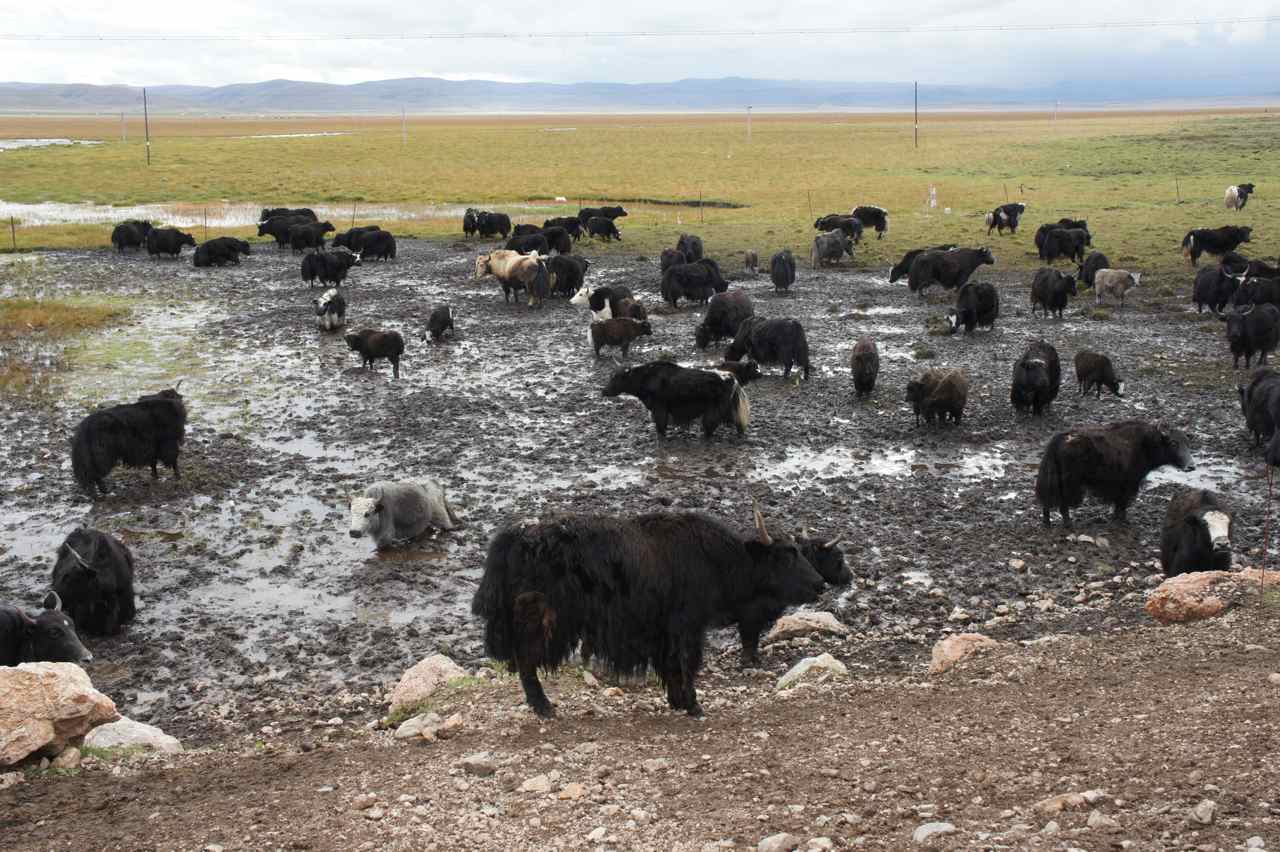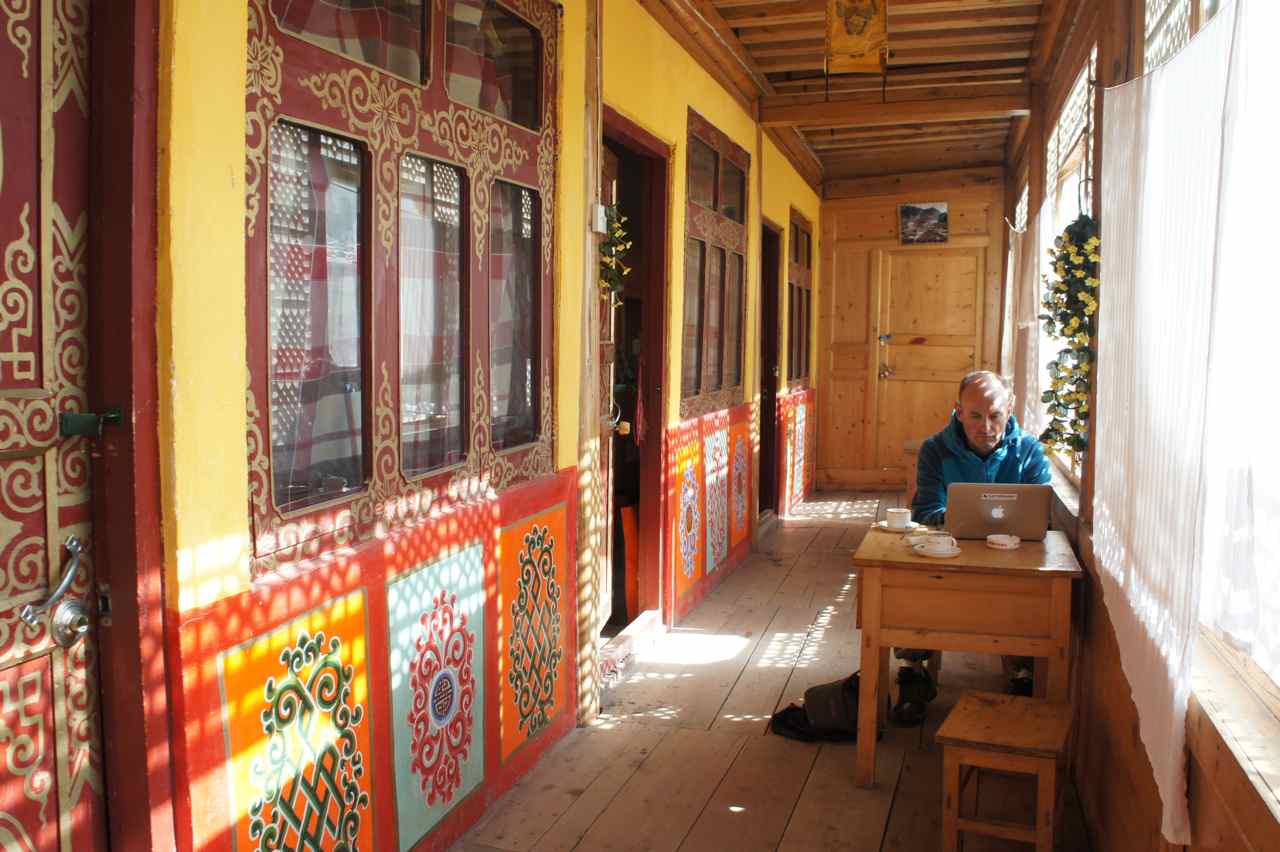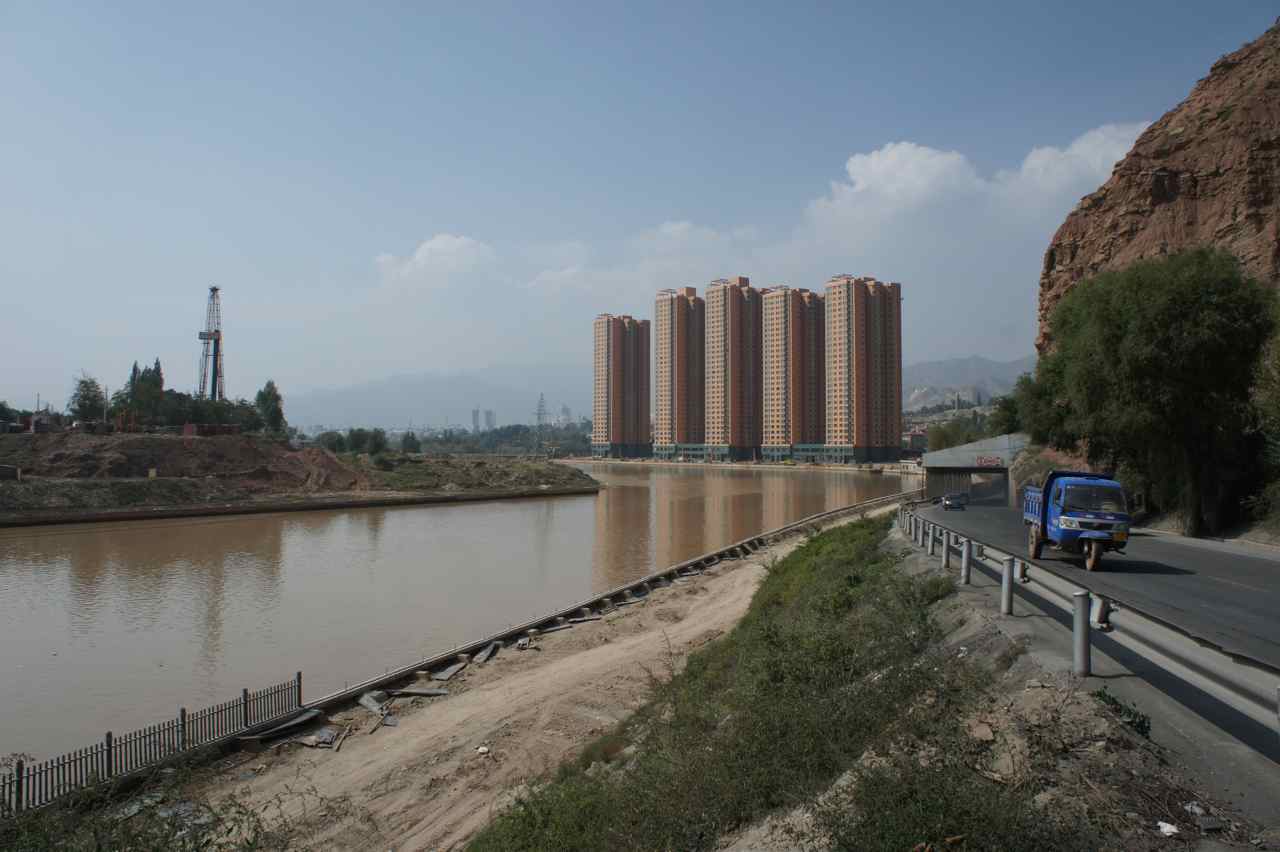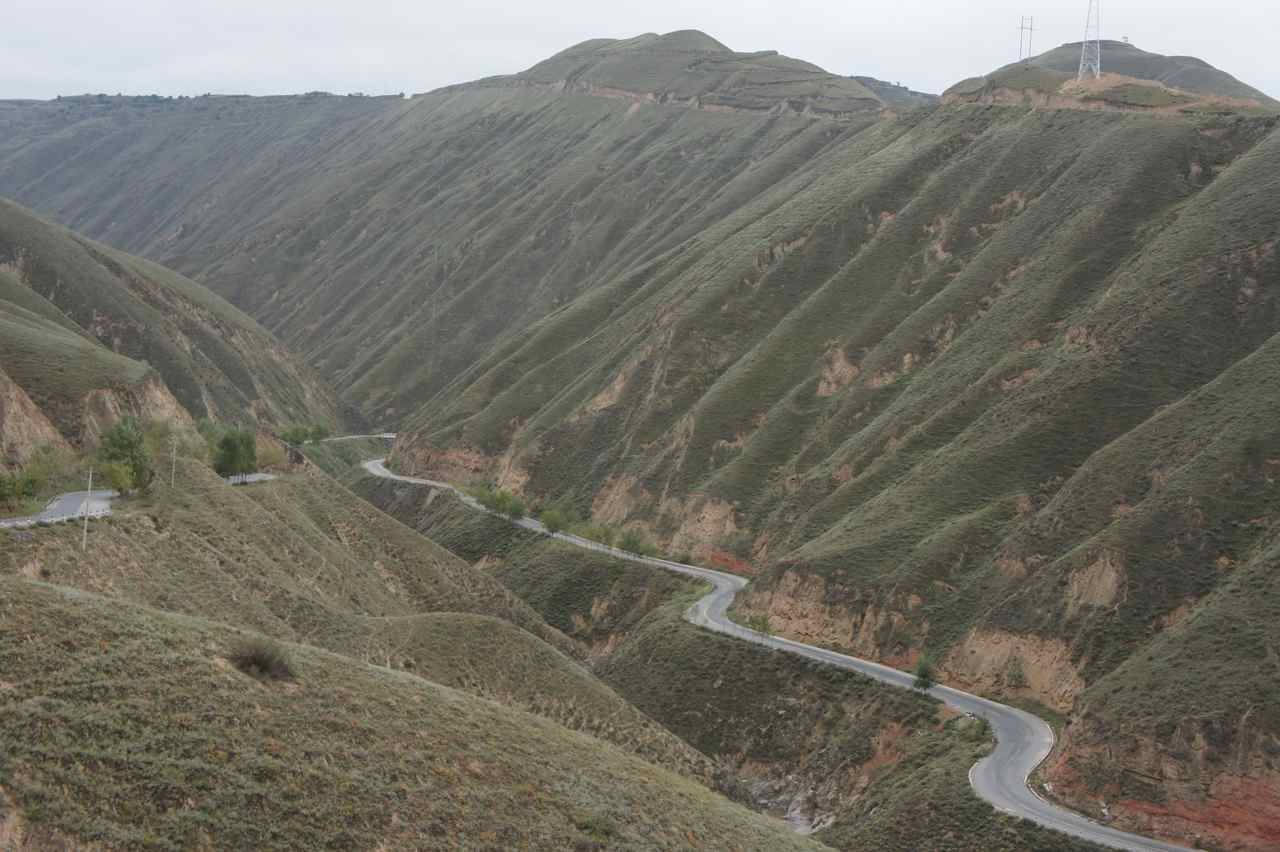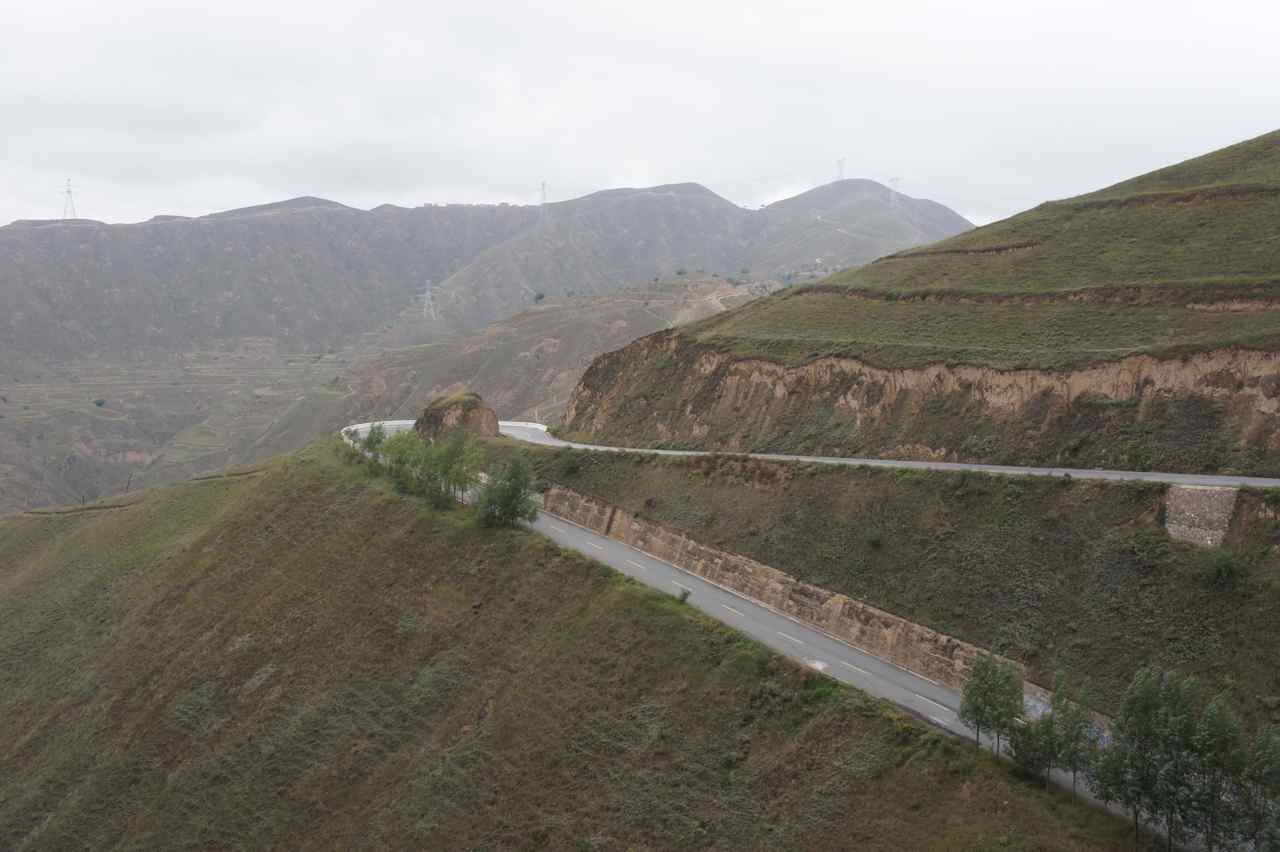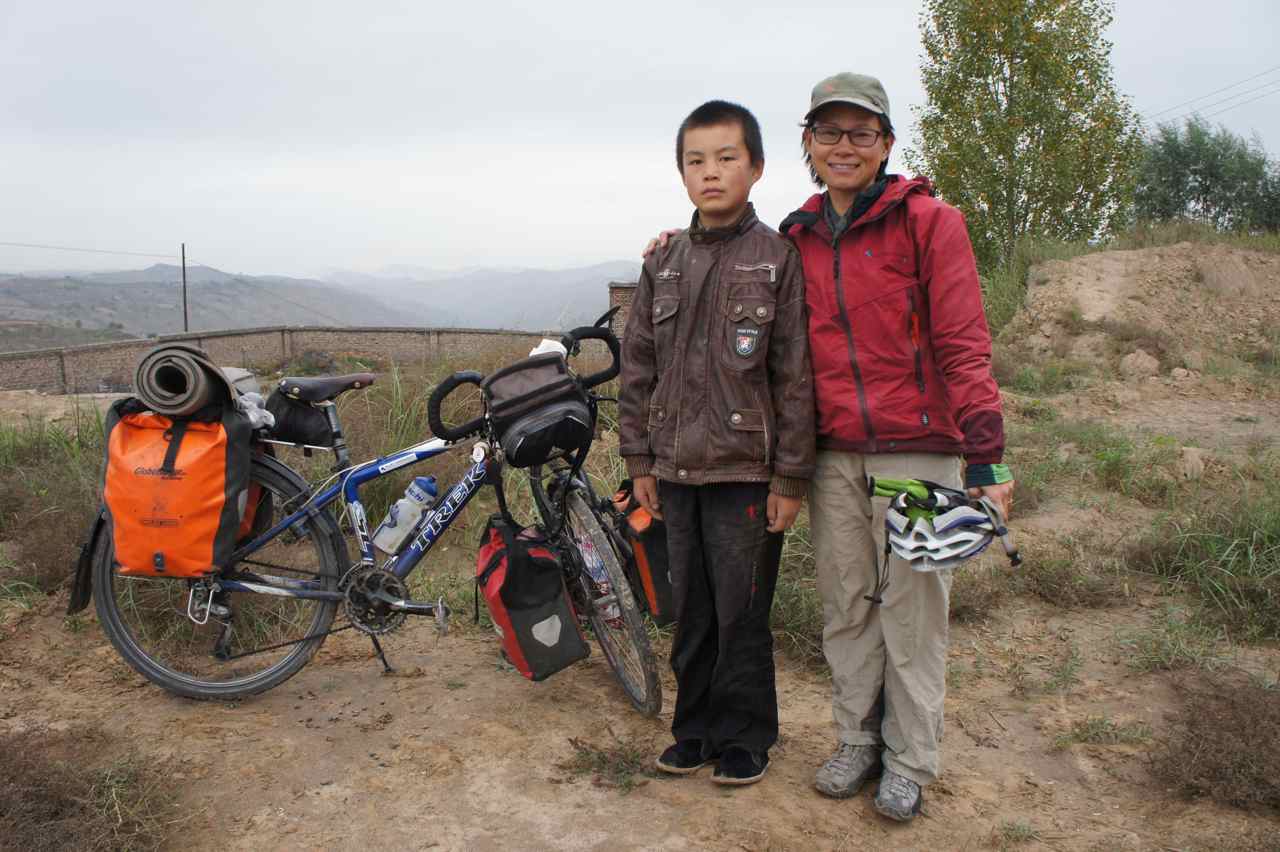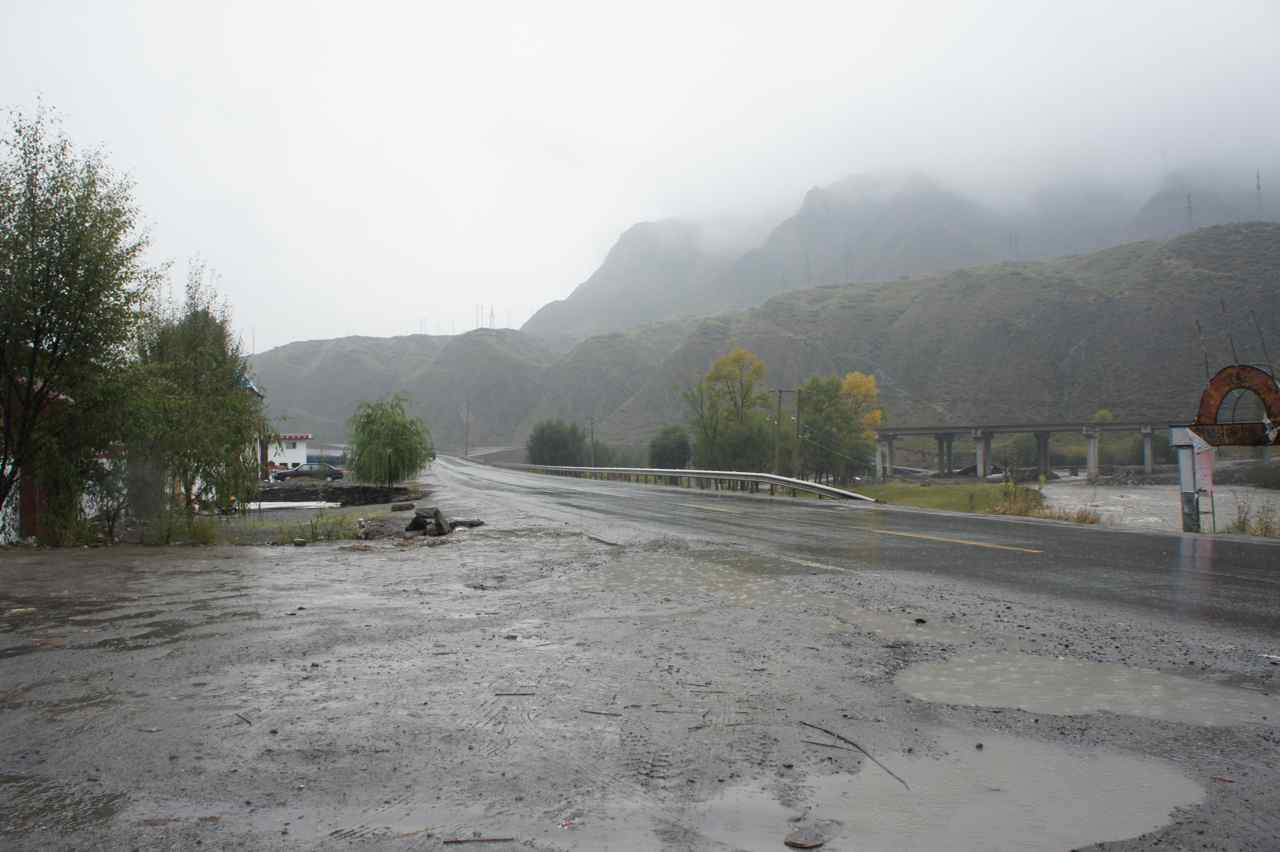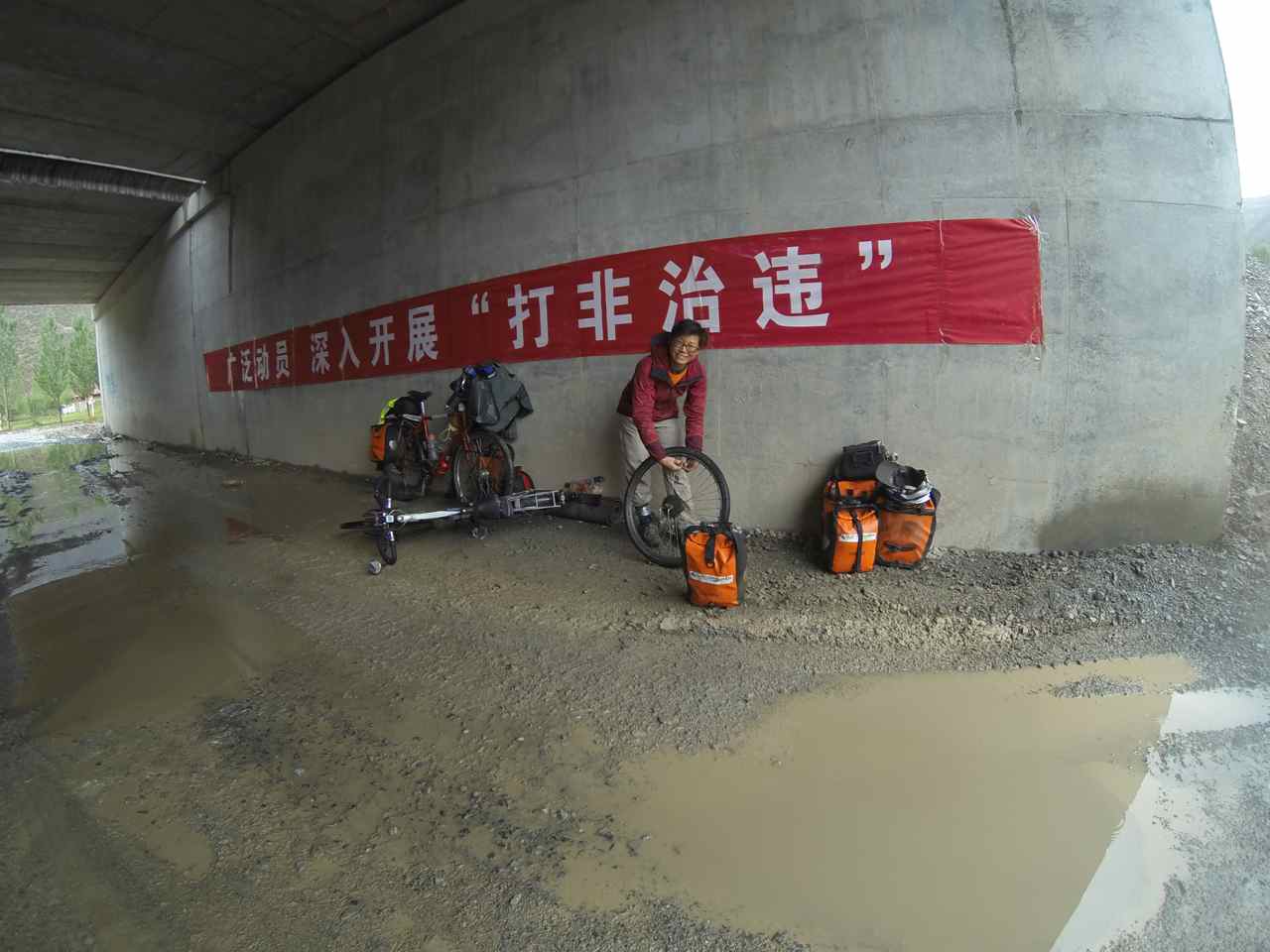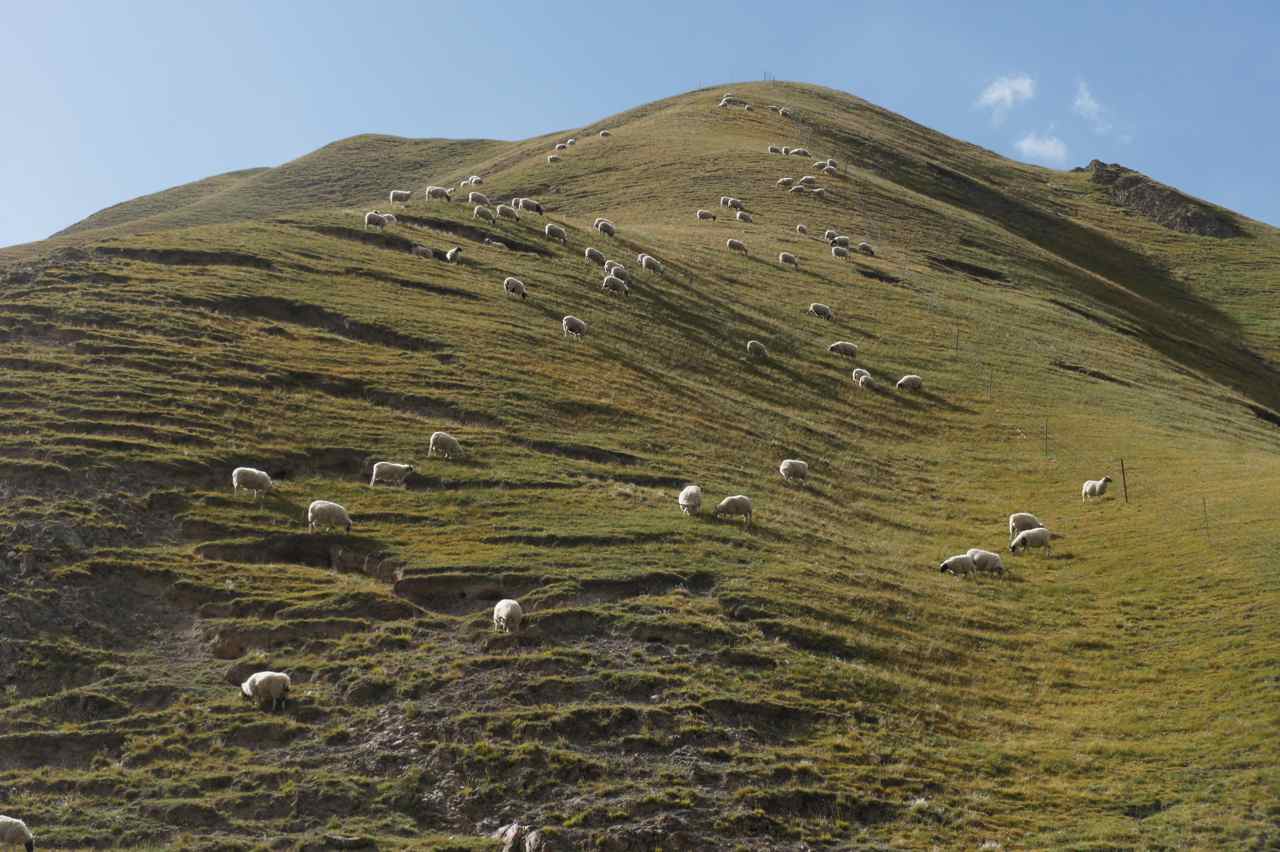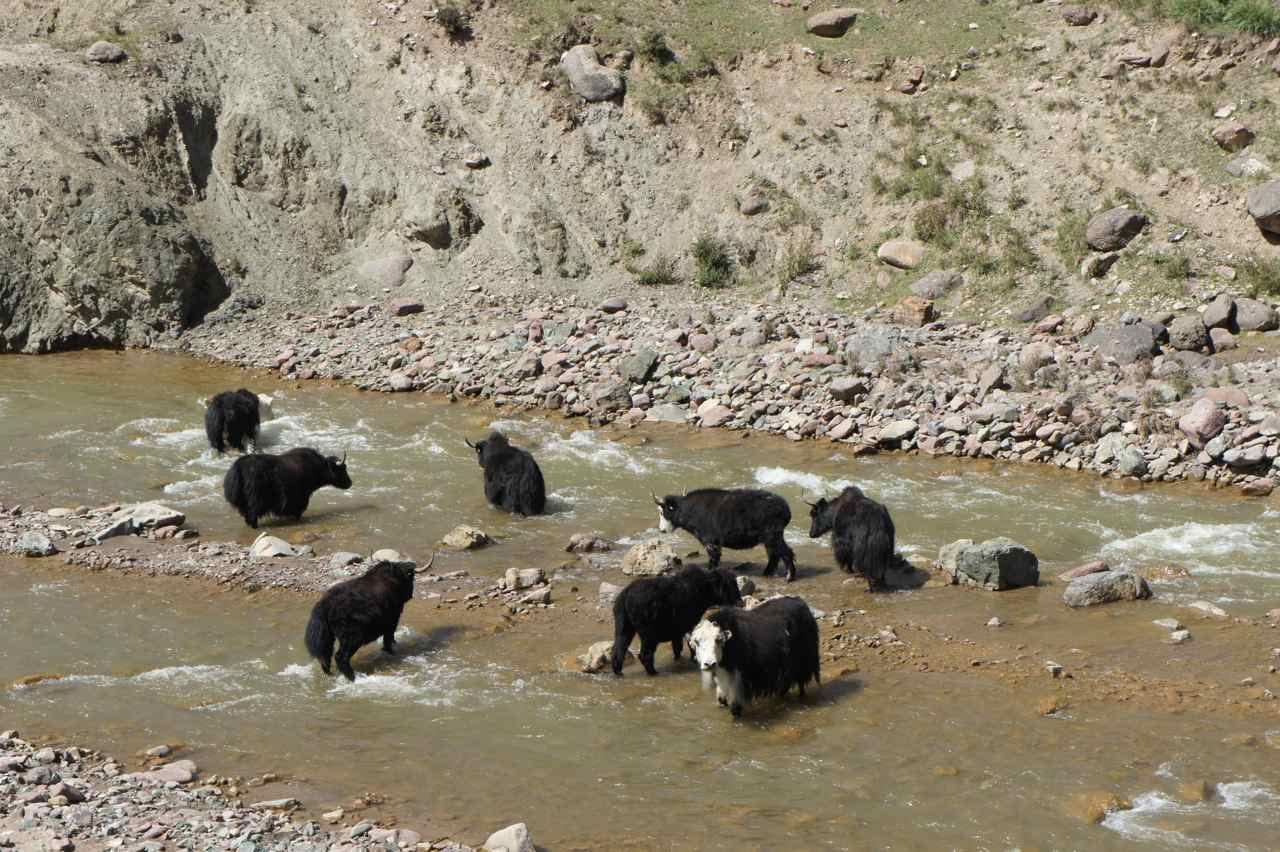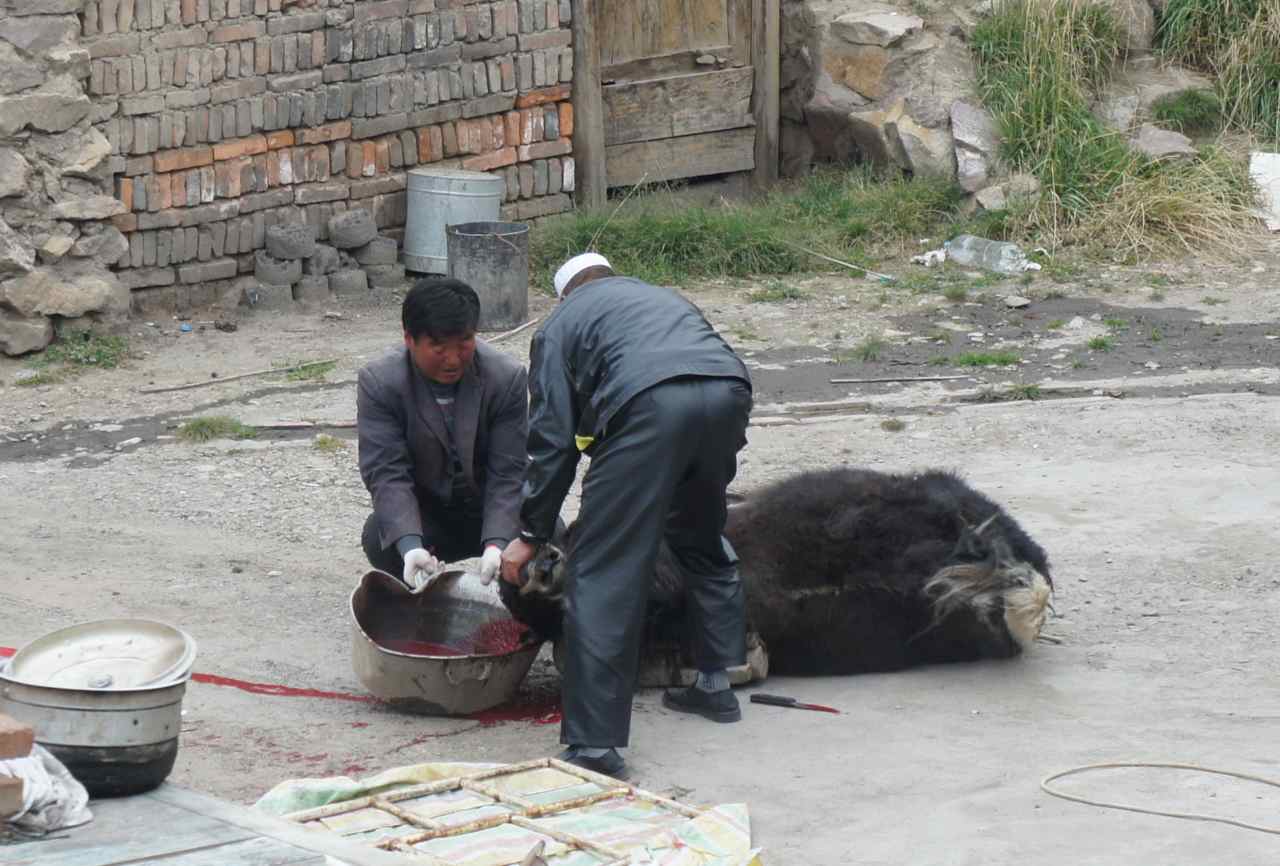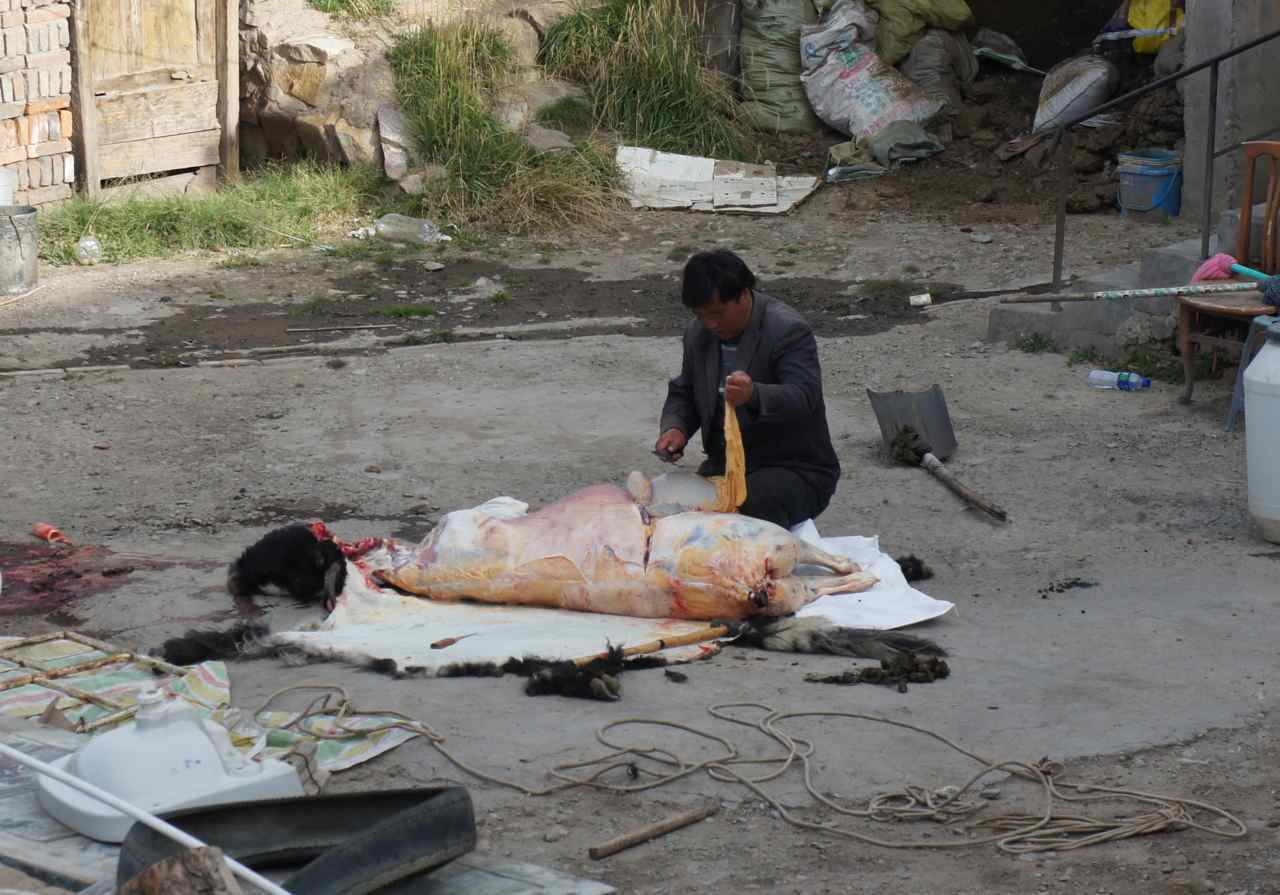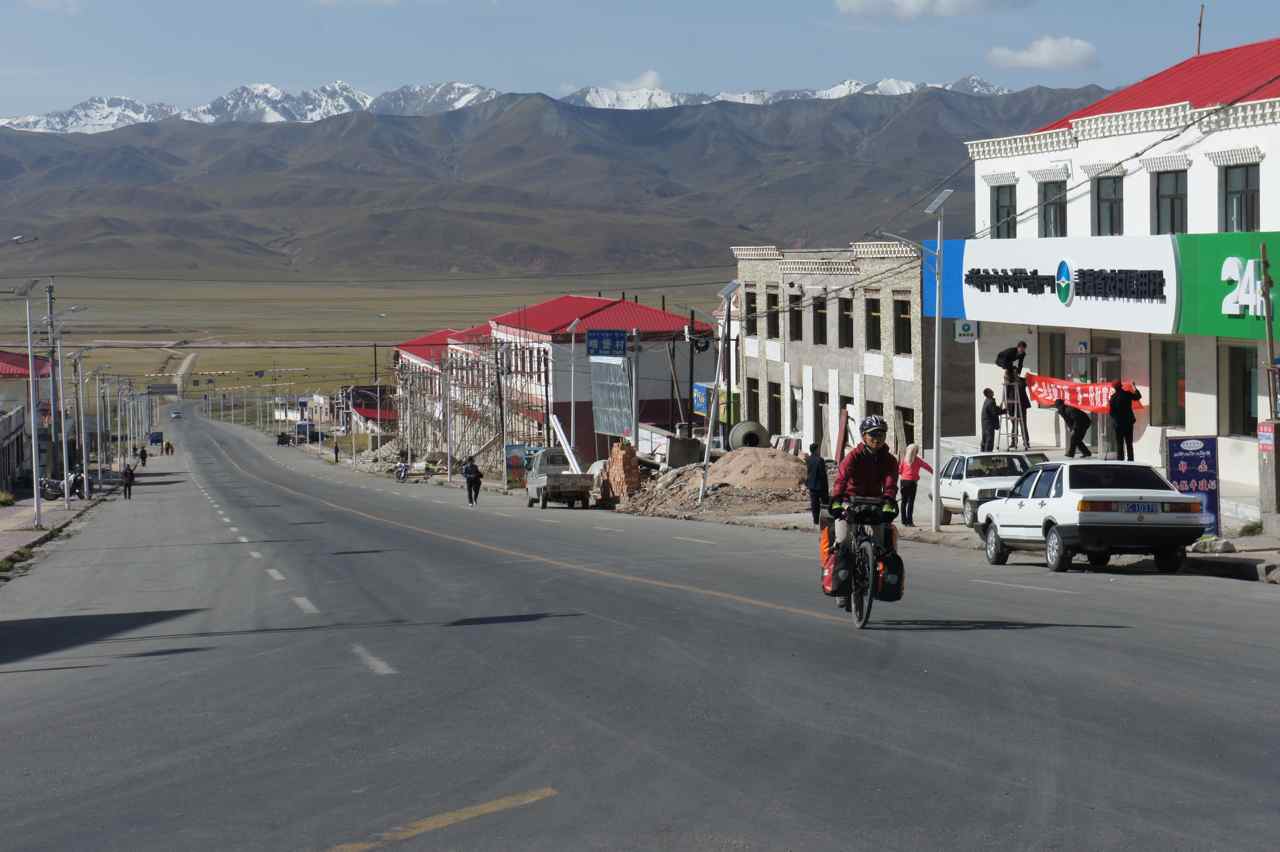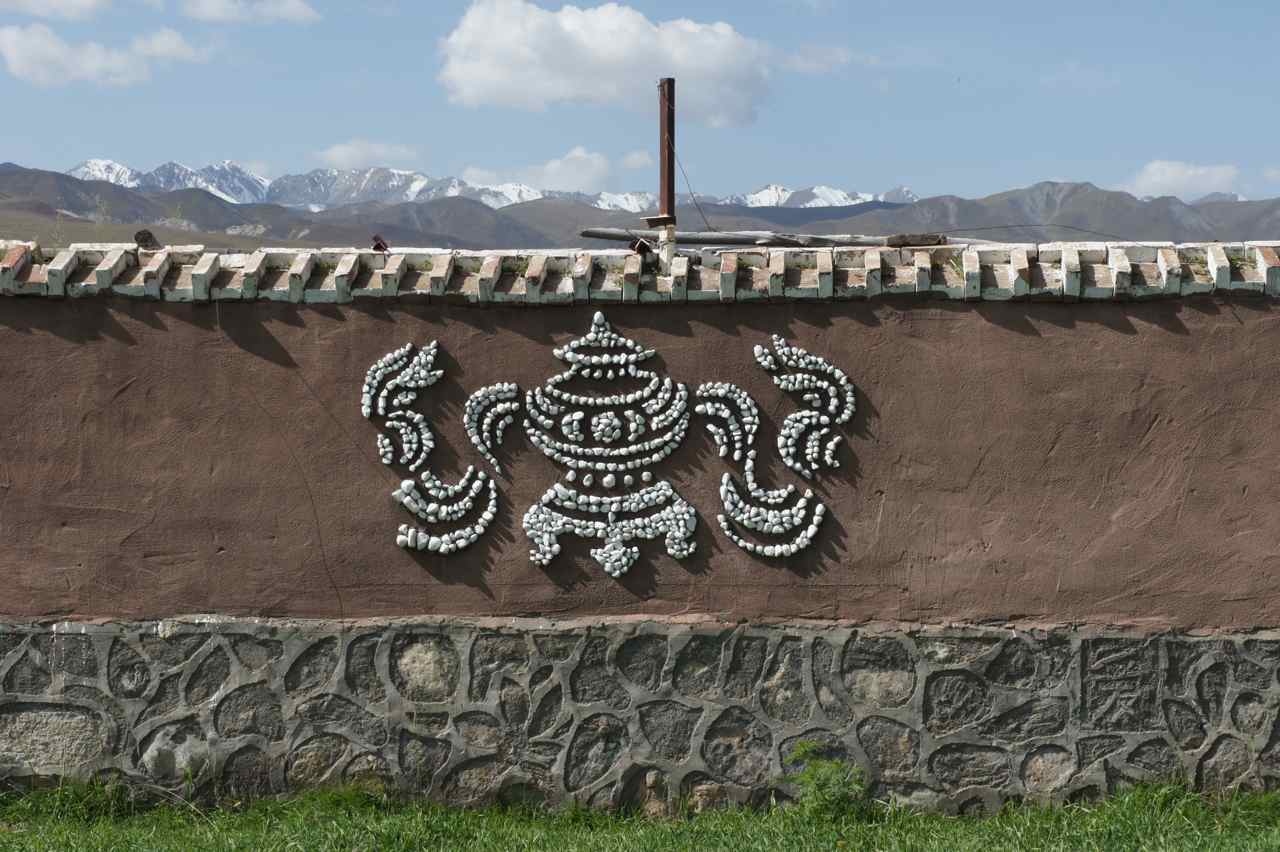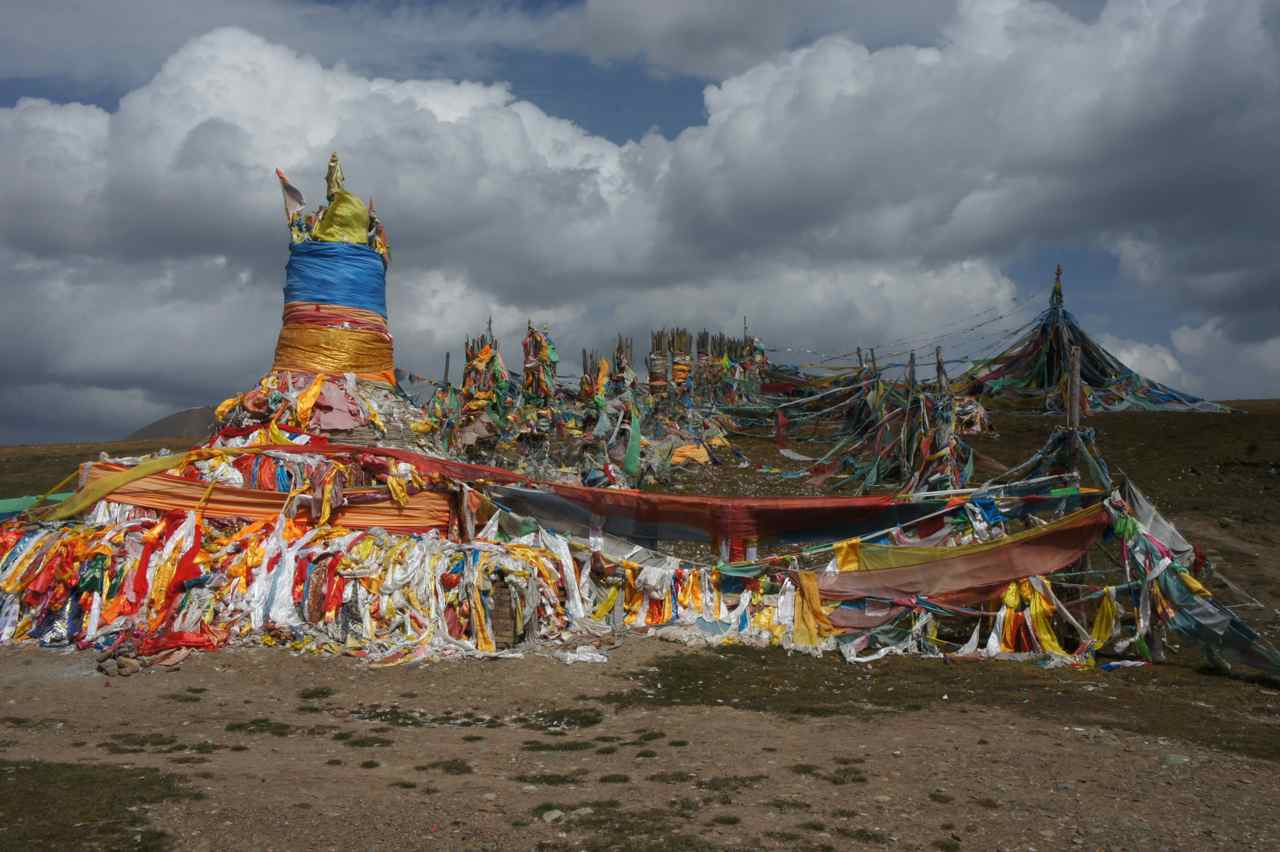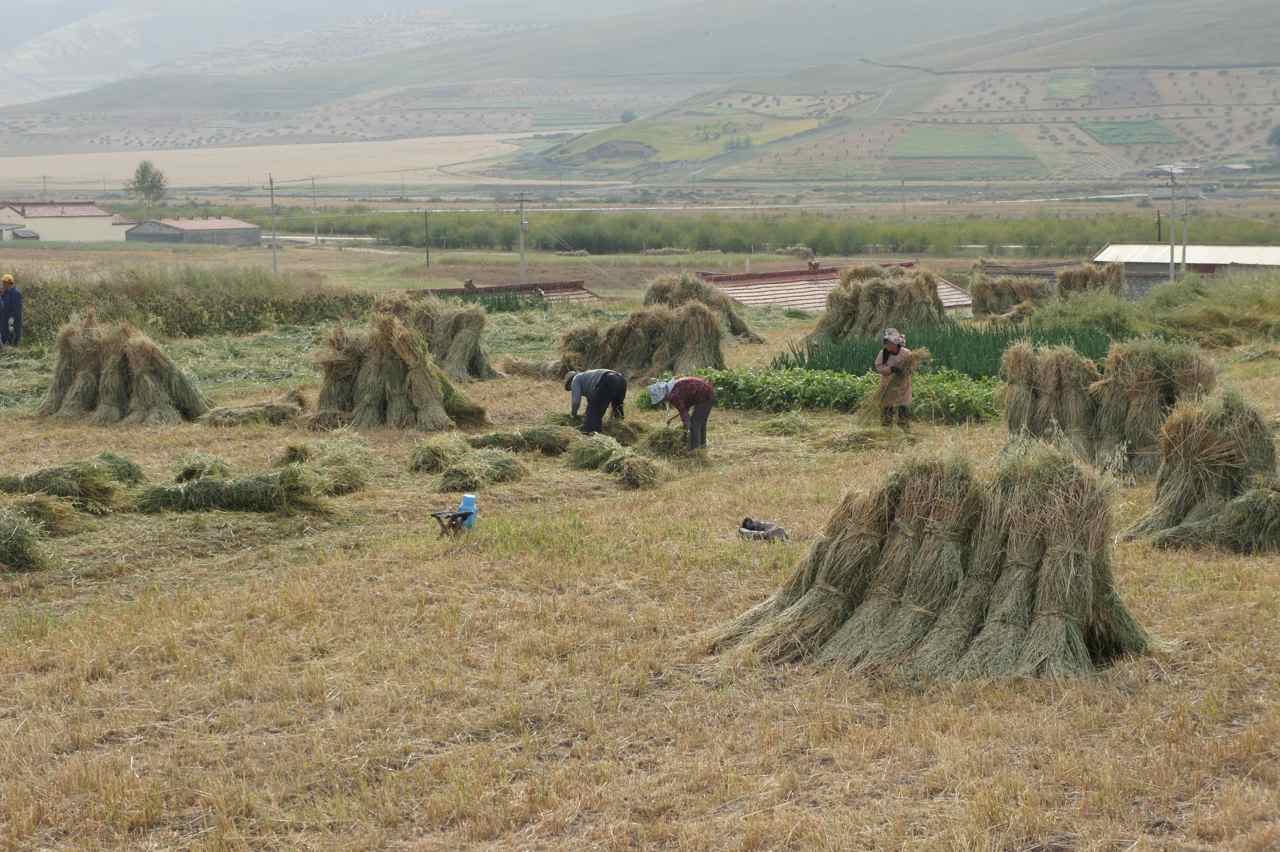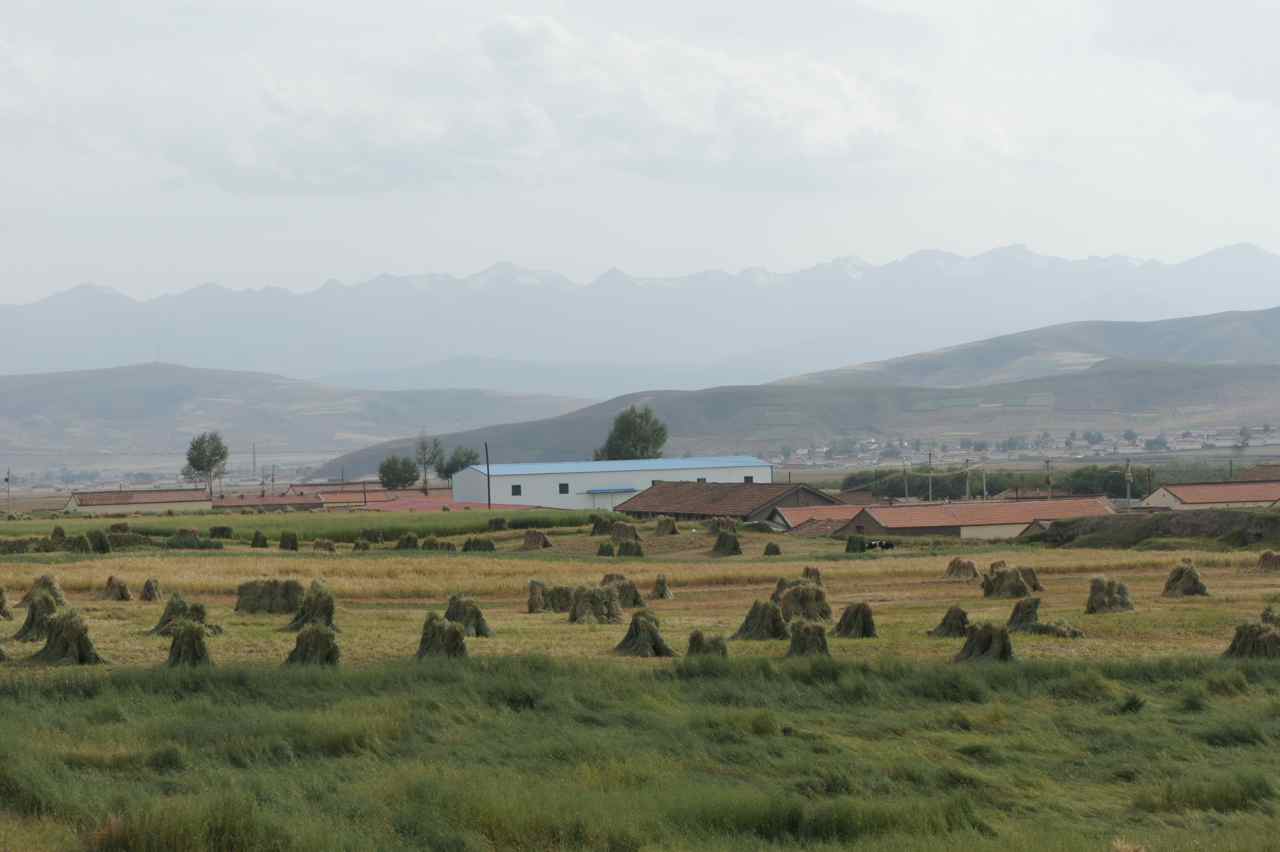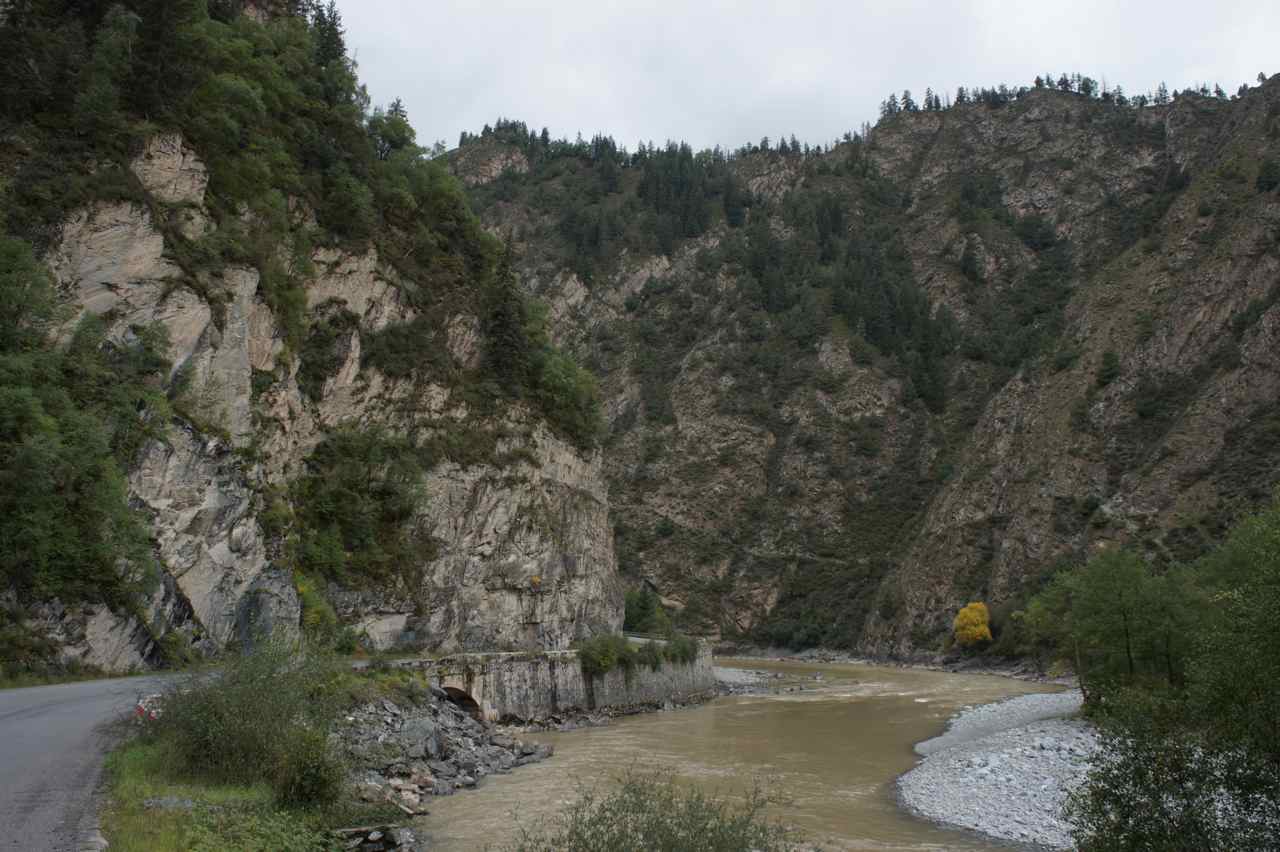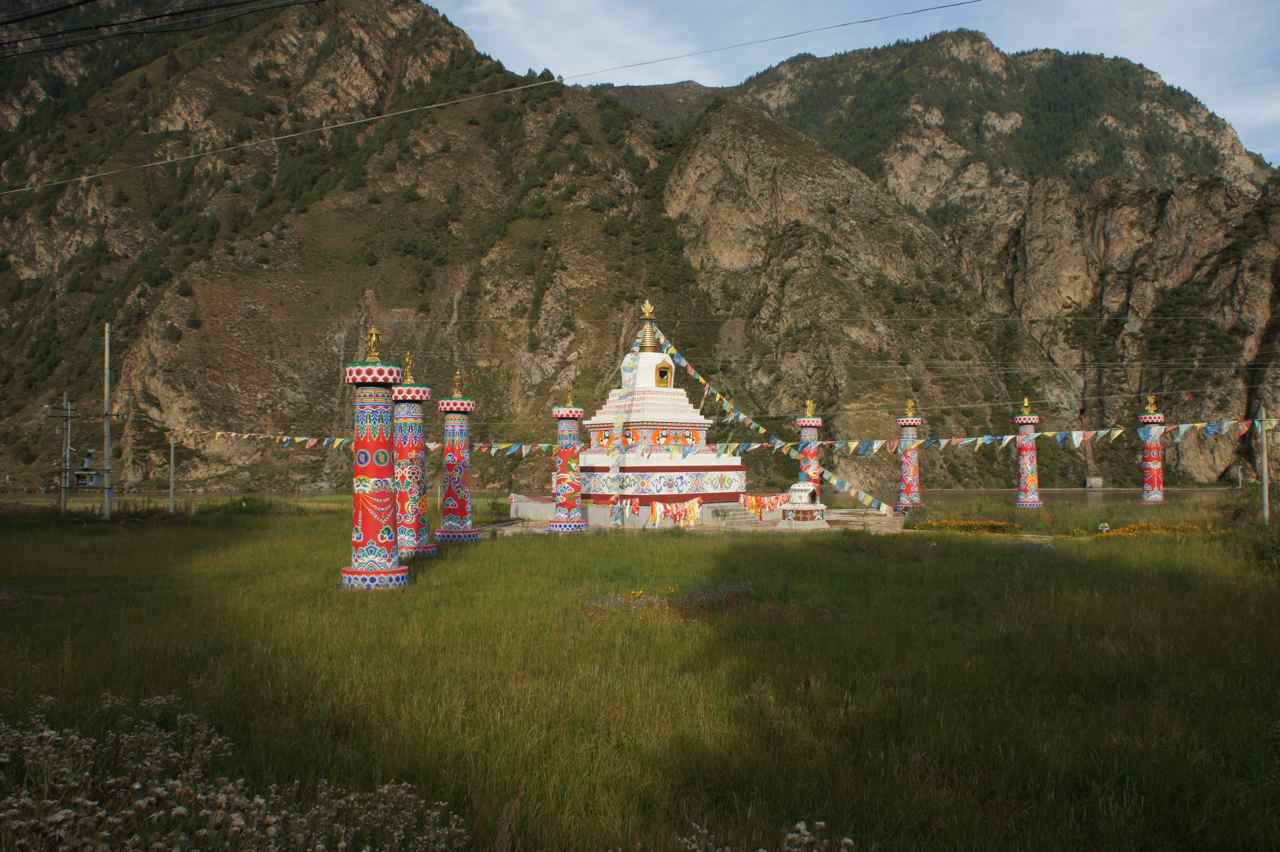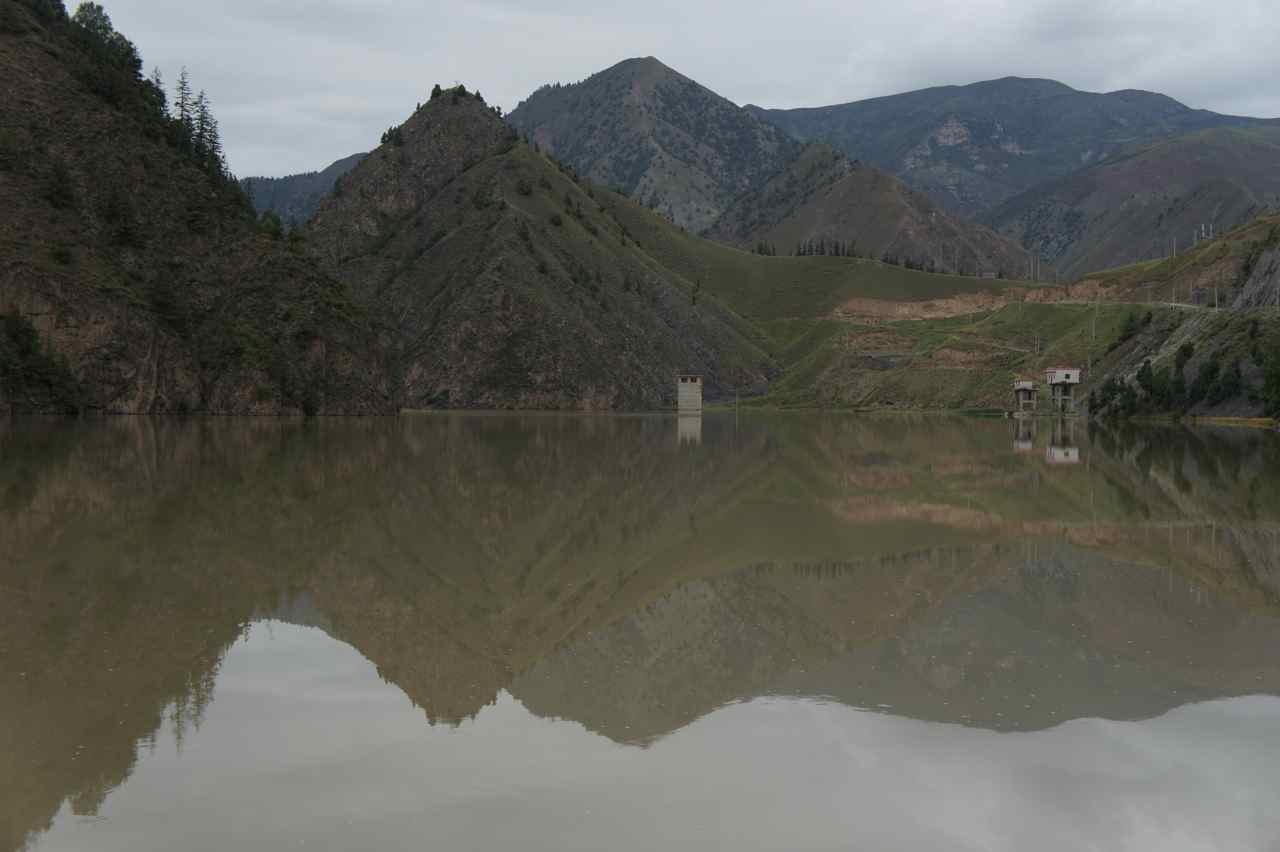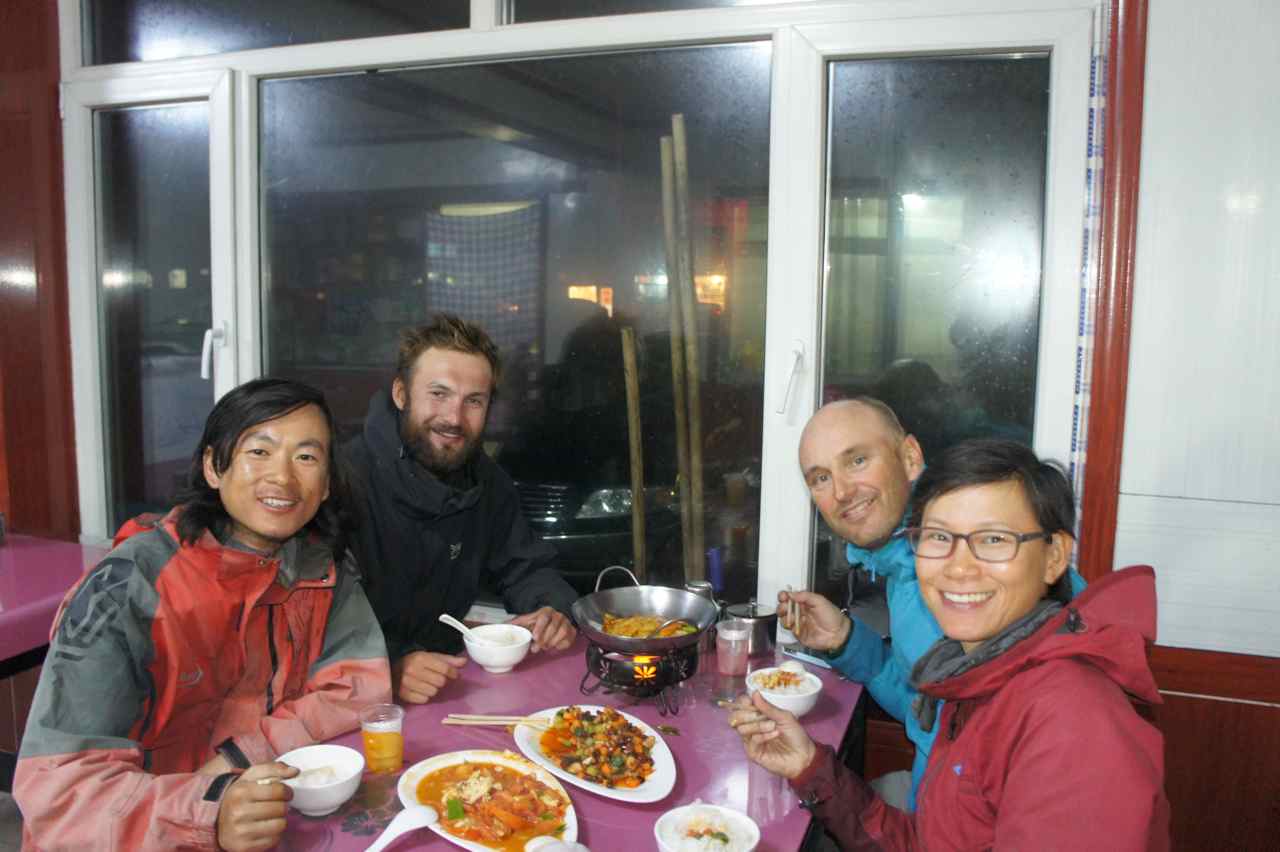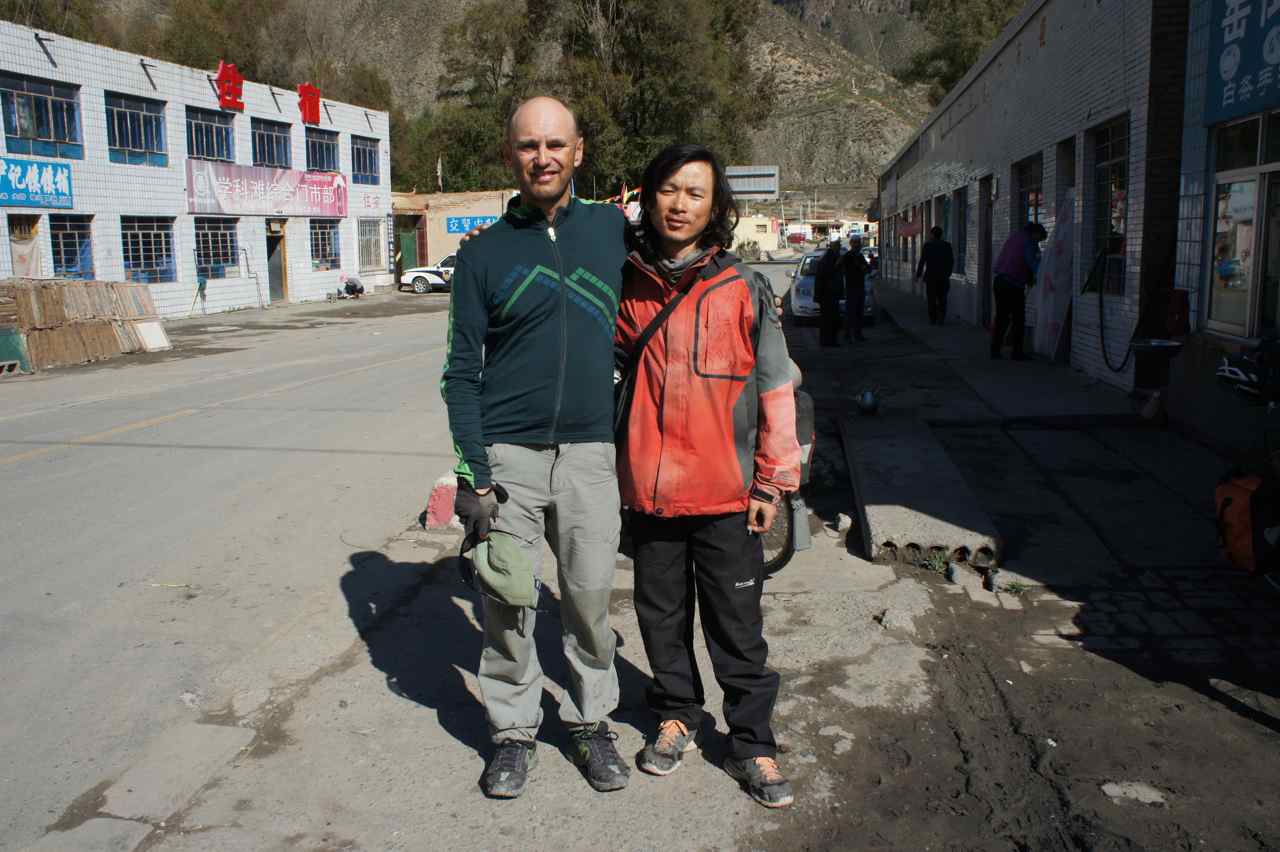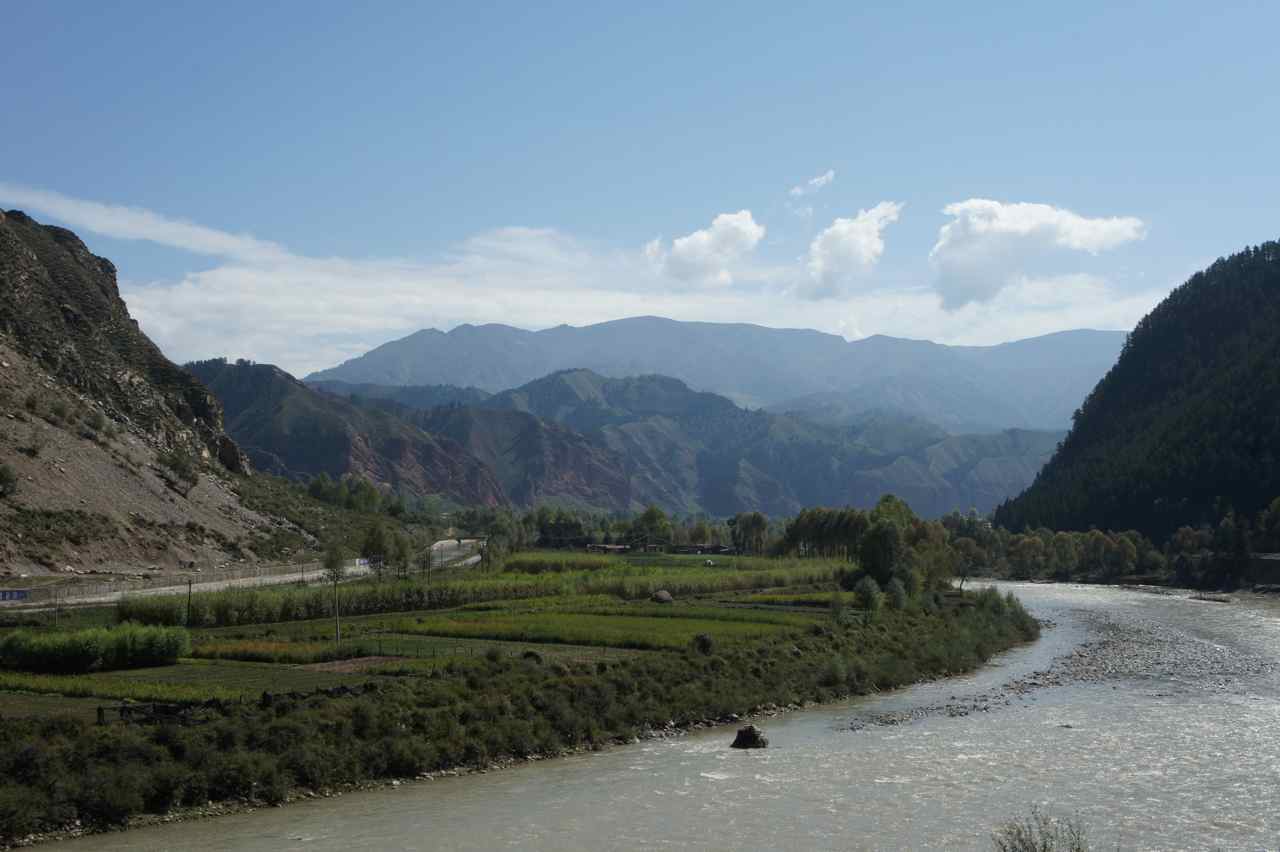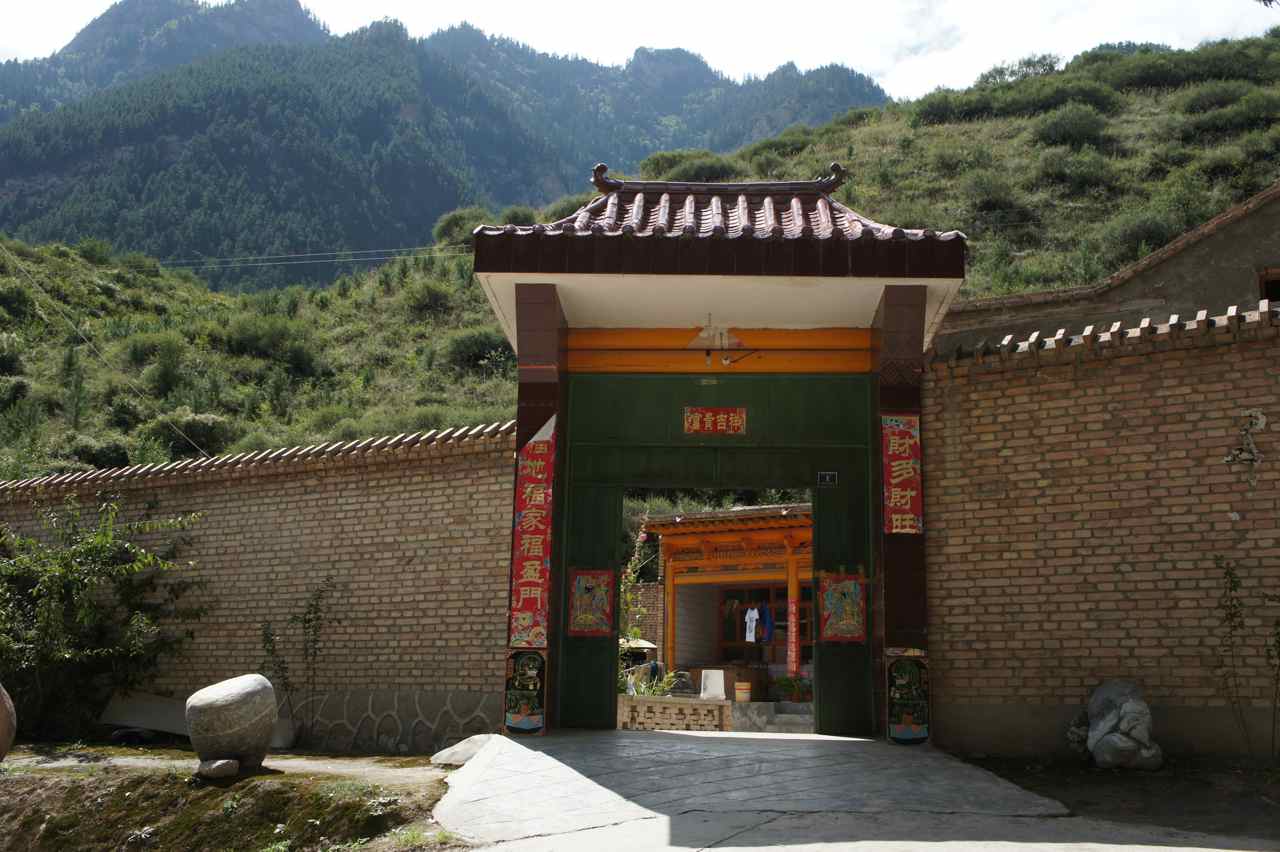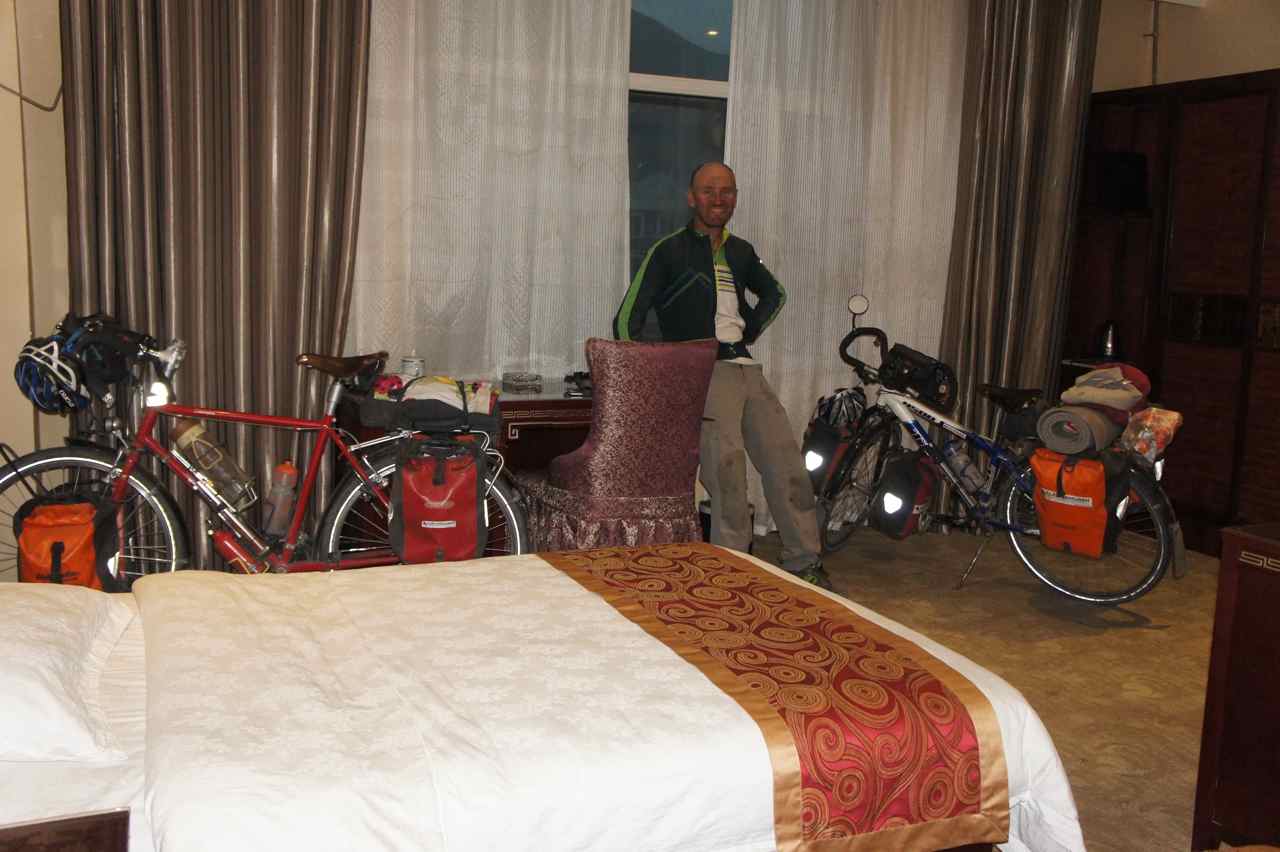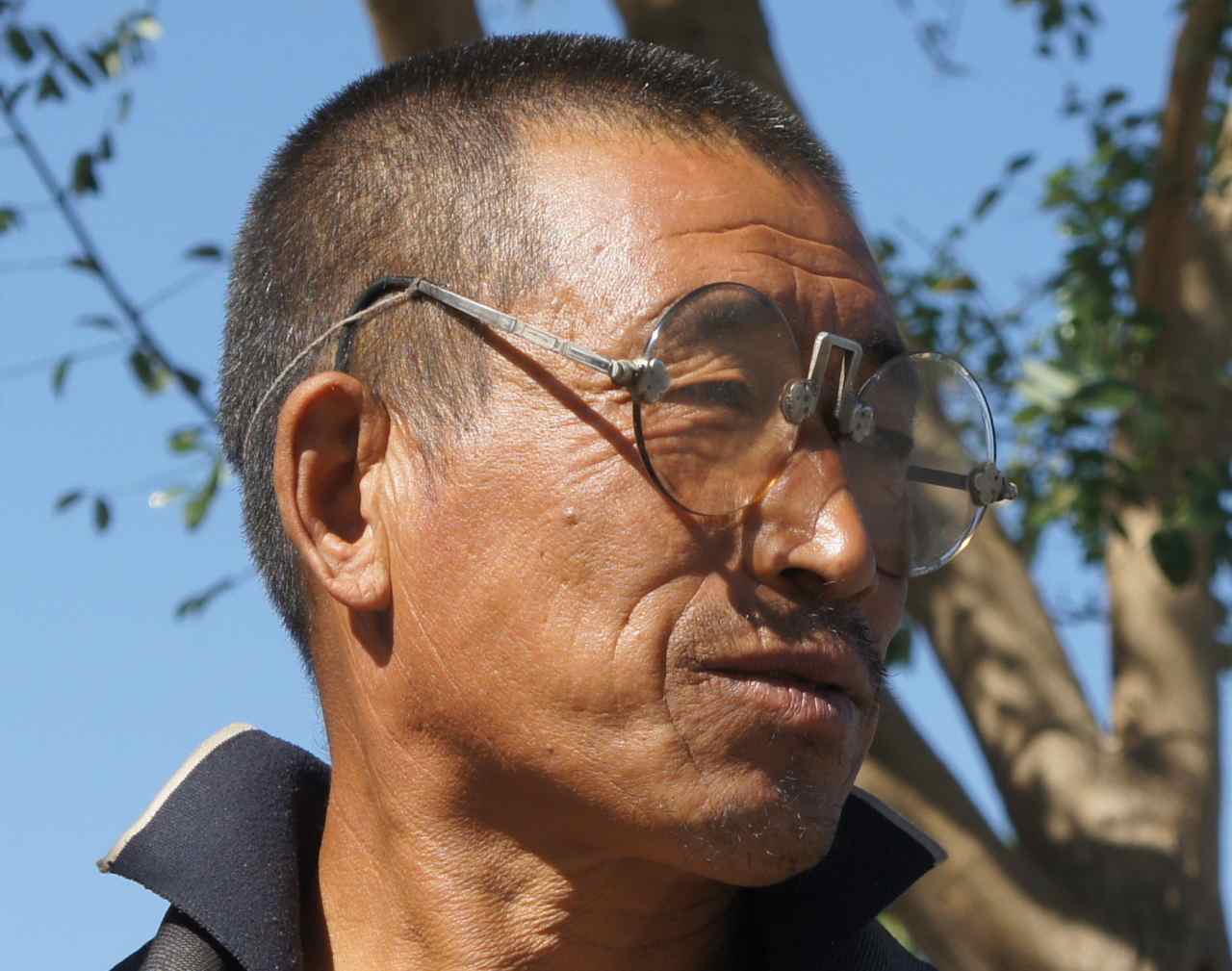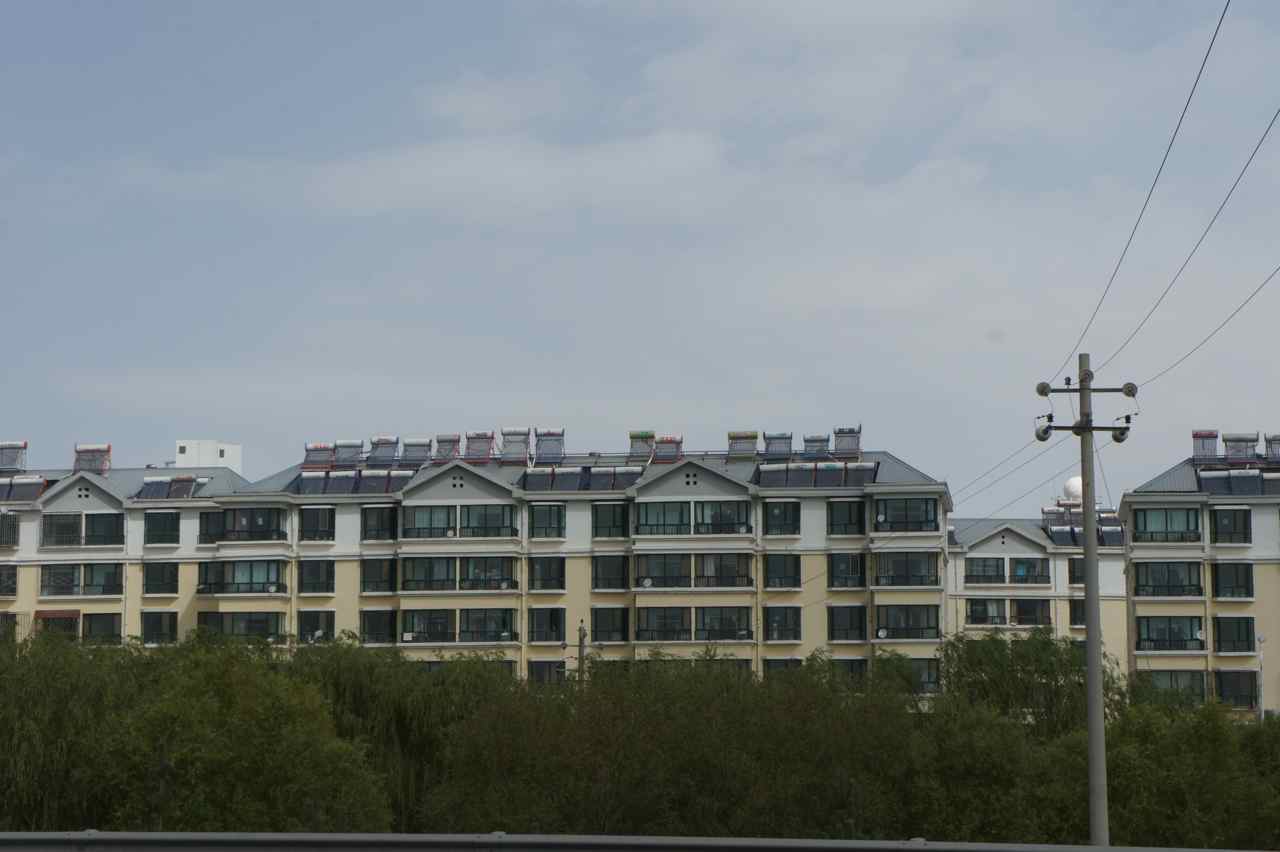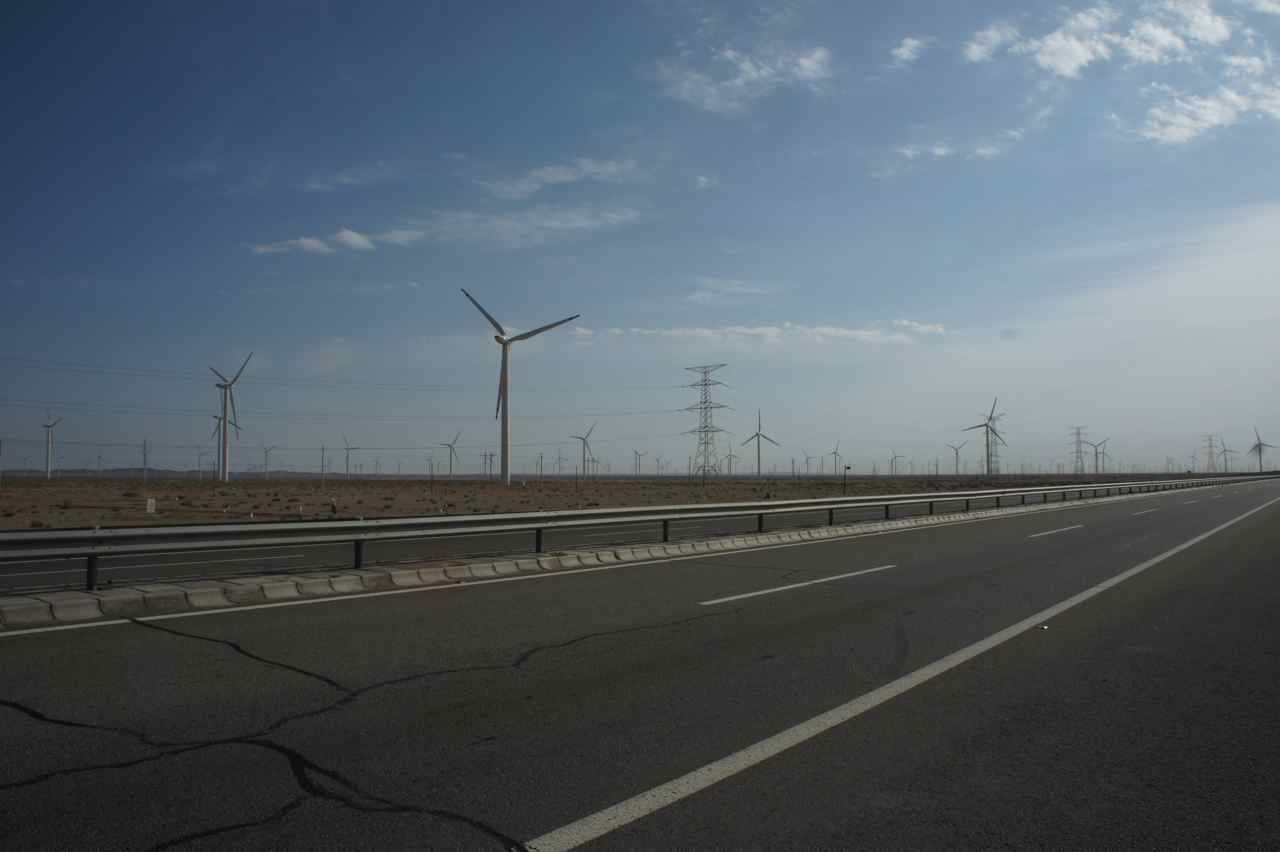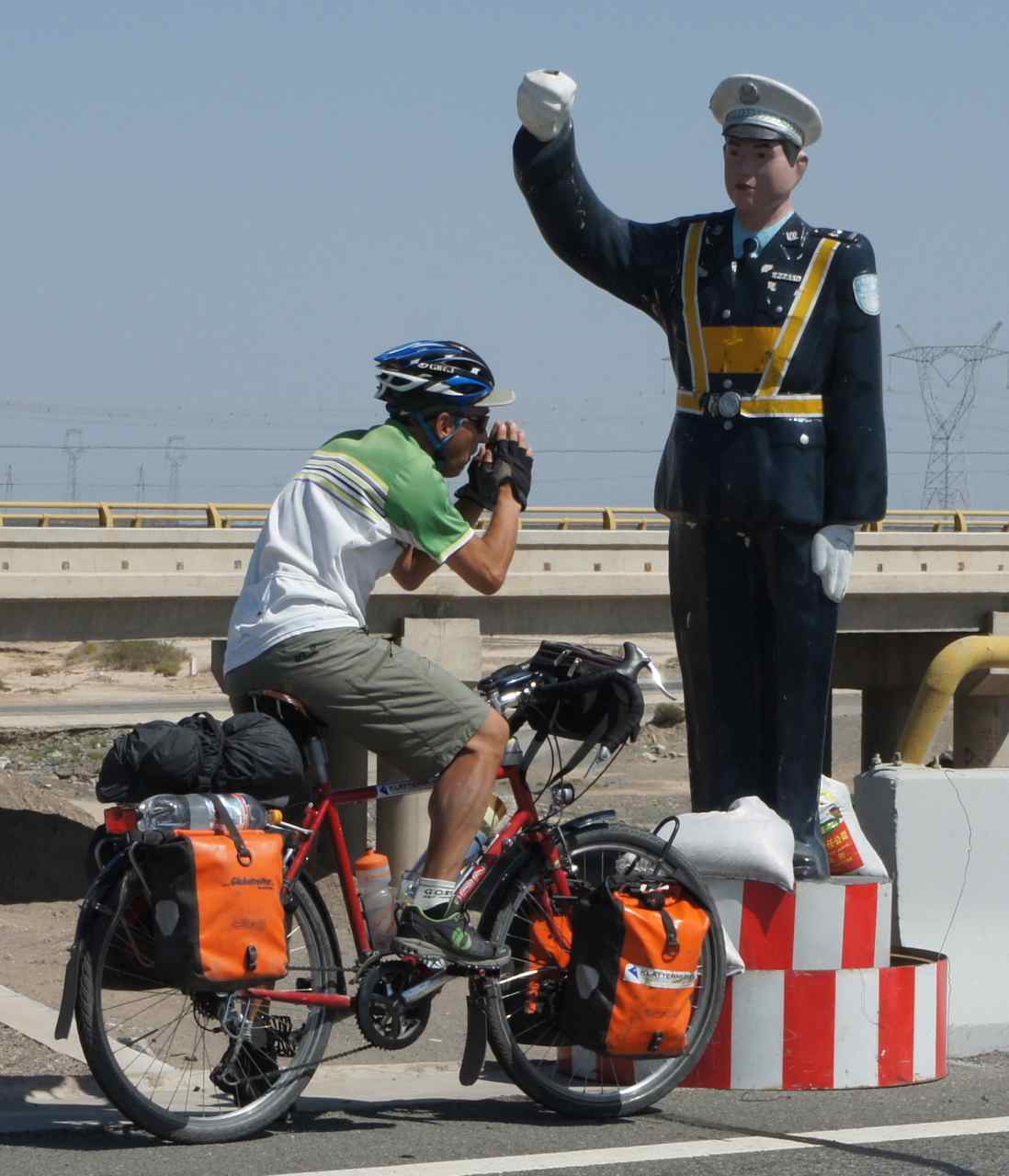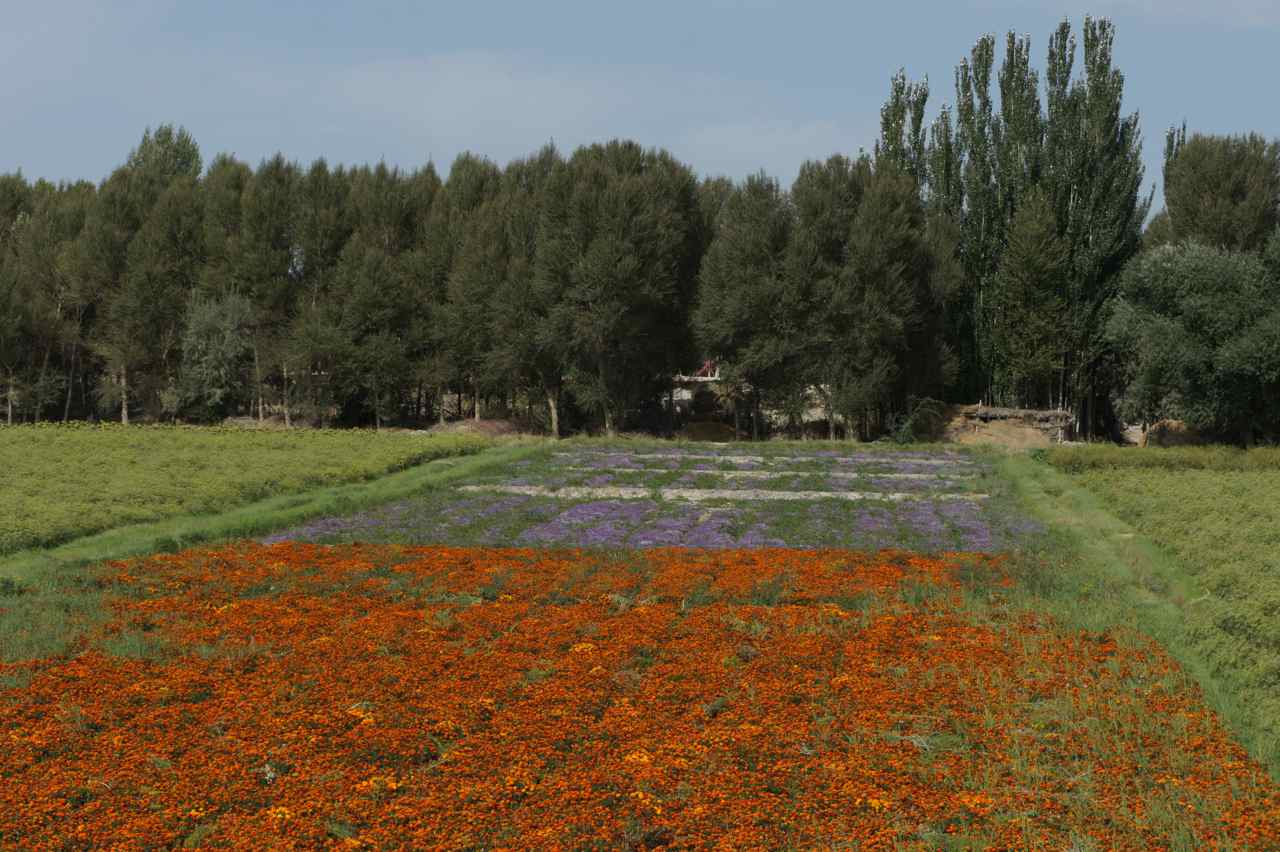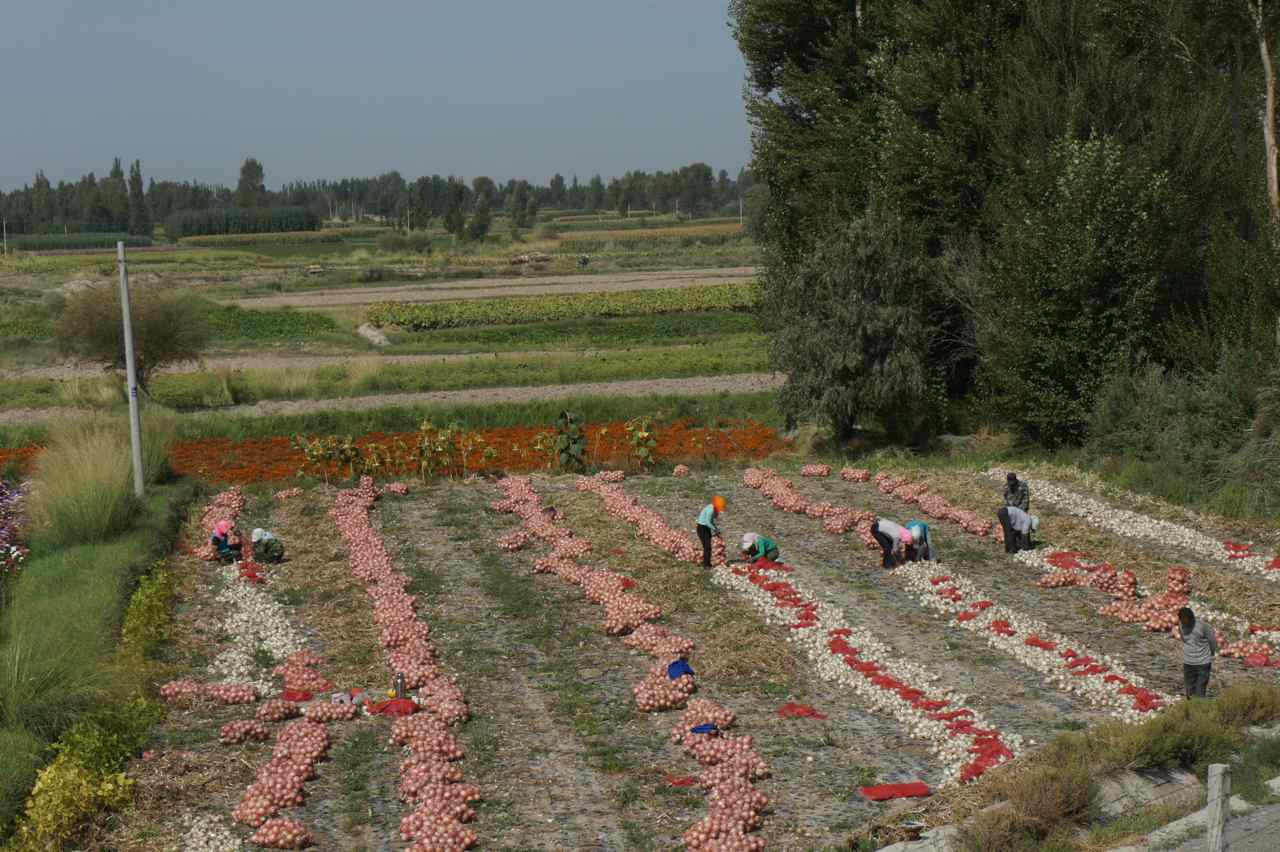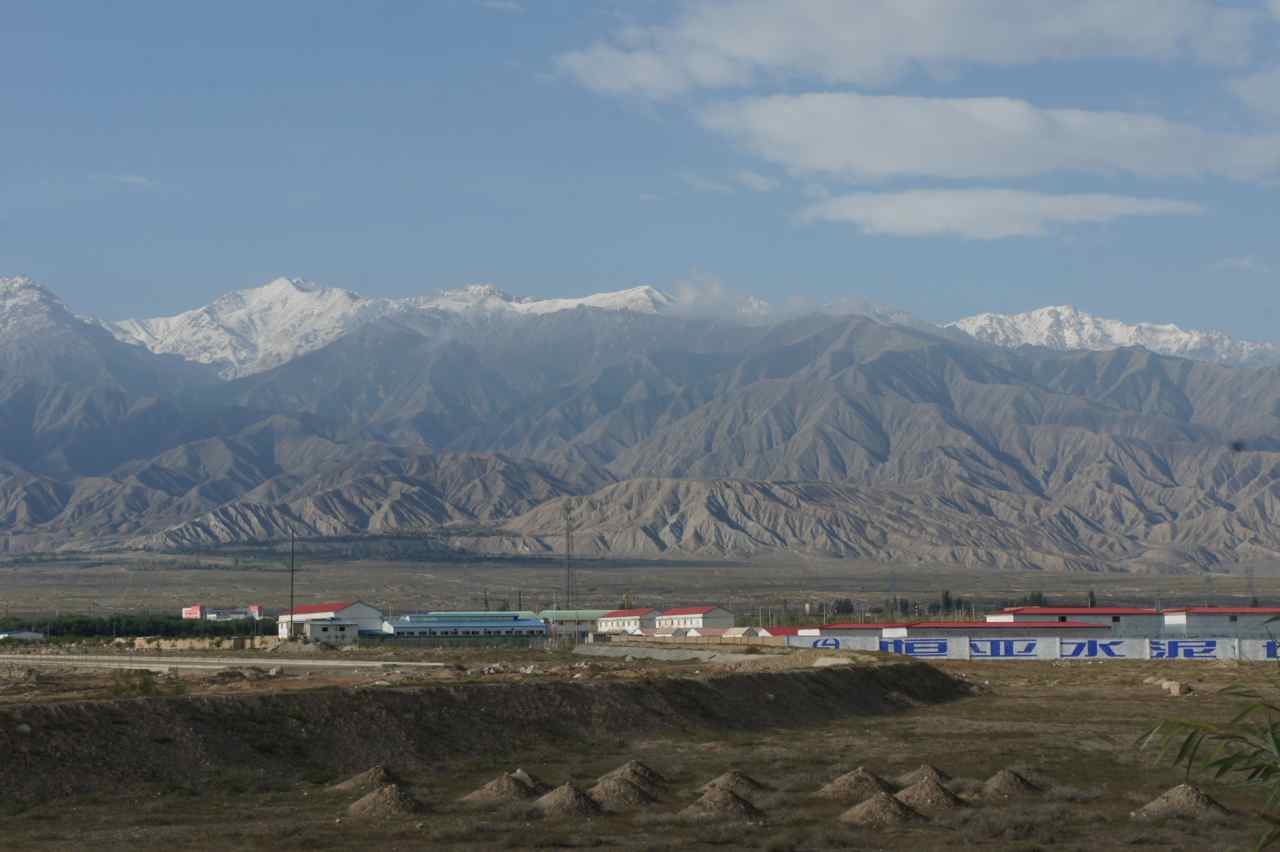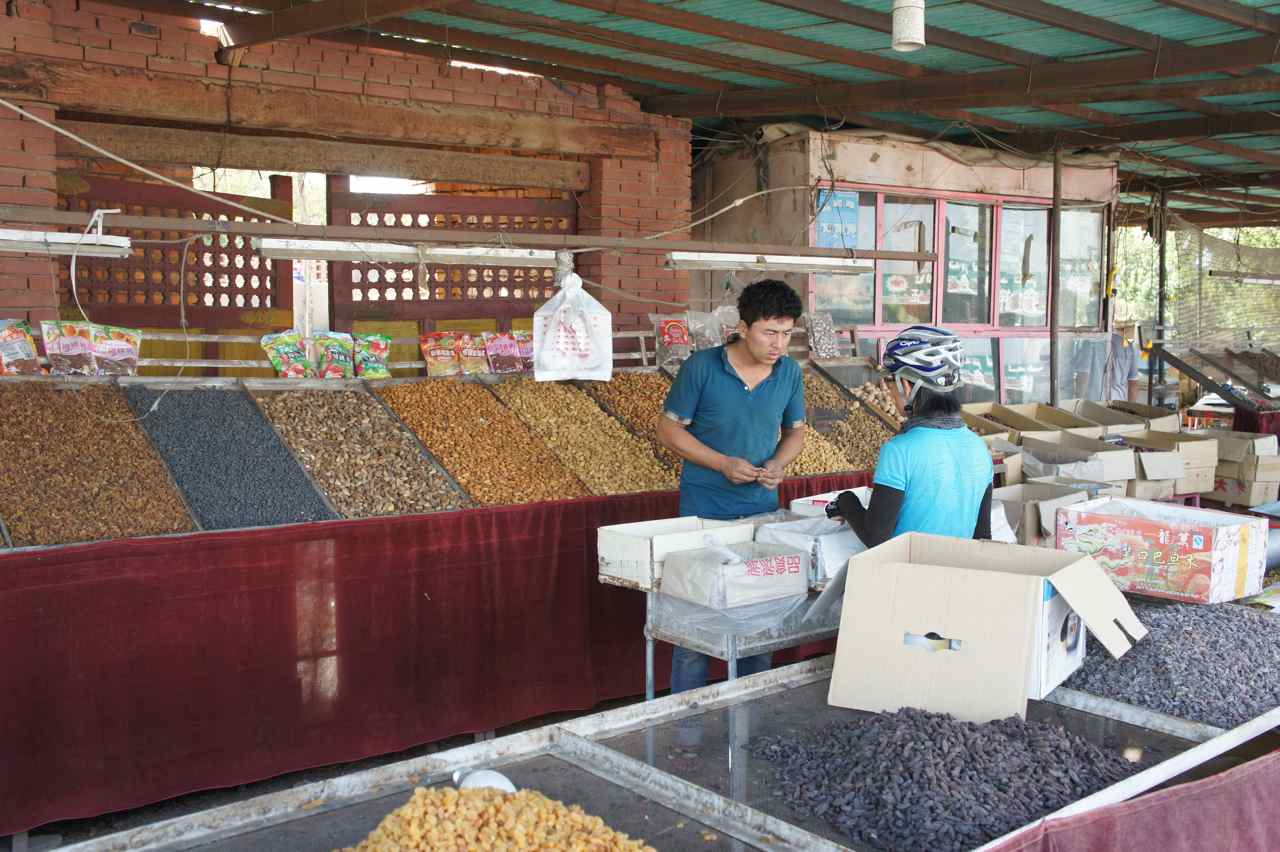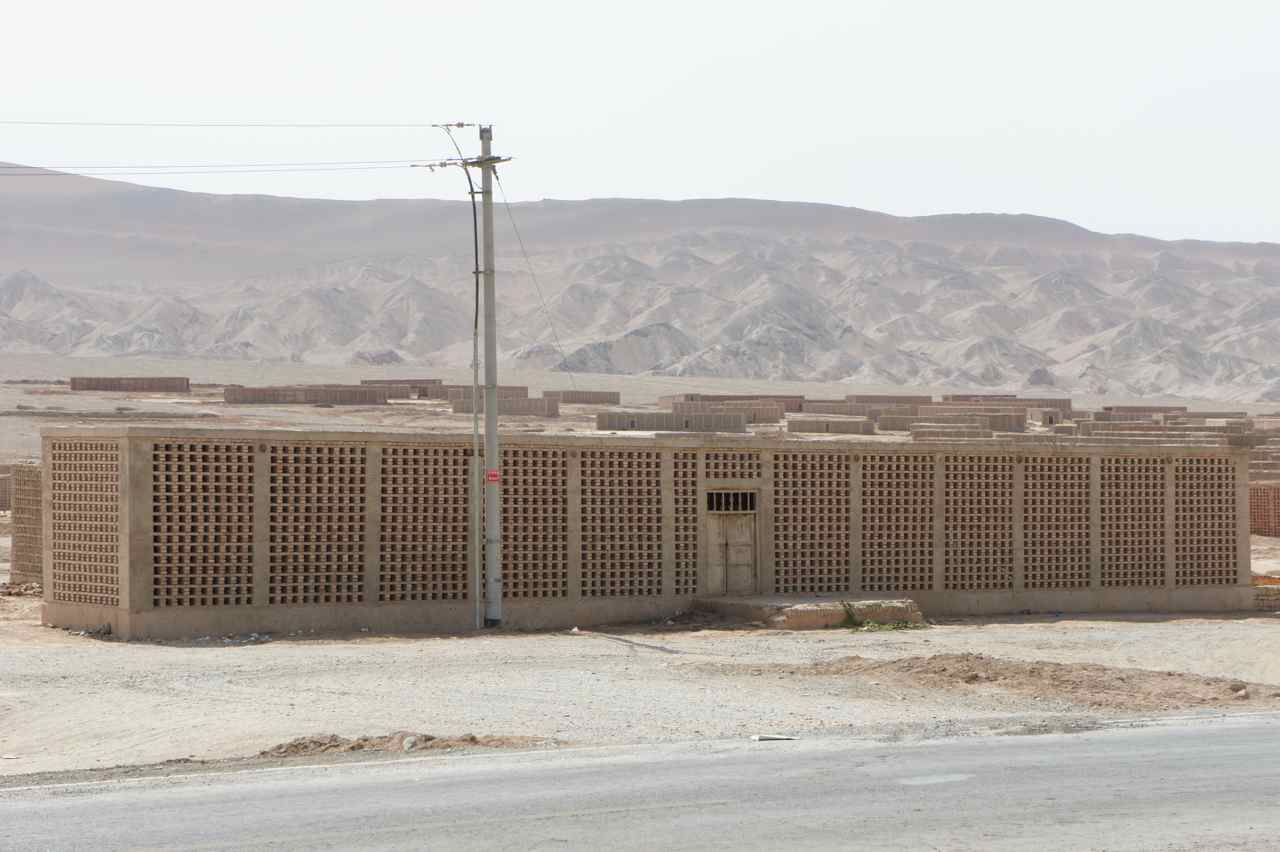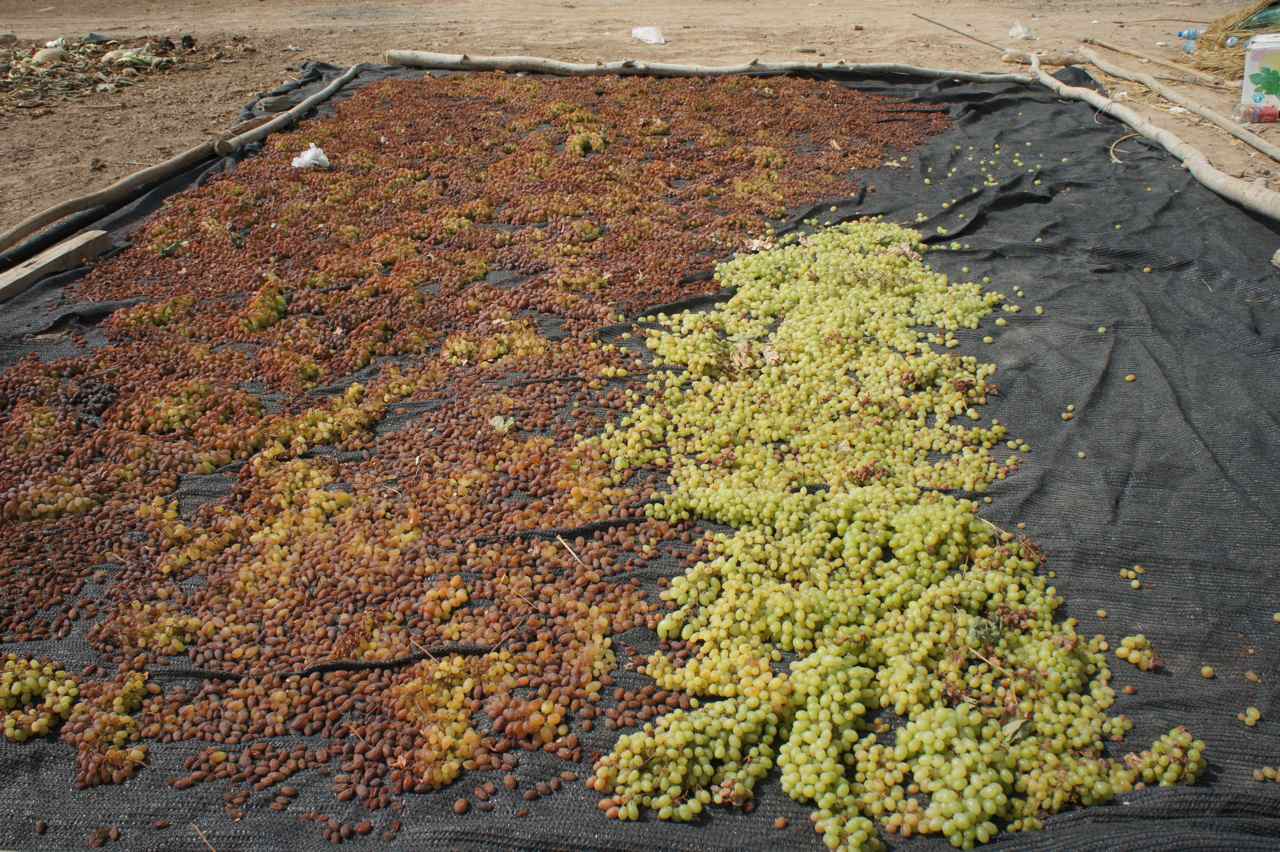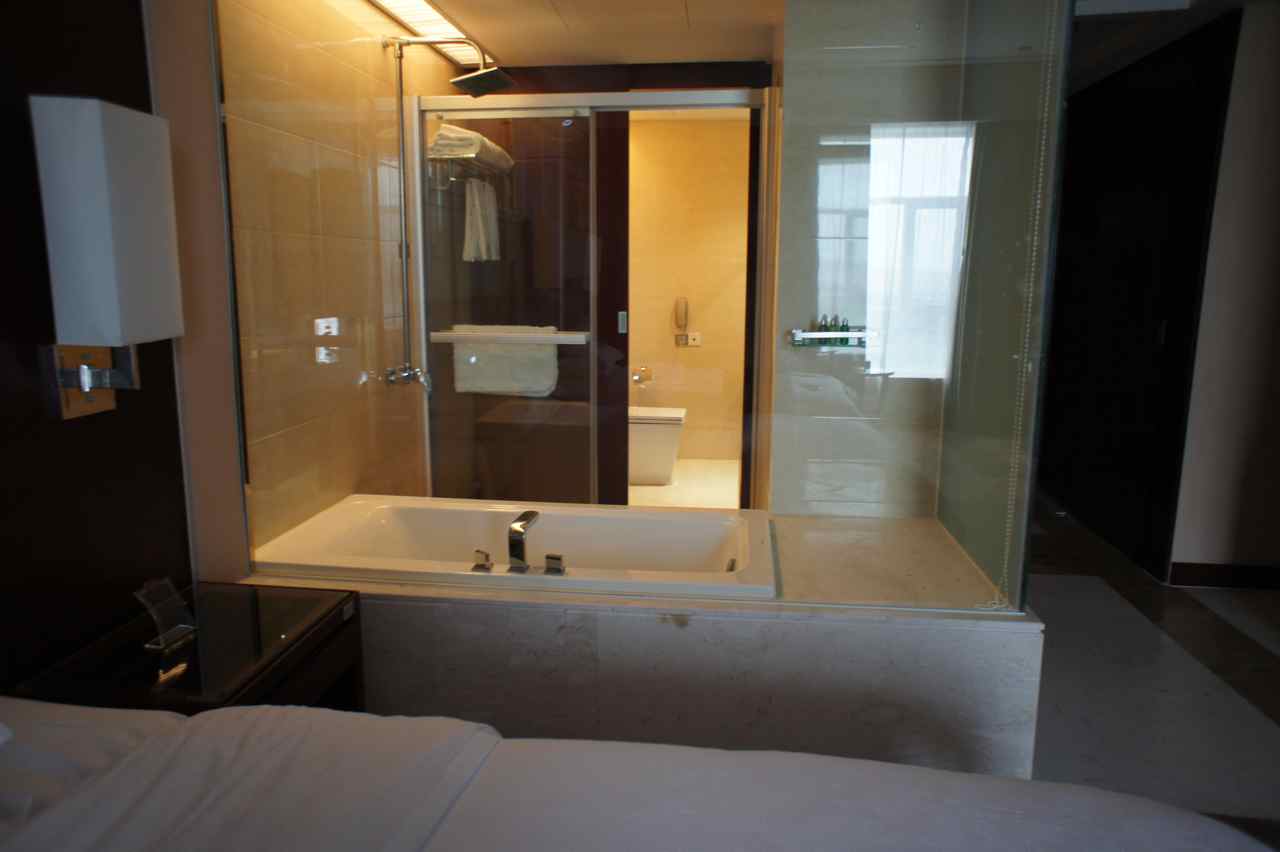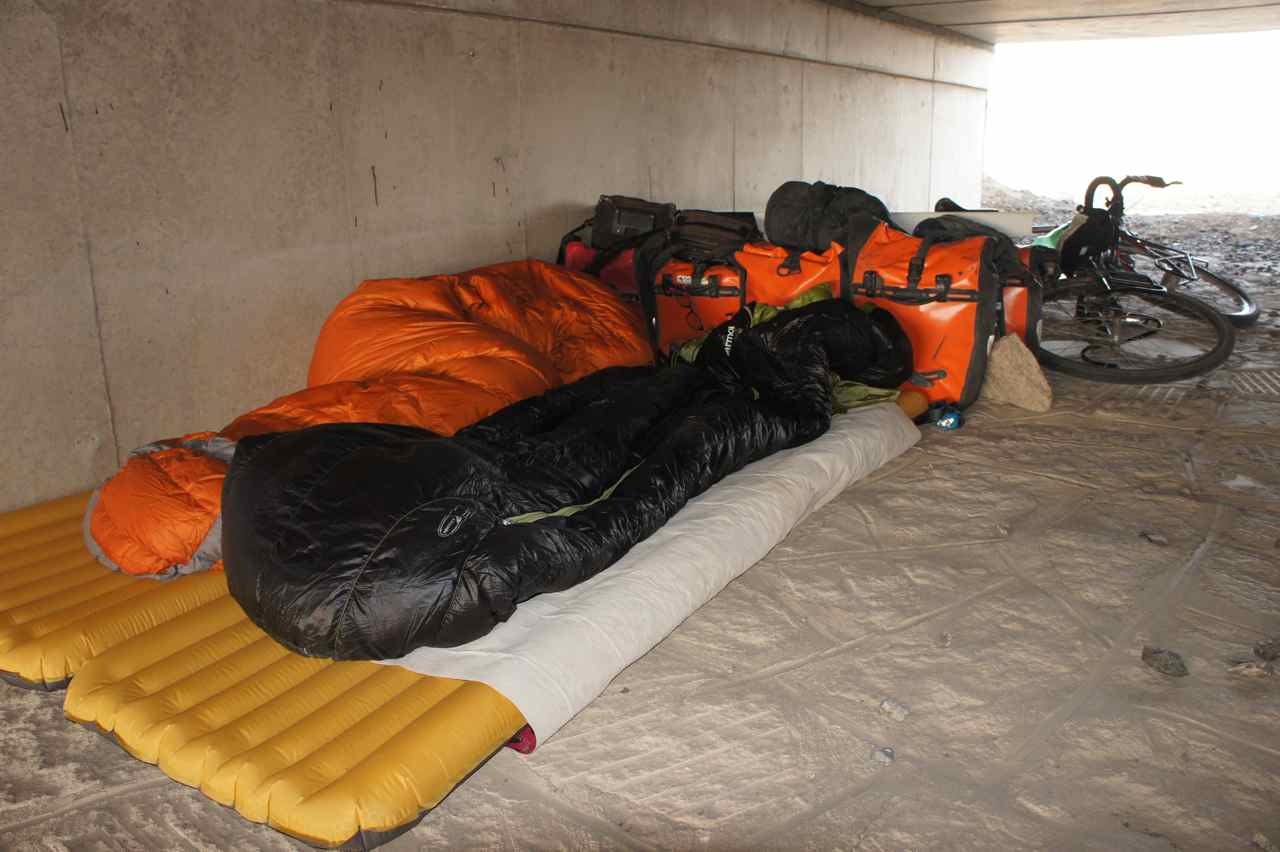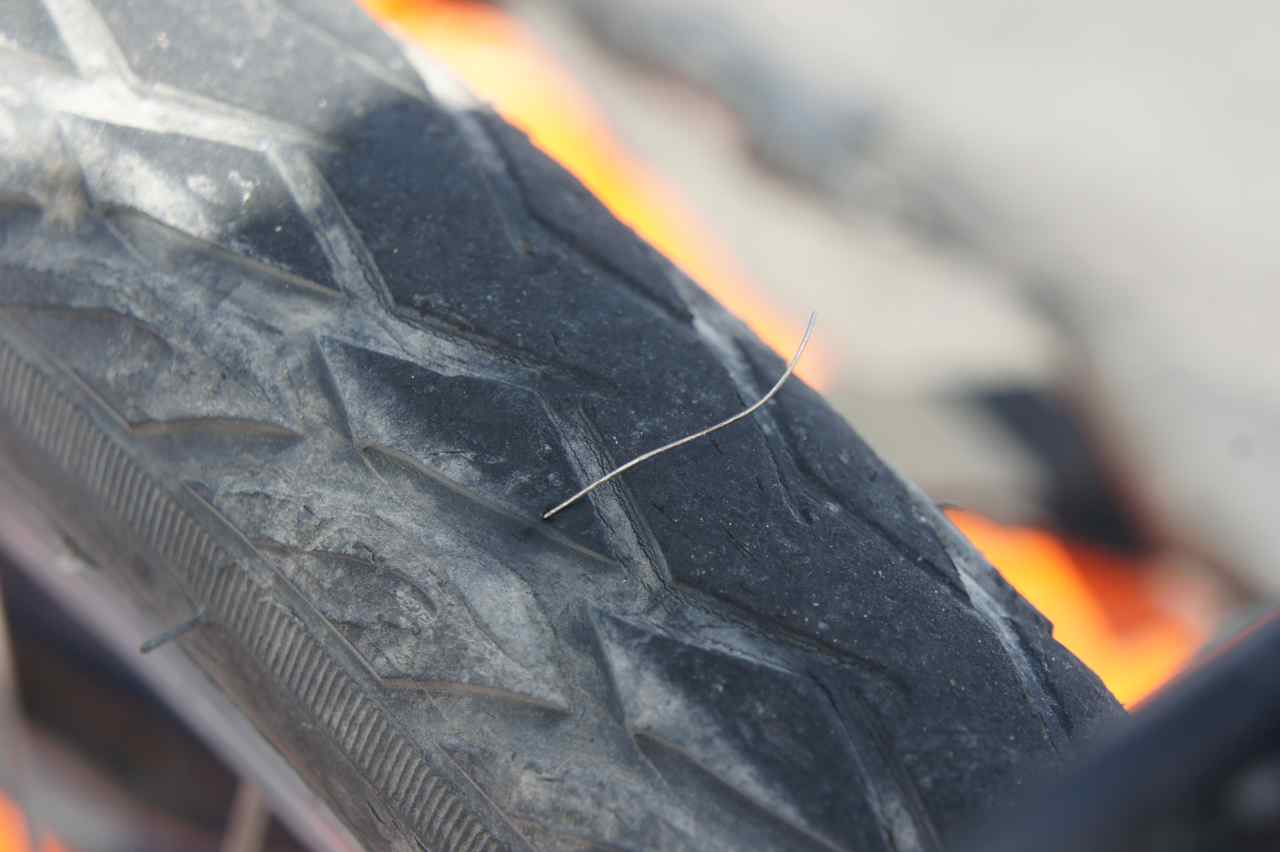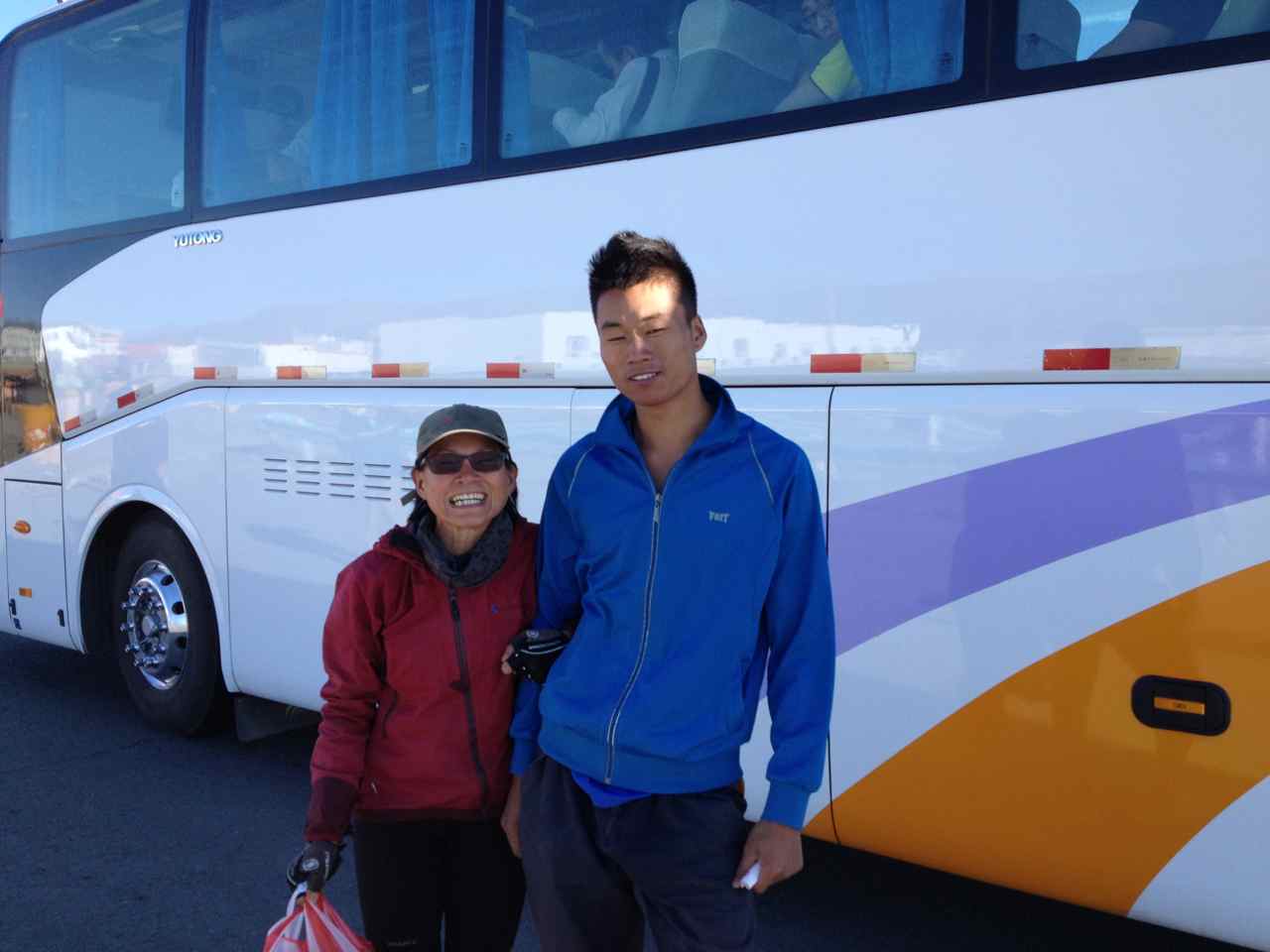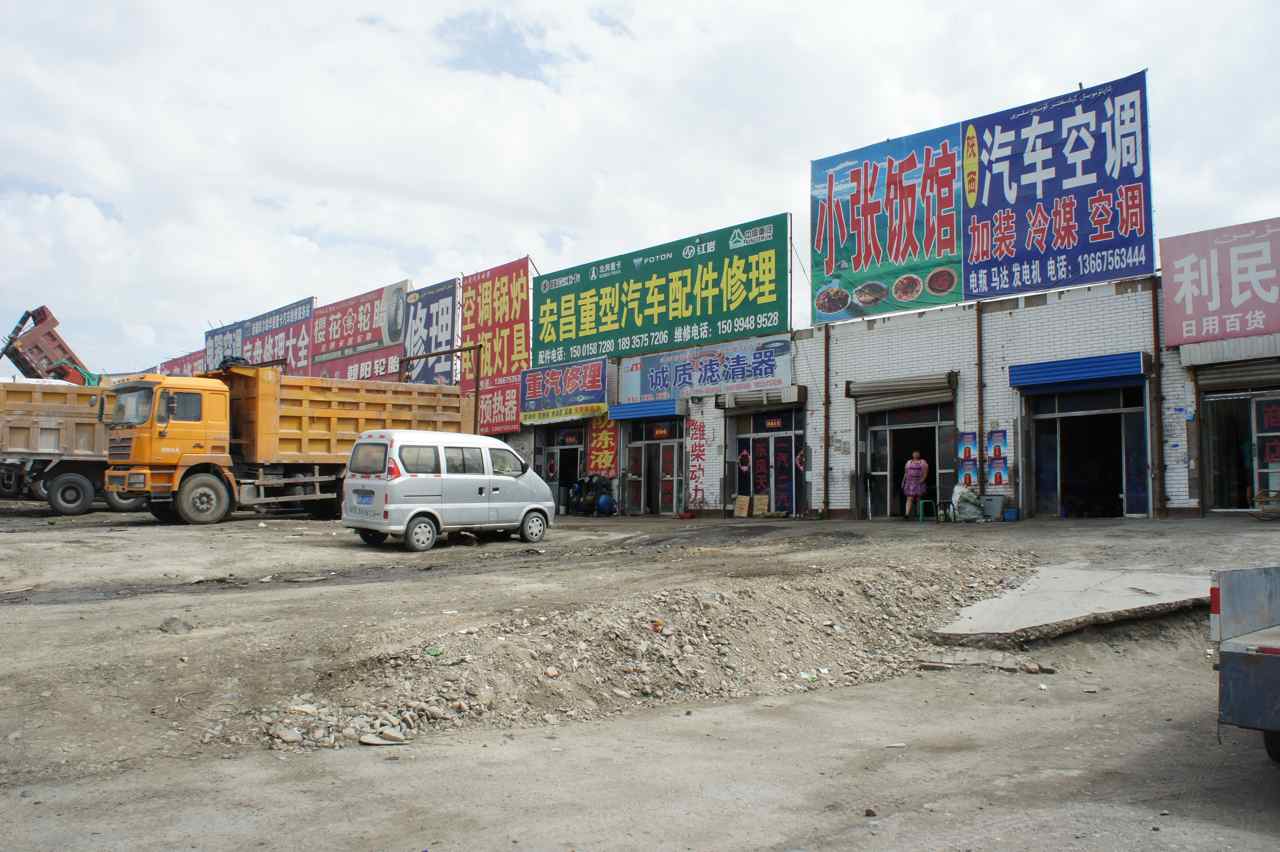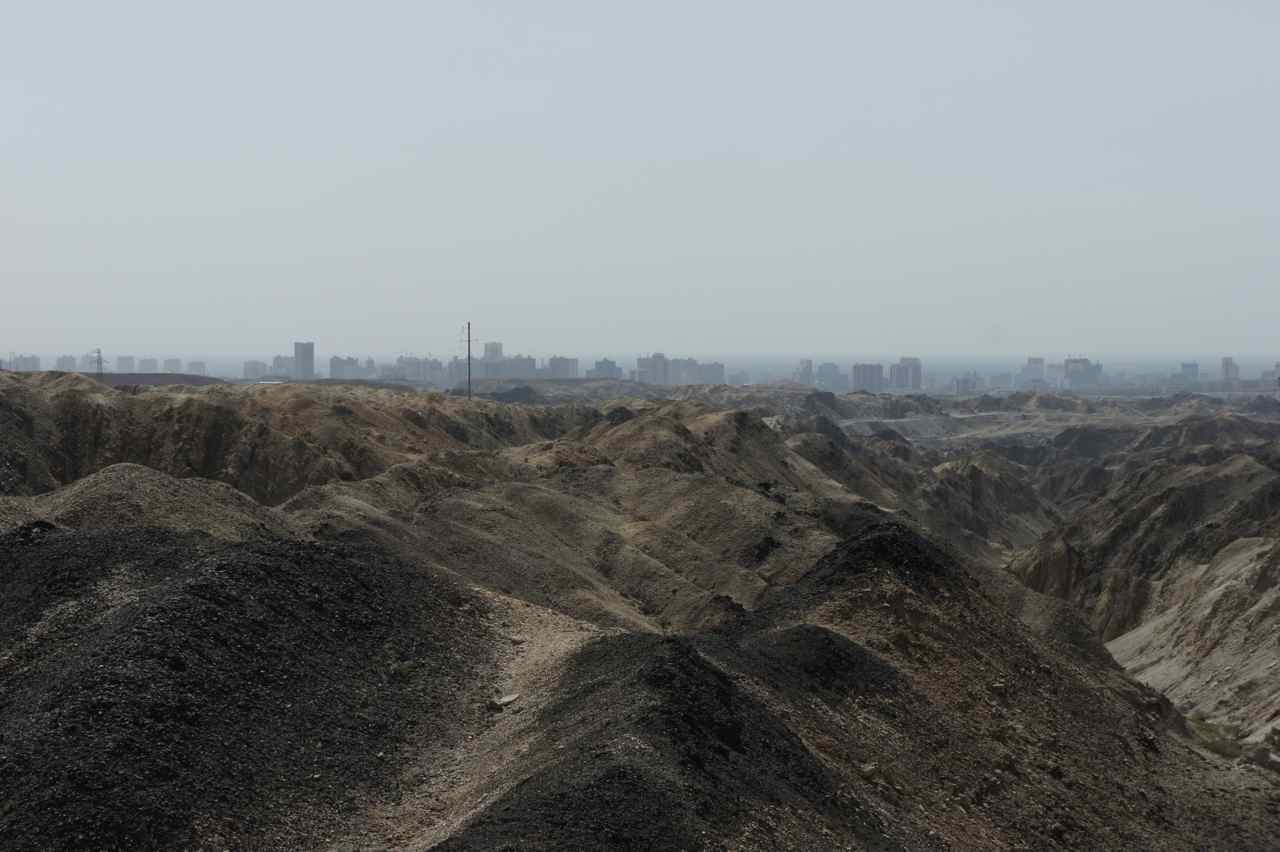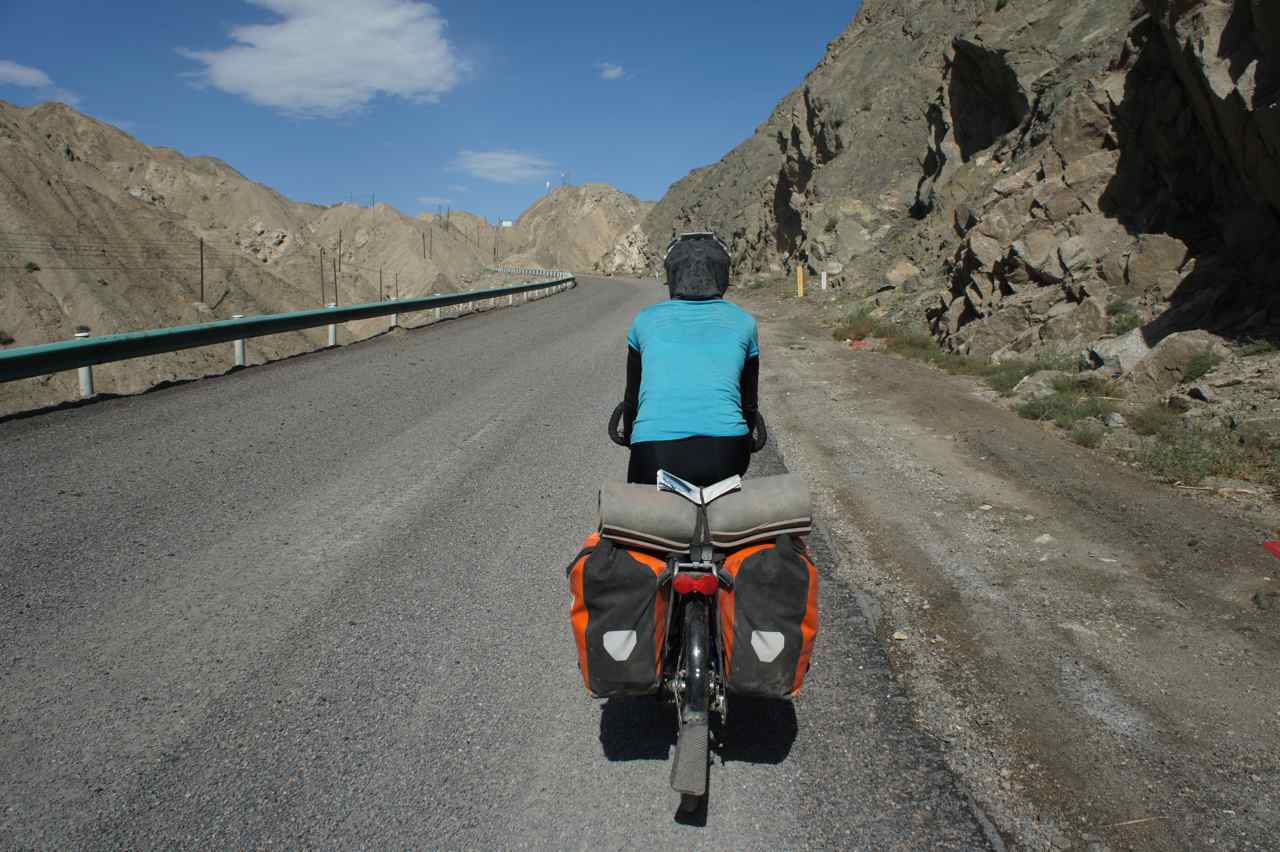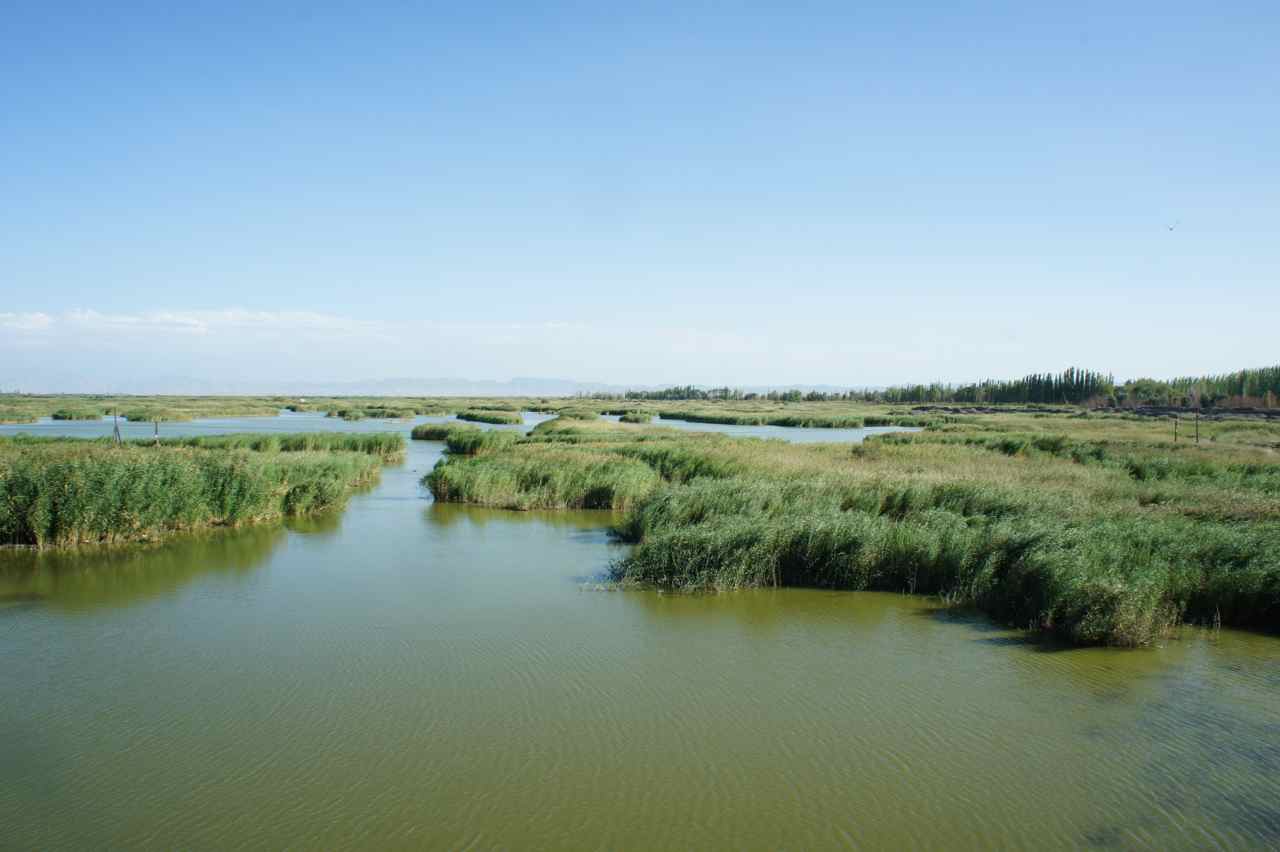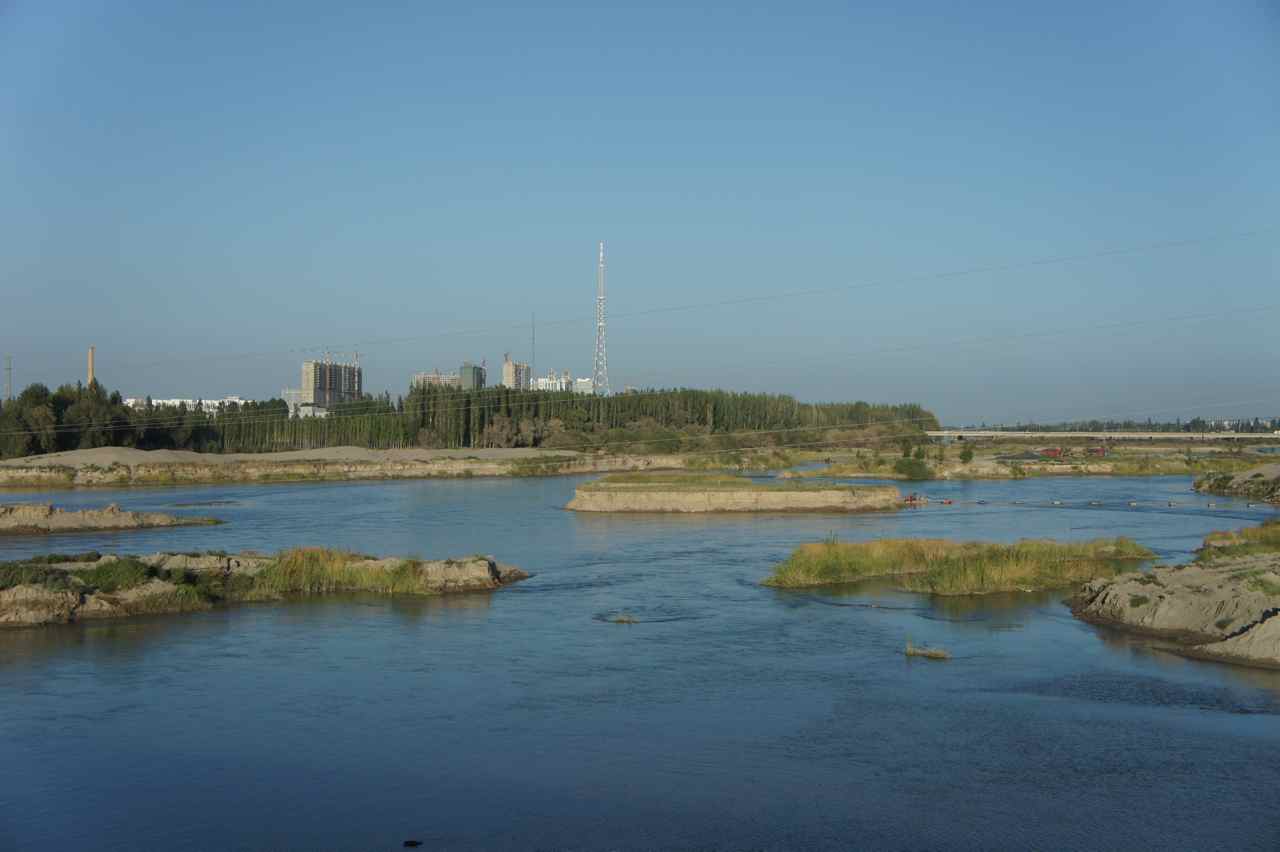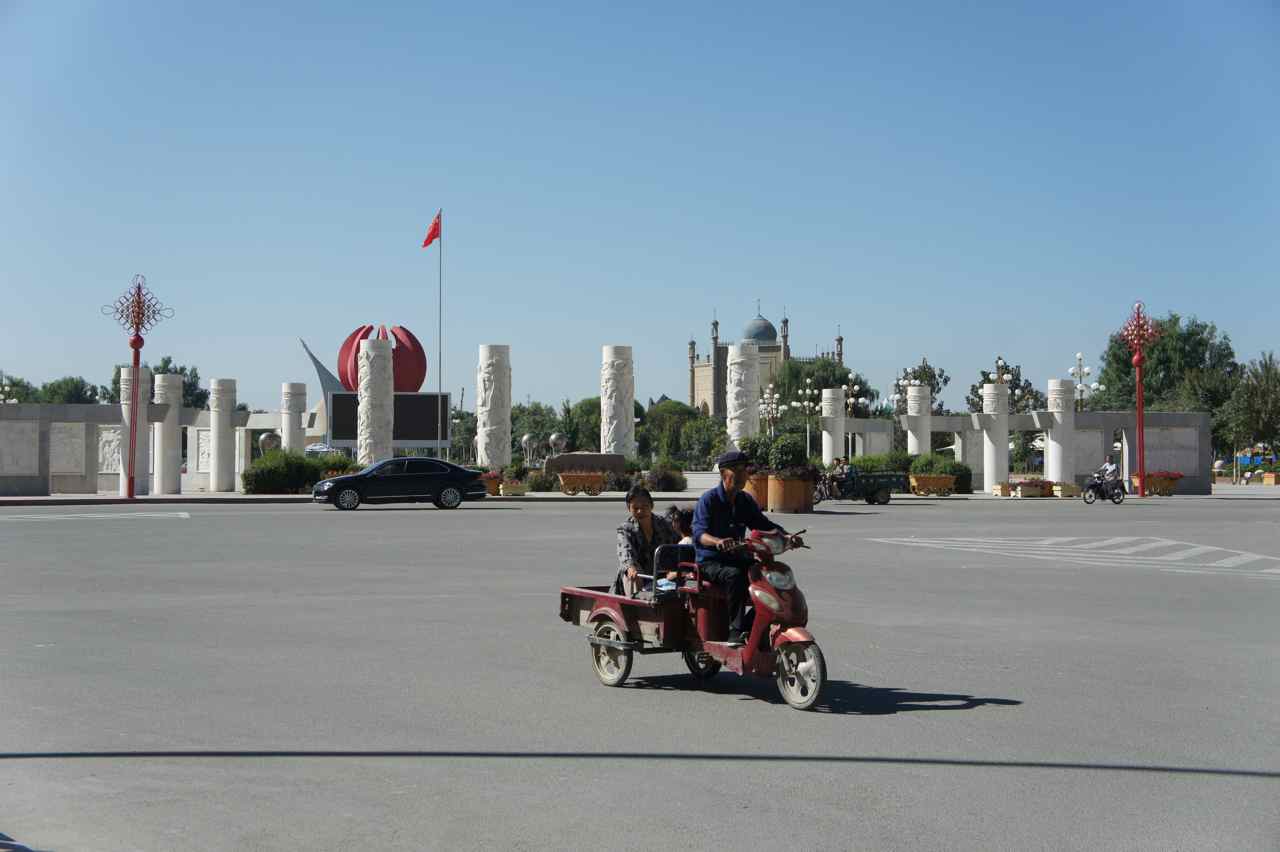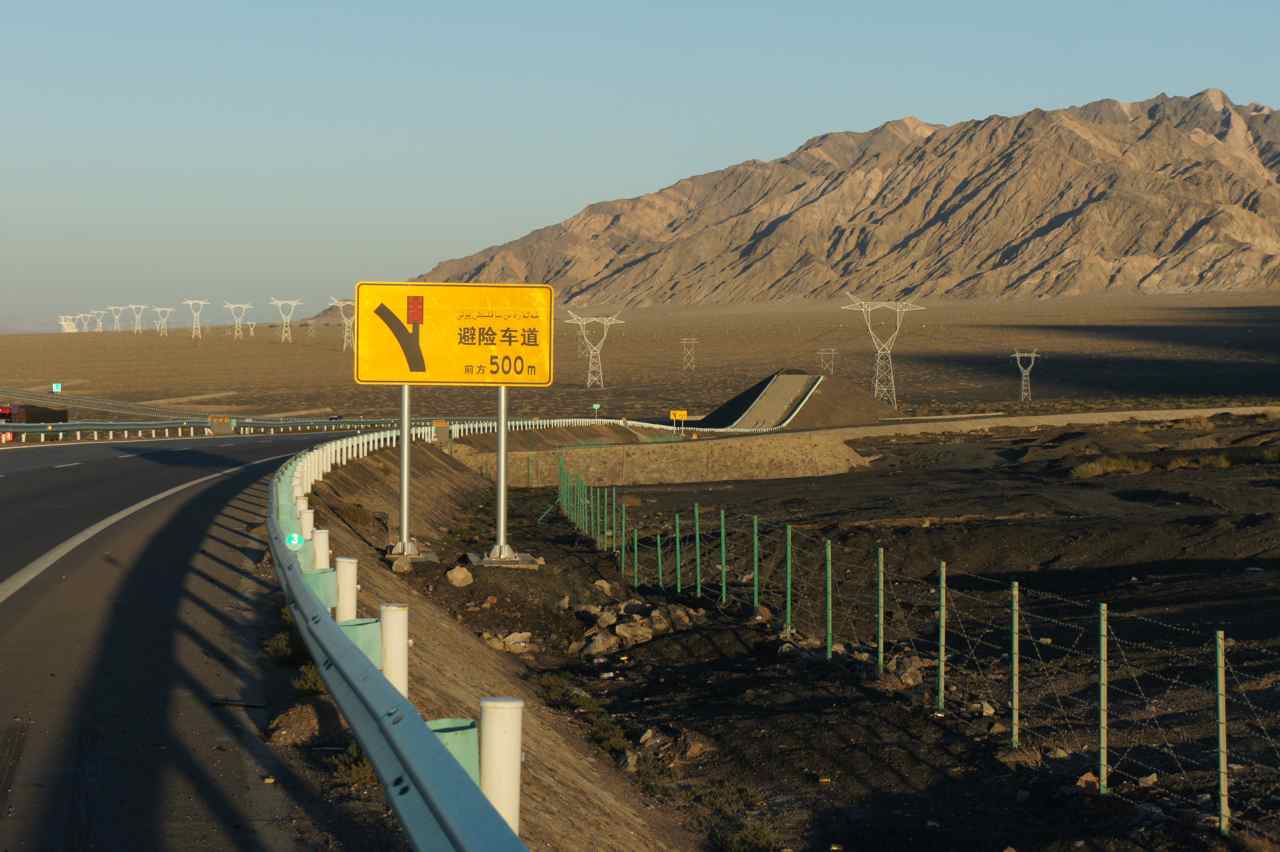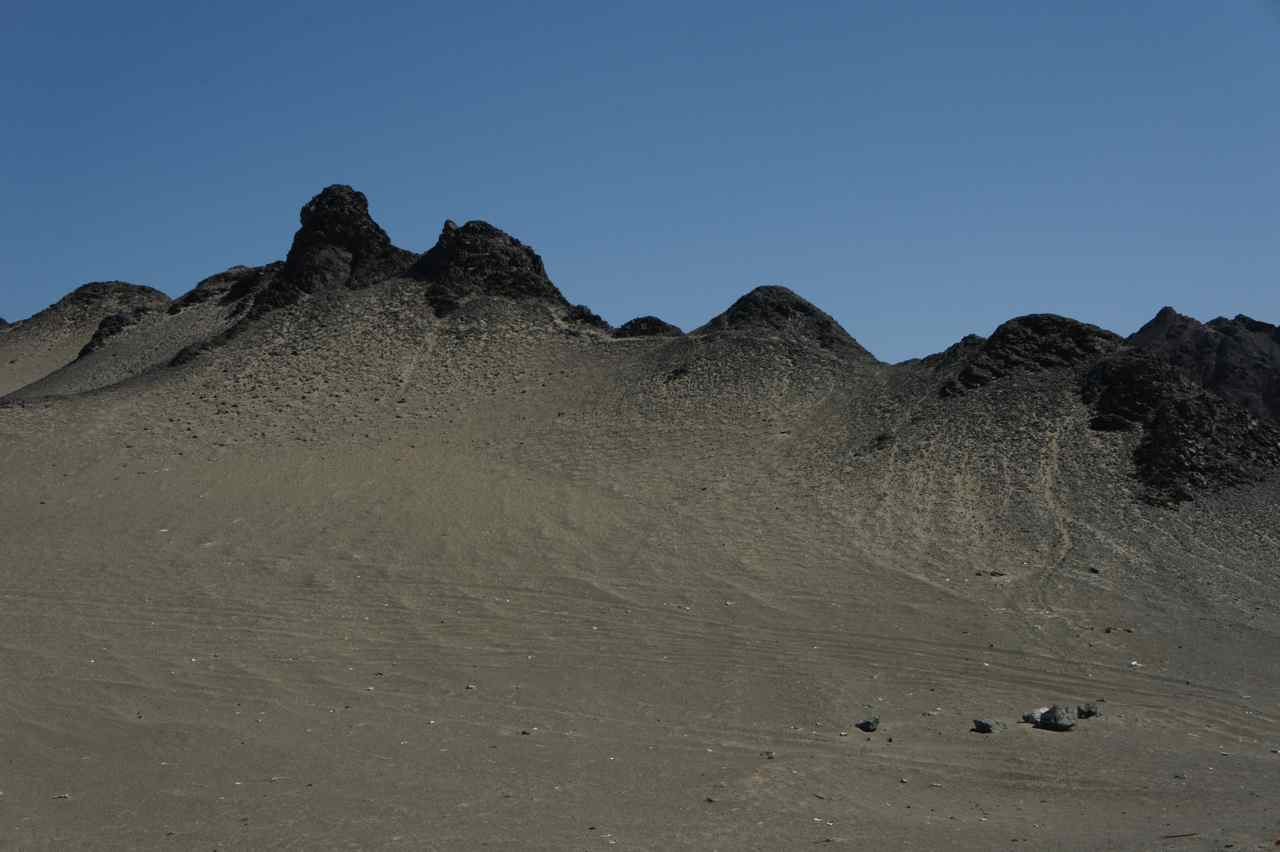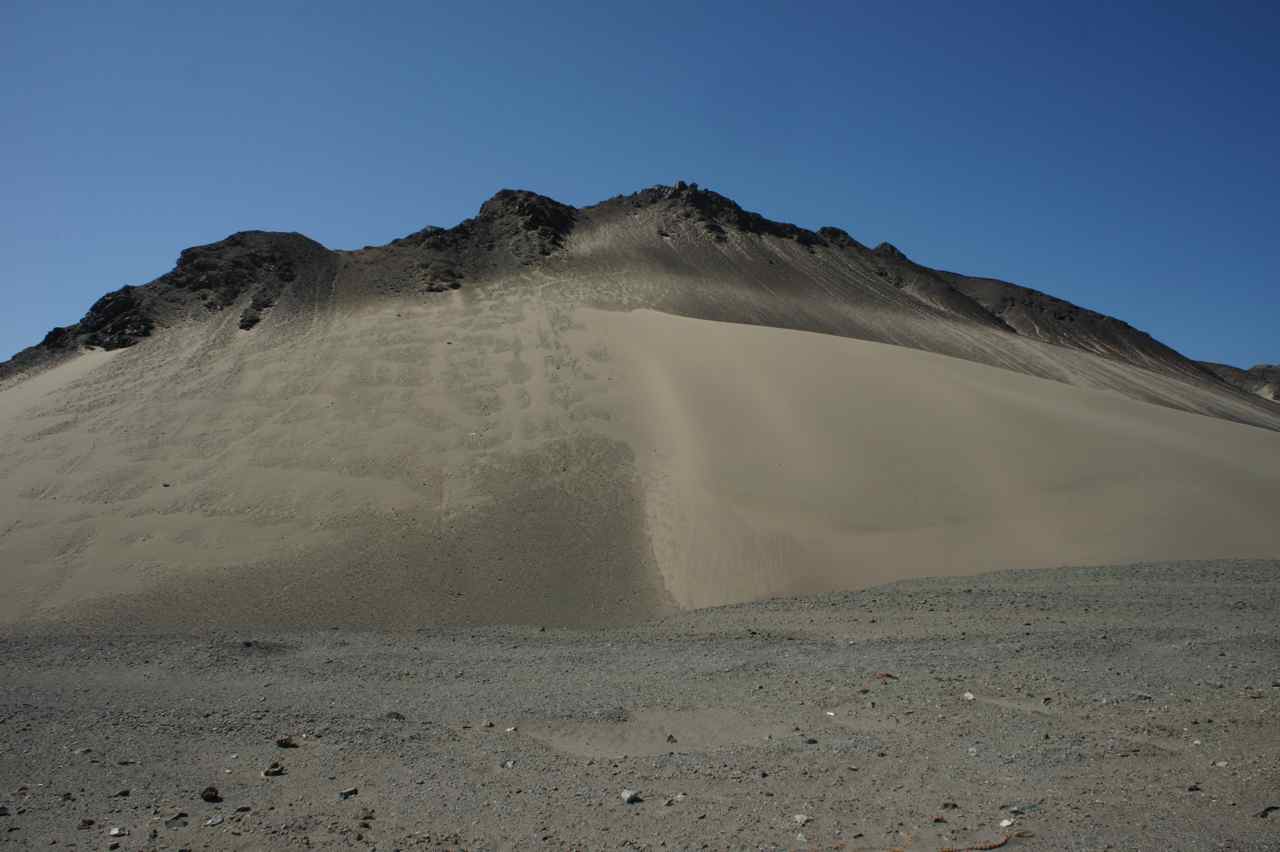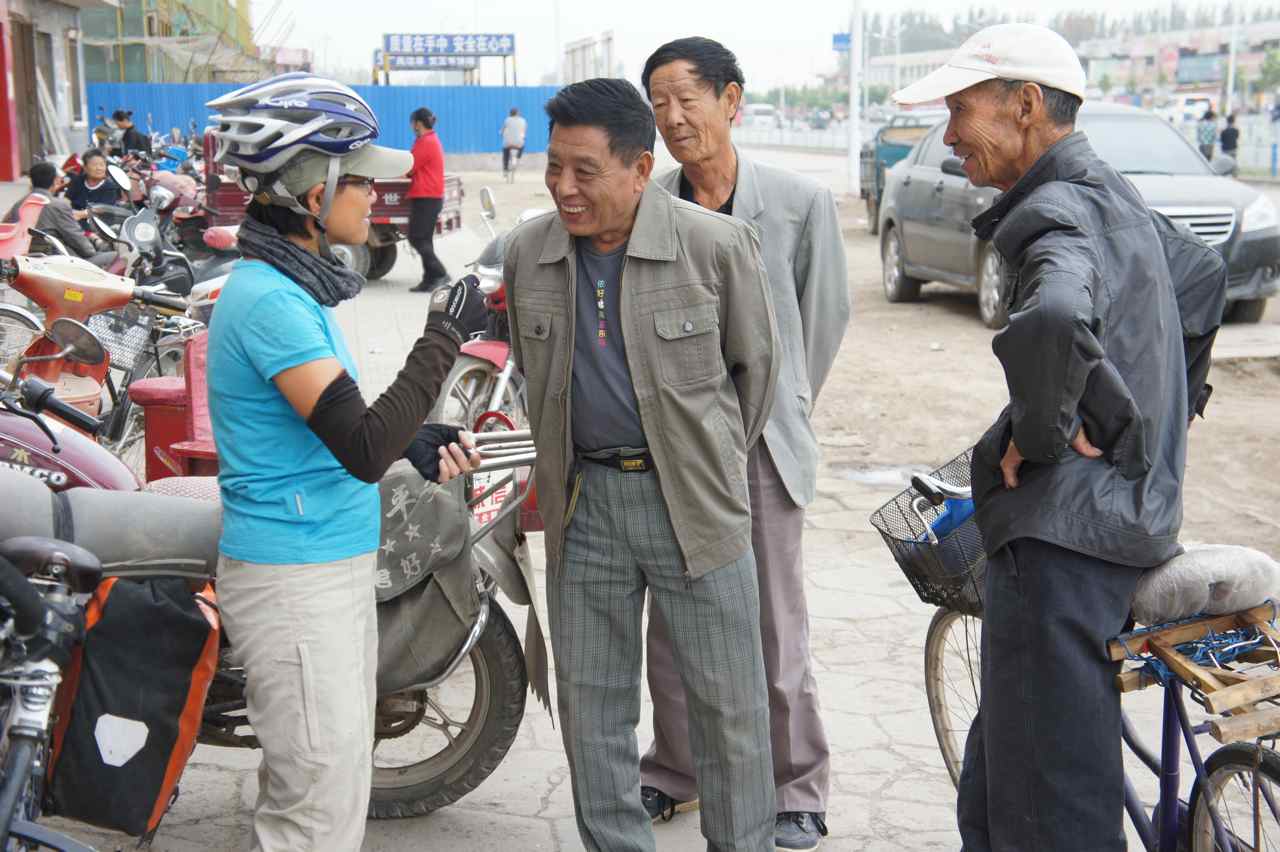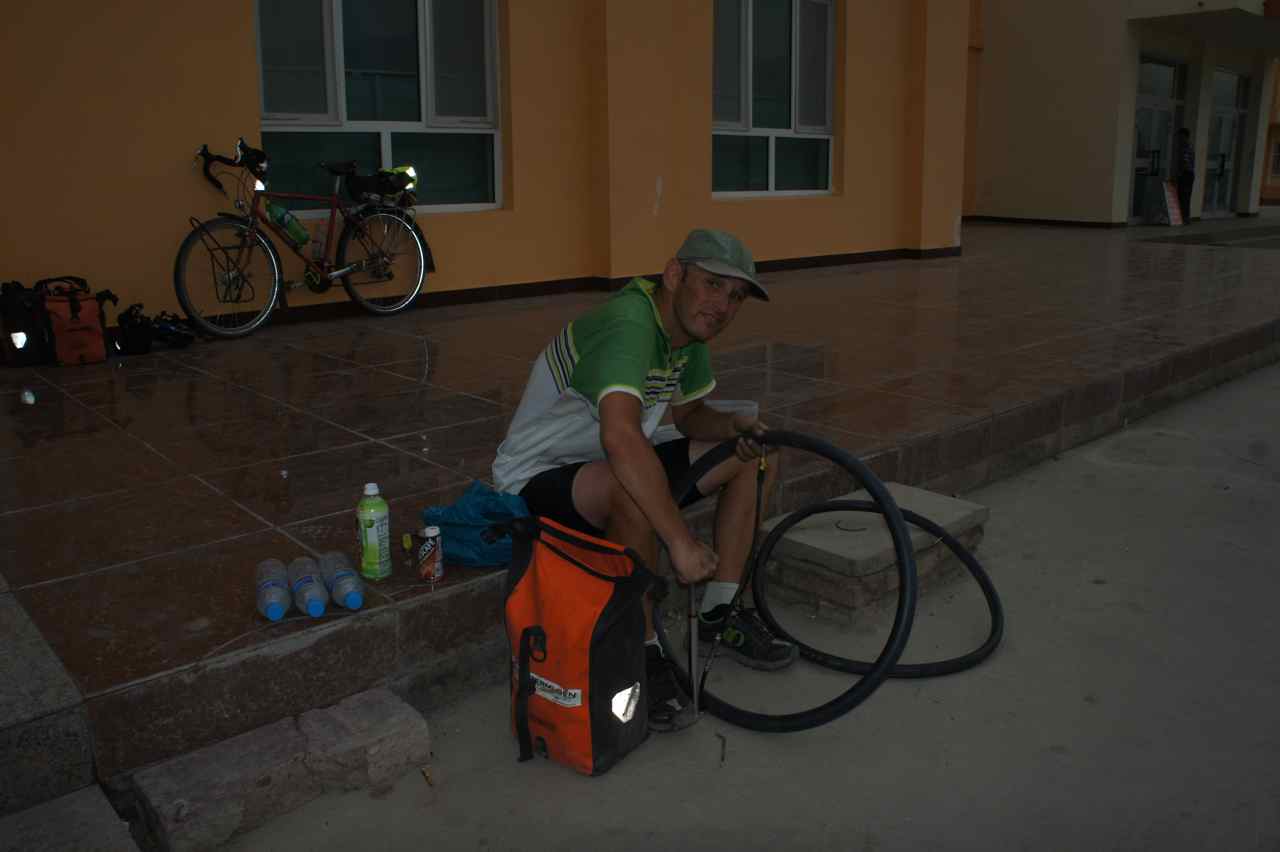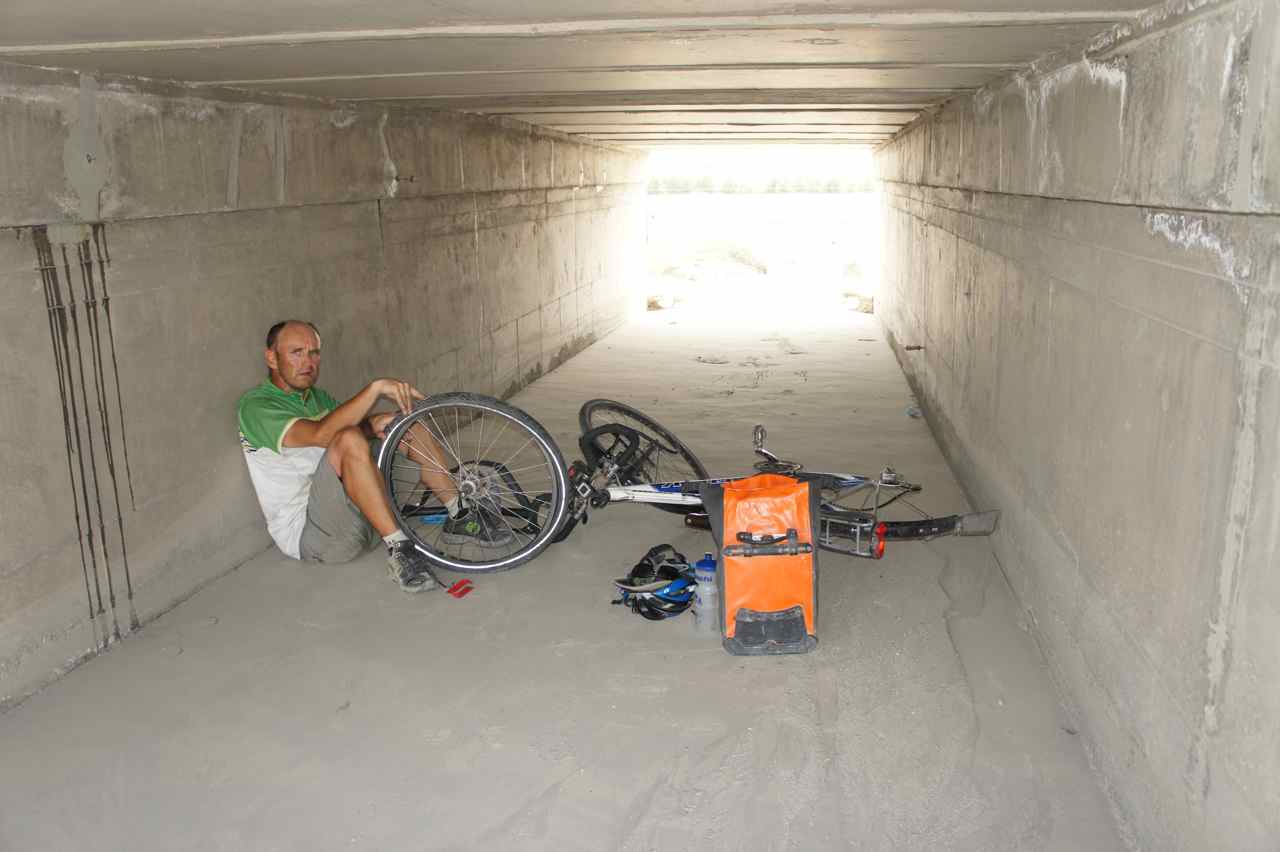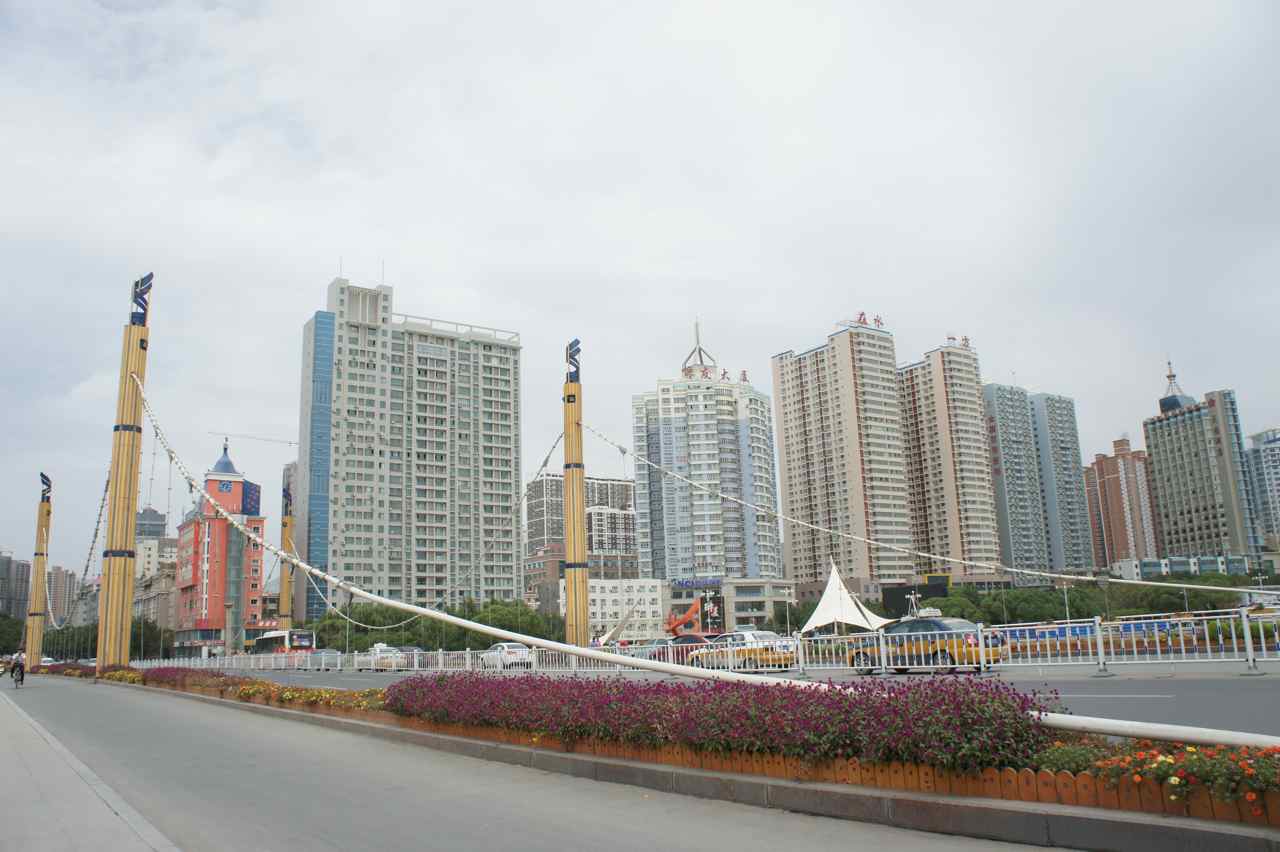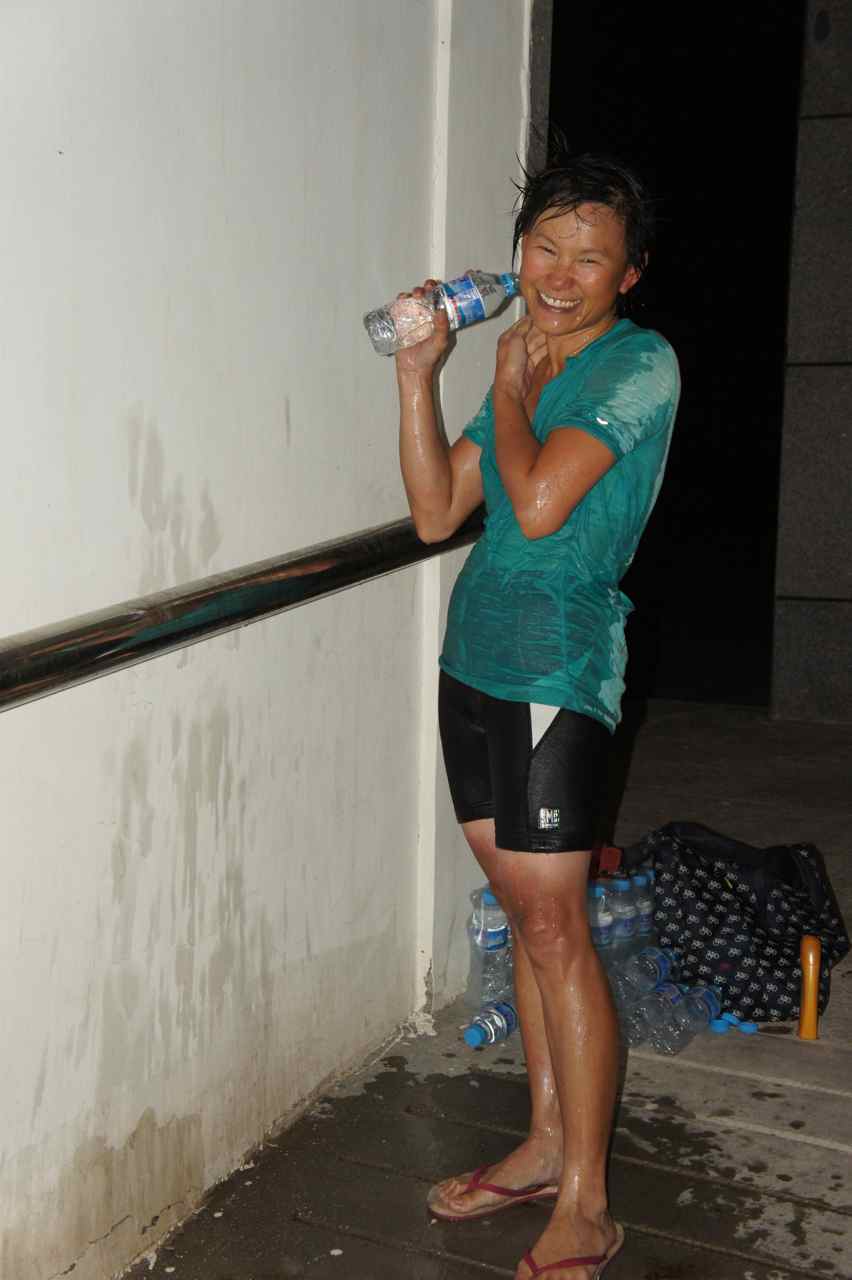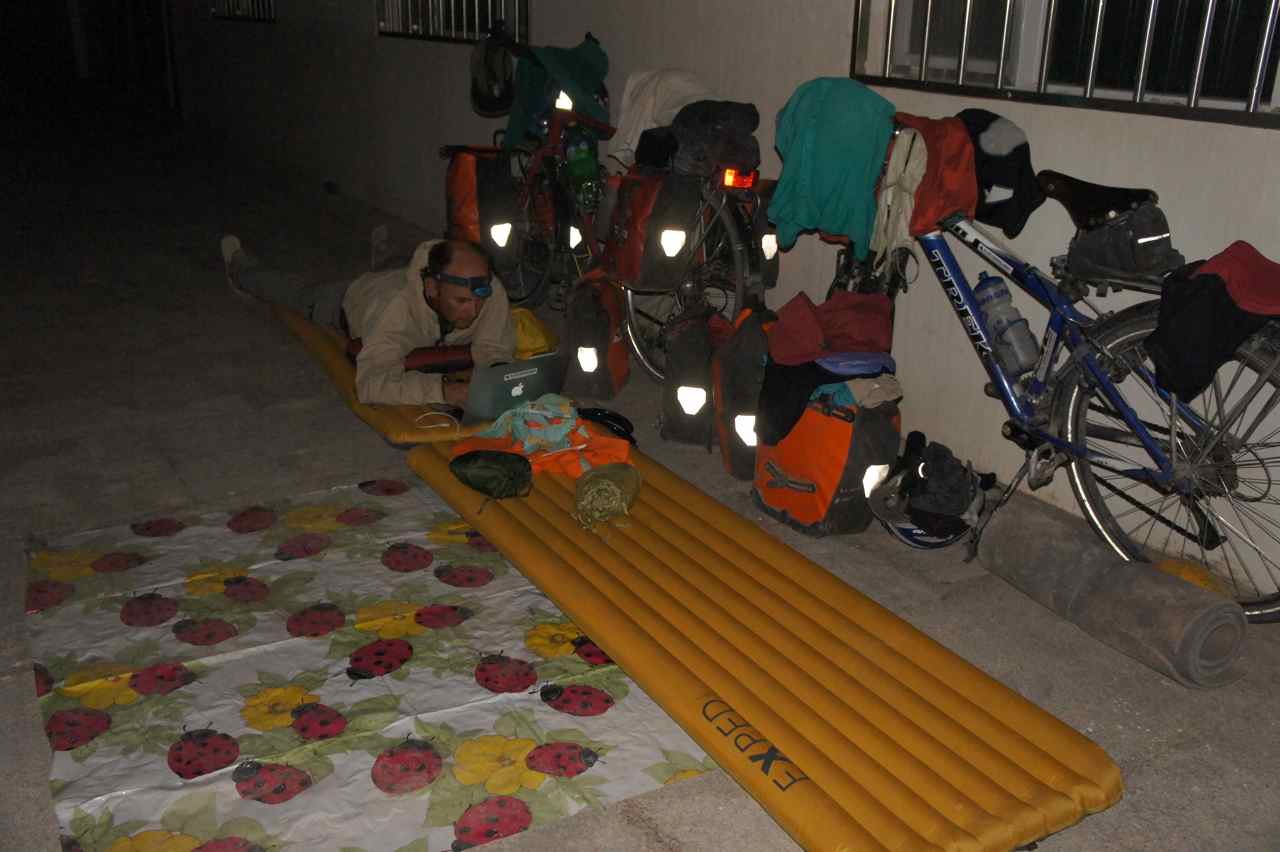Day 131 Langmusi – Zoige
Day 132 Zoige – Songpan
Day 133 Songpan – Taipingxiang
Day 134 Taipingxiang – Maoxian
Day 135 Duhiangyan – Chengdu
I have got a new and interesting experience….. For the first time since we left Sweden I have got a writer’s block and I have kept pushing the writing of this blog post forward day after day. This post will probably not be a literarary work that will get any awards, which has never been the purpose anyway. I write to tell you reader & follower about what we do along the way, how we feel and about meetings we have had. The purpose is to keep you informed about our whereabouts but also to help me remember what we actually did once this trip is concluded.
So here comes the story….
Langmusi is a small mountain town that sits at 3300 meters altitude. It has a very scenic locaction as it is squeezed between tall mountains and has two major tibetan temples and lots of other traditional buildings. When staying in Langmusi we had one day of sunshine, one cloudy day and one day with both snow and rain, but the common factor for all days was that it was cold, even when the sun was shining.
When it was time to leave it was still cold, but our aim was to only ride the 80 km to the next town (Zoige) which would take us across a plateu on 3500 meters altitude. Since the distance was short we could allow ourselves to pay a visit at one of the tibetan temples in town before our late departure from Langmusi.
The plateu was interesting. We have climbed up and down a lot of mountains the last weeks and all of sudden one climb didn’t end at a pass with a nice downhill ride on the other side. The climb just faded and a we could see how the road went across a very large plain encircled by tall mountains.
We were going to spend two days and around 200 km to cross this plain and our legs really liked to not have to put in so much effort as when climbing. A light tailwind helped to make it to an easy ride. Even if the cycling was easy it was still only between 5-8 degrees during the day and a cloudy sky.
The plateu is home to tibetan nomads. Herds of yaks and sheep could be seen everywhere and several times we cycled past camps with traditional tibetan symbols in the middle and a number of party tents with traditional decorations surrounding the camp. We think the tibetans living in this harsh environment would use better tents then party tents when taking their yaks to the summer pastures so we never understood what this was. There were many such camps and there were lots of activity at some of them. When we later saw tourist buses parked outside some of the camps we started to believe that all theses camps were some sort of activity centers set up for the upcoming holiday week.
It has happened many times that we believe a dot on the map is a small town, but when we arrive it turn out to be a big city. When we came to Zoige we expected a small city, but it turned out to be a rather small town in the middle of the plateu. We didn’t find any ordinary hotel which need license to host foreign tourists. Instead we found a small and cheap local hotel and those usually don’t care about registrations or licenses – they simply want to earn some money.
Before agreeing to the room we asked if there was heating and hot water and the answer was yes. This was true, but not at the time of our arrival (5 PM). The heaters and the hot water would be turned on at 8 PM and the only source of heating was the electrically heated mattress in our room….
The sky was clear the next morning. It feels like the higher altitude amplifies the weather conditions. When the weather is nasty, it gets really ugly, but when the sky is clear it can be amazingly beatiful with a very deep blue sky. We could enjoy this clear sky for a few hours before the clouds were back again.

We have passed a number of these things that we believe is something religious. We really would like to know we what it is used for.
Zoige is located at 3500 meter and the following 100 km would slowly take us up to 3850 meters before the start of a long descent towards the lowlands below. Our plan was to camp after about 80-100 km but since we had a steady tailwind we arrived early to the highest point and with the wind on our backs we couldn’t resist to continue doing the remaining 60 km downhill to the town of Songpan.
Just like Langmusi, Songpan is a center for various outdoor activities and everywhere we found chinese tourists dressed in outdoor clothes who had come to enjoy mountaineering, horseback riding, trekking or white water rafting.
The downhill continued the following day but now the wind had changed direction. The valley was deep and the wind got compressed created a strong headwind and we couldn’t roll down without pedalling 🙁 Why does it always feel like the wind is stronger when it is against us…. 😉
We met lots of chinese cyclists on the way up towards the mountains and it looked like they were traveling faster uphill than we did downhill…
In Songpan we heard about long and scary tunnels further on and when we stopped and talked to the chinese cyclists we got different messages. Some said the tunnels were unlit, while others said they were lit. One group told us that there were road works going on and the traffic in both directions would go in one tunnel while the other was being repaired. The diverging info was probably due to the language barrier but it still made us very concerned.
We only cycled 70 km out of Songpan before we thought it was time to camp. Being to lazy to cook ourselves we stopped outside an restaurant in a village to have dinner before finding somehwere to camp. Soon we understood that this wasn’t only a restaurant but also a hotel. After a bit of haggling about the price we checked in to a very cheap but nice looking room and went down to have dinner.
With a menu only in chinese and after a moment of total confusion the waiter called someone and 3 minutes later a young lady came over. She spoke good English and helped us to order the food. It turned out that she was the english teacher at the a boarding school for kids from the mountains that was located next door to the restaurant. While we waited for the food she took us over to the school to visit a class with 35 curious kids.
After a good nights sleep in the hotel room above the restaurant we continued downhill. The road was still in a very deep valley and kept following the meandering river. The intensity of the traffic had increased significantly since it was the day before the official start of the ”Golden Week” when China takes a week off to celebrate its national day.
An endless number of buses drove up towards the mountains, and in between them there were trucks and cars and everyone was overtaking everyone else even at sharp turns of the road. We have passed through countries and regions where the traffic standard is far from good but this was probably the worst so far and we didn’t feel completely safe.
In the city of Maoxian we had to make a decision. We knew there would be 10 tunnels with a length of between 2-7 km and crazy traffic. Safety is always the most important aspect to consider and we didn’t have to think long to decide to get past the tunnels by bus. The decision was made easier by getting back to the purpose of this journey – to discover what is between Göteborg and Bangkok and who the people who live there are. There is nothing to discover inside a tunnel and there certainly ain’t any people living there…..
Sitting on the bus we could conclude that we had made the right decision. Most of the tunnels were twin tunnels with one tube going in each direction, but some of them were under renovation and the traffic in both directions had to share one tunnel. And there were plenty of other buses and trucks in the tunnels too.
The tunnels were also long, veeery loooong. The longest was 7 km and it would have taken us around 25 very stressing minutes to pass so we were happy to be onboard a bus.
When we arrived to the bus terminal in the city of Dujiangyan we found a cheap hotel on top of the terminal building, but unfortunately it had no license to host foreigners. We ended up at the much more expensive hotel next to the bus station. Preparations for a wedding with lots of dressed up people were going on as we stepped in to the lobby dressed in our very dirty outdoor clothes…..
The next day into Chengdu would be the first day of the holiday and we expected the worst in terms of traffic. We decided to go on the small local road the 70 km into Chengdu. That small local road turned out to be a three lane highway with a separate lane for cyclists and scooters. It was slightly downhill all the way and there were hardly any cars at all – they were probably already up in the mountains.
Chengdu with its suburbs has around 10 million people and could sound like a hard city to enter by bike. This couldn’t be more wrong since all roads in chinese cities have a very wide lane for cyclists and electric scooters which is even protected by a little fence. I wish we could have this kind of infrastructure back in Göteborg, not to mention Bamgkok.
Since it is a holiday time in China we have prebooked a room at a guesthouse. There are lots of mainly young chinese who spend their vacation week to visit Chengdu. Some of them are cyclists too…..
The day after we arrived to Chengdu we got accompanied by our polish friend Bartek, who made an navigational error and had to take another road. It was great to meet again and share stories. We don’t cycle together but since he is going to Singapore we expect to meet again and again in Kunming and Laos and hopefully in Bangkok.



